The Future of Broadcasting







MONDAY

APRIL 7, 2025















OFFICIAL




































MONDAY

APRIL 7, 2025















OFFICIAL




























Blackmagic URSA Cine is a revolutionary digital film camera that introduces new advanced digital film technology combined with total integration into the post production workflow. That means it’s the first digital film camera with fast high capability storage built in, plus high speed networking for on set media sync.
Blackmagic URSA Cine also introduces new large format RGBW image sensors with larger photo ‑sites for incredible dynamic range. You can also swap between PL, LPL, EF and Hasselblad lens mounts. There’s even WiFi with SRT streaming for remote client viewing. Plus the industry standard Lemo and Fischer connections make it perfect for high end cinema production.
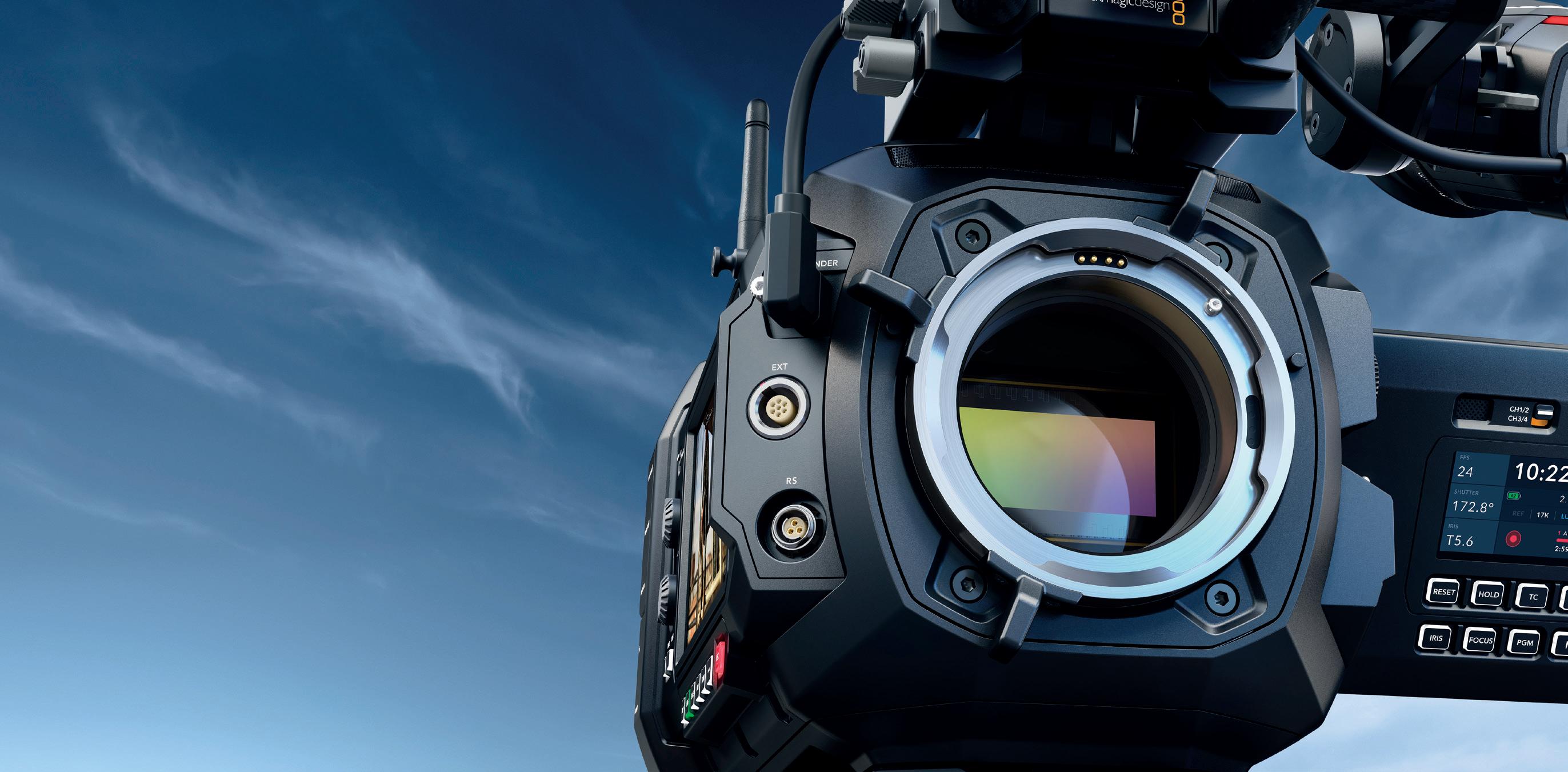
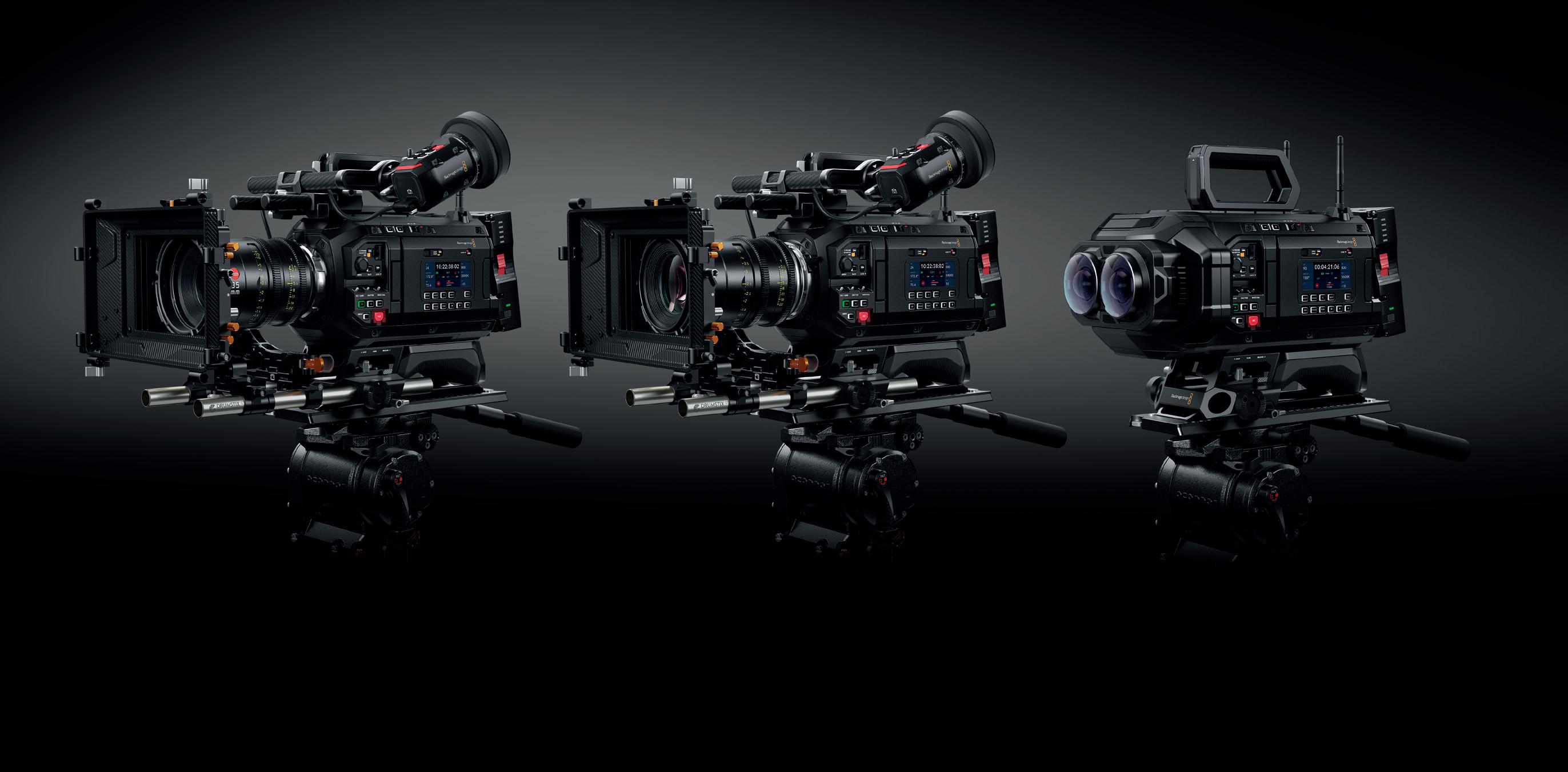

MONDAY










APRIL 7, 2025










































Producers of procedurals like ‘Fire Country’ explore the power of compelling protagonists








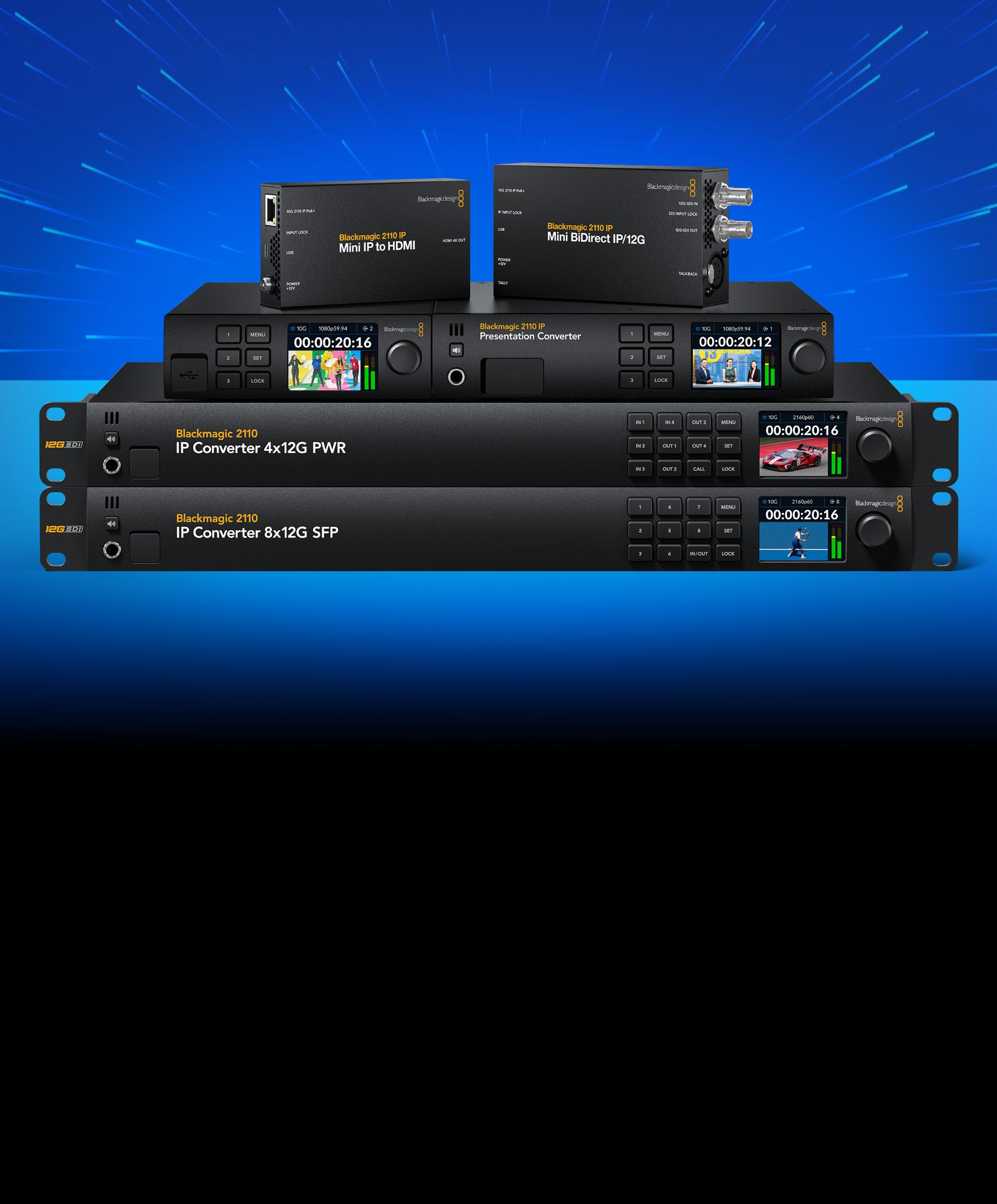
Now you can build affordable live production and broadcast systems with SMPTE-2110 video! Blackmagic Design has a wide range of 2110 IP products, including converters, video monitors, audio monitors and even cameras! You get the perfect solution for integrating SDI and IP based systems. Plus all models conform to the SMPTE ST-2110 standard, including PTP clocks and even NMOS support for routing.
The Blackmagic 2110 IP Converters have been designed to integrate SDI equipment into 2110 IP broadcast systems. The rack mount models can be installed in equipment racks right next to the equipment you’re converting. Simply add a Blackmagic 2110 IP Converter to live production switchers, disk recorders, streaming processors, cameras, TVs and more.
Conforms to the SMPTE-2110
Blackmagic 2110 IP products conform to the SMPTE ST-2110 standard for IP video, which specifies the transport, synchronization and description of 10 bit video, audio and ancillary data over managed IP networks for broadcast. Blackmagic 2110 IP products support SMPTE-2110-20 video, SMPTE-2110-21 traffic shaping/ timing, SMPTE-2110-30 audio and SMPTE-2110-40 for ancillary data.
Blackmagic 2110 IP Converters are available in models with RJ-45 connectors for simple Cat6 copper cables or SFP sockets for optical fiber modules and cables. Using simple Cat6 copper cables means you can build SMPTE-2110 systems at a dramatically lower cost. Plus copper cables can remote power devices such as converters and cameras. There are also models for optical fiber Ethernet.
One of the biggest problems with SMPTE-2110 is needing an IT tech on standby to keep video systems running. Blackmagic 2110 IP converters solve this problem because they can connect point to point, so you don’t need to use a complex Ethernet switch if you don’t want to. That means you get the advantage of SMPTE2110 IP video with simple Ethernet cables, remote power and bidirectional video.
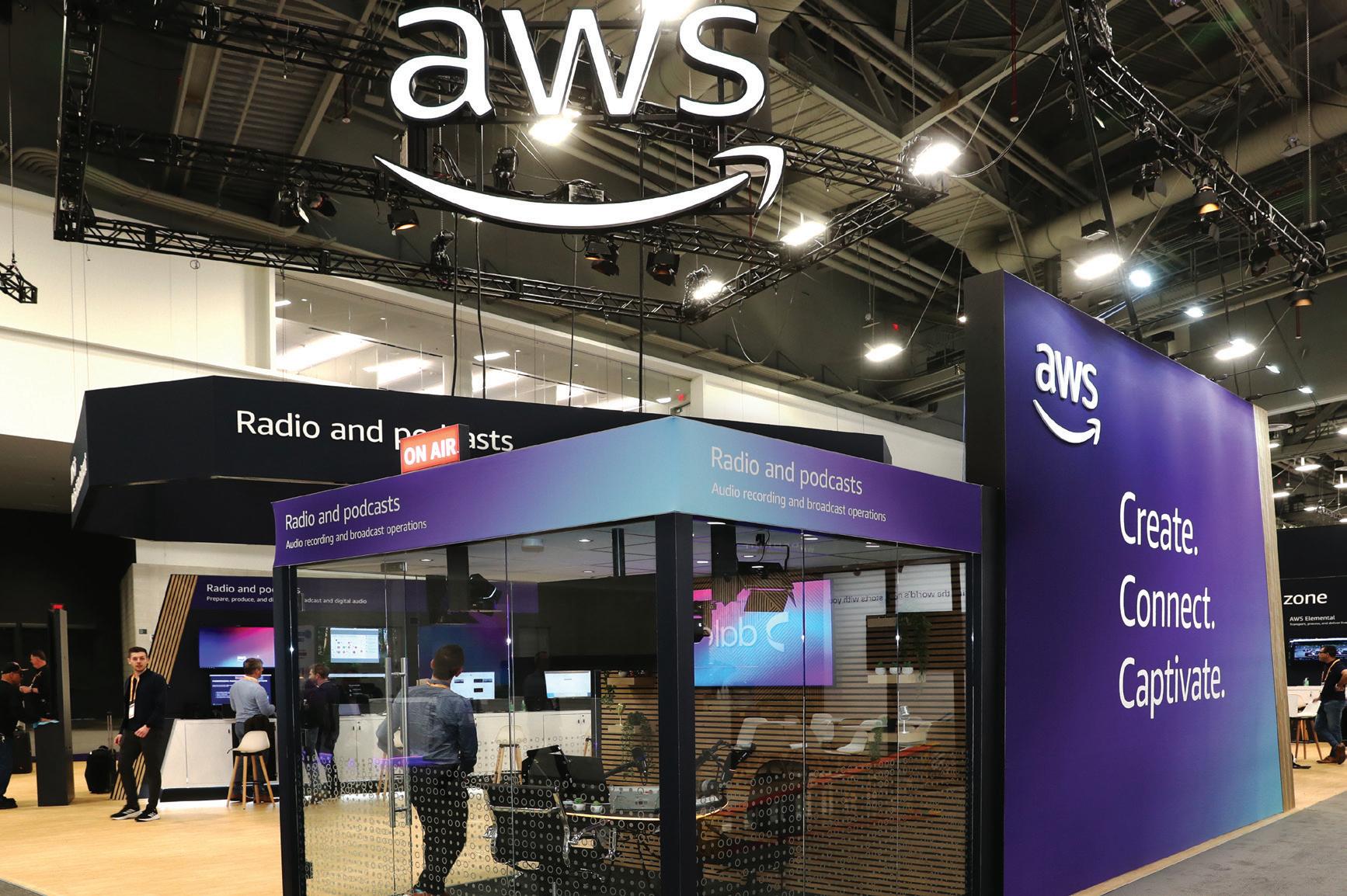
Solutions show how the technology can make an immediate mark on sports and other types of content
By George Winslow TV TECH
With artificial intelligence one of the hottest topics in the media and entertainment industries, Amazon Web Services is highlighting a host of new solutions and tech partnerships designed to show attendees how AI and cloud-based solutions can have an immediate impact on the media and entertainment industries, particularly in sports.
“We are very excited about the NAB Show this year,” said Tracy Geist, global head of media & entertainment, games and sports marketing at Amazon Web Services (AWS). “When we heard
that the show was going to have a big sports focus, we really leaned into that, because it fits in so well with many exciting things we have going on,” related to streamlining production, finding new ways to engage audiences, media convergence, monetizing content, data analytics and other areas, she said.
A lot of the AI discussion has focused on its future impact, and M&E is admittedly in the early stages of adoption compared to sectors like finance or health care. But much of AWS’s presence at the show is designed to be practical, with real-world demonstrations of how the technology can immediately begin to transform operations.
“I think we have reached the
point where the industry is having positive conversations around generative AI, as something that supports and advances the industry right now,” Geist said. This marks a notable change from two years ago, she added, when there were widespread fears that AI would reduce the demand for creators. “It is an enabler, not a replacement,” she said. Some examples of how the industry is embracing AI for sports can be found in several panels and sessions involving AWS executives and clients. In a particularly noticeable example, Warner Bros. Discovery Europe worked with AWS to recently launch the Cycling Central Intelligence Platform, which uses generative
AI and other AWS solutions to provide real-time data insights to cycling commentators that will allow them to provide much deeper insights into the races. That case study will be among the topics covered on Tuesday, April 8 (10:30 a.m. in W224-W225), during the panel “Beyond Broadcast: The Rule of AI, Data Analytics and Personalization.”
In another sports-themed panel on Tuesday, AWS and IMAX executives will be discussing “Closer to the Action: How IMAX and AWS Are Elevating Live Sports Streaming” (1:15 p.m., W224-W225).
During the show, Amazon also announced a major agreement with TwelveLabs that will make its multimodal foundation models, Marengo and Pegasus, available soon in Amazon Bedrock, a fully managed service that offers developers access to models from AI companies through a single API. The deal is notable because AWS is the first cloud provider to offer models from TwelveLabs and because TwelveLab’s models are designed to make video more searchable.
Other demos are spread out over the Convention Center at the AWS booth, the NAB Show AI Innovation Pavilion in the West Hall, the AWS Theater and other locations.
One of AWS’s biggest sportsthemed demos is an Esports Challenge, where four professional racing simulators in the lobby of the West Hall will allow attendees to experience the iconic Las Vegas Street circuit. Content from those simulators will be fed to a fully equipped production control room in the AWS booth, then used for a variety of different workflows, including the live race feed, data and analytics from the races and post-race interviews conducted by Amazon Nova, an AI model. The demo is designed to show how AI and cloud-based technologies can both streamline workflows and





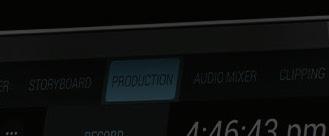


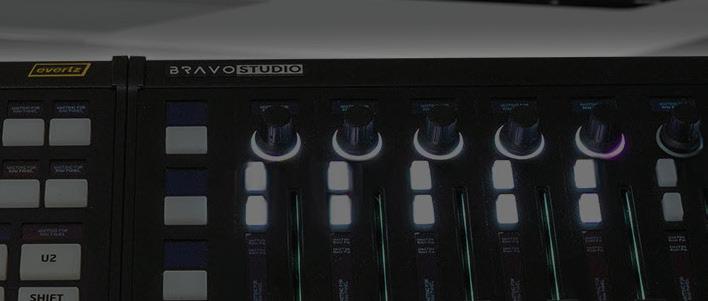
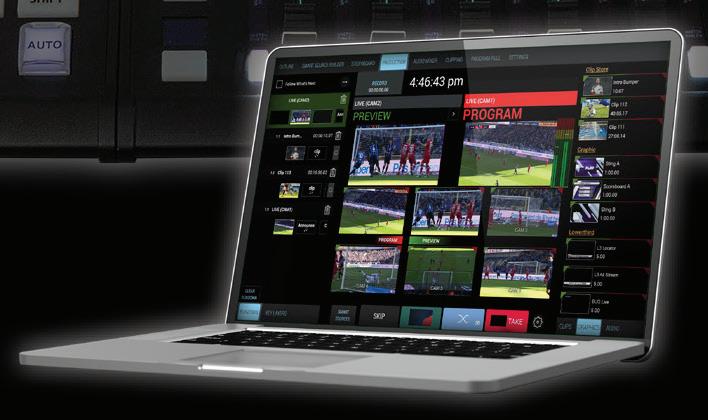



provide features that will better engage audiences, Geist said.
During the show, AWS will also offer hands-on demos of AI applications and the Amazon Novo foundation models for AI solutions (a first for NAB Show). It is also showcasing updates to Amazon Novo Reel for AI video production, augmented reality experiences and ATSC 3.0 broadcasts. Sinclair is using AWS for an ATSC 3.0 transmission of a 4K feed with Advanced HDR for broadcast to a local Las Vegas TV station, KSNV.
As part of those demos, visitors can use AWS’s generative AI to design a real-time racetrack, learn how to build and scale generative AI applications using Amazon Bedrock, and explore how the customizable generative AI-powered assistant Amazon Q can streamline their work.
The AWS Theater in the West Hall (W1343) will
feature 26 sessions from partners and clients demonstrating deployments and applications. Featured participants include Arc XP, Avid, Beamr, Bitmovin, Coactive, Fabric, GeoComply, Hydrolix, IPV, LucidLink, LTIMindtree, Mediacube, the National Hockey League (NHL), New Relic, Orange Logic, Paramount Studios, Presidio, Quickplay, Sinclair, Synamedia, TwelveLabs, Virtusa, Wondery and more. Additional demos involve radio, podcasting and innovative audio solutions. “This is actually the first time that we have had a story focused on audio and radio,” Geist said. Using AWS Partner Riverside. FM’s platform, AWS will record a live podcast. It will also operate an all-day automated radio broadcast with preprogrammed content. In addition, attendees will get a look at how AWS Elemental Media Services and Amazon CloudFront support podcast localization. ●
NAB Show attendees will find Amazon Web Services hosting a wide range of demos and events offering new insights into the future of the industry at the AWS booth, the AI Innovation Pavilion, the AWS Theater and in a variety of panels and sessions. Other highlights include:
Visitors to the AWS booth in West Hall will find a host of demos focusing on AI, live cloud production, audience engagement, innovative audio solutions and other technologies. Key demos include:
Live cloud production in action: Demonstrating a modern broadcast, the AWS booth will feature a fully functional production control room that gives a direct view into pro live cloud production workflows. Engage audiences in new ways: Addressing the changing viewing habits of global audiences, AWS will demonstrate how to use cloud and generative AI to capture and retain viewers, while delivering more interactive and immersive experiences.
Connect with experts at the Builder Zone: Attendees that prefer to develop bespoke solutions can chat with AWS experts on architecting featured services to solve any M&E challenge.
Located in the West Hall Lobby, the live Esports Racing Challenge will feature four professional-grade racing simulators. Using content created from the simulators and AWS Elemental Media Services, the activation highlights the possibilities of sports broadcasts using cloud solutions and generative AI. It is presented by AWS and NVIDIA and produced by Tagboard.
EXPLORE AMAZON NOVO


AWS will let attendees get hands-on experience with the latest generative AI services from AWS in the NAB Show AI Innovation Pavilion in West Hall. For the first time at NAB Show, AWS will demonstrate state-of-the-art Amazon Nova foundation models that allow companies to harness the full potential of their content through multimodal AI solutions. Attendees can also learn how to build and scale generative AI applications using Amazon Bedrock and explore how the Gen AI-powered assistant Amazon Q can make their work easier.

AWS executives will be participating in two panels on Tuesday: “Beyond Broadcast: The Role of AI, Data Analytics and Personalization” (10:30-11:15 a.m. in W224-W225); and “Closer to the Action: How IMAX & AWS Are Elevating Live Sports Streaming” (1:15-1:45 p.m. in W224-W225).
The AWS Theater, located in West Hall (W1343), features a packed schedule with 26 sessions from customers and partners covering a wide range of topics, including cloud production as well as generative AI in media, games, monetization and more.
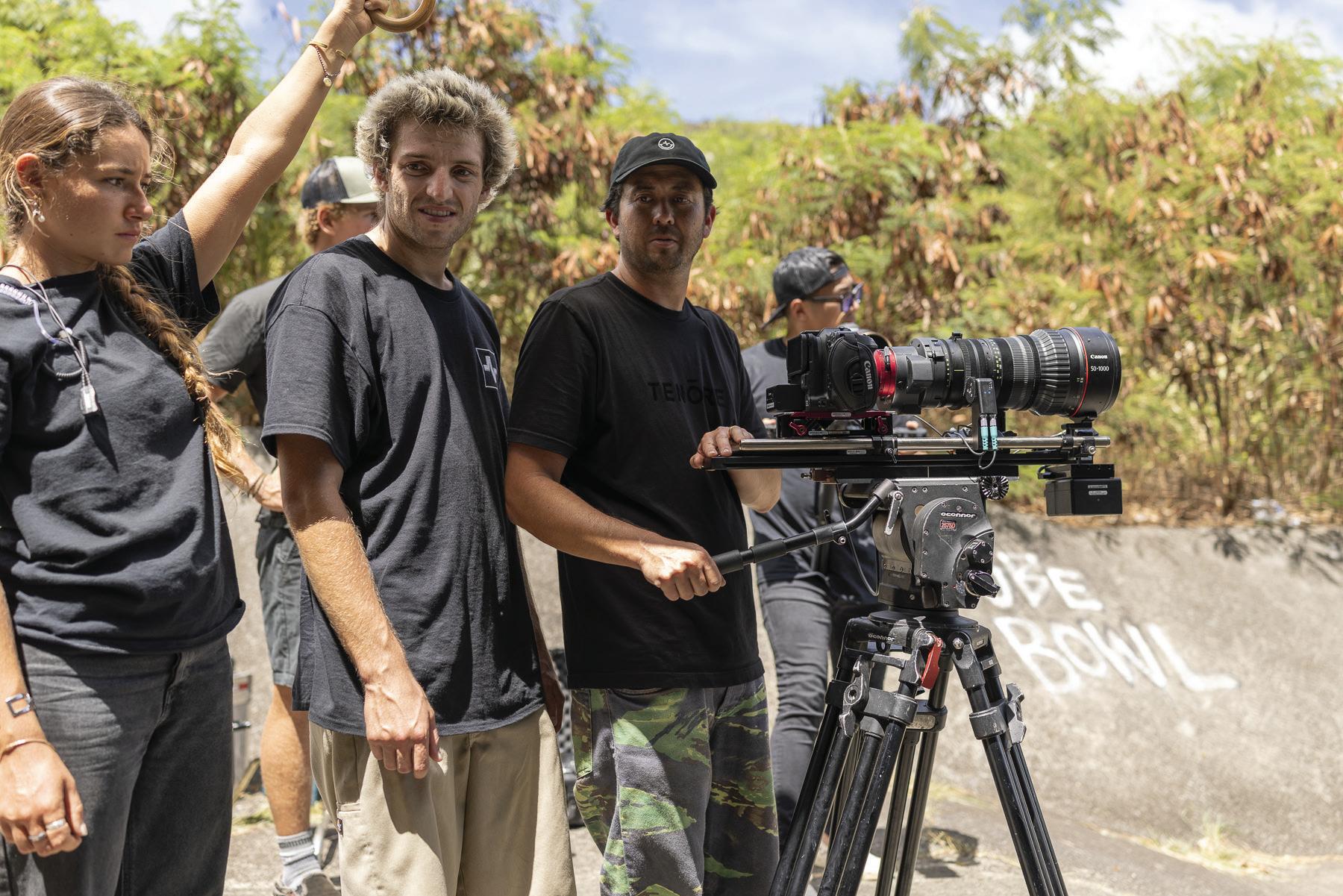


Writer/producer David S. Goyer will use AI platform Incention in his new sci-fi film
By Jenny Priestley TVBEUROPE
Best known for his work on the “Blade” movies, “The Dark Knight” trilogy and Apple TV’s “Foundation,” writer/producer
David S. Goyer is now turning his attention to the future of Hollywood and the impact of artificial intelligence on creativity.
Earlier this year, Goyer announced plans to make the sci-fi movie “Emergence” with Incention, an AI platform that aims to bring artificial intelligence and blockchain to Hollywood. The aim of Incention is to act as a partner to filmmakers, helping them to create narratives and generate full videos.
Speaking at the “AI, Hollywood and the New World of Storytelling” session, Goyer described himself as a “tech-adjacent” creative. Revealing that he’s been approached a number of times over the last five years by a variety of blockchain and AI companies, he said he chose to work with Incention because of the idea and the people involved.
“I don’t have to do this,” he admitted. “I could continue doing what I’ve been doing, but what I’ve been doing is also frustrating sometimes. I’m interested in disruption, new models and new platforms.
“I’m sort of AI-agnostic,” Goyer added. “I know it’s not going away. I thought it would be
interesting to see how I can add a tiny hand in seeing if there are actions and applications where it might be helpful.”
Goyer has been vocal in warning about the dangers of letting AI run amok in Hollywood and where that could lead. “I think there’s been a lot of excitement on the studios’ part that they can train all these AI models on the backs of all the creations we make, and they can just type prompts and create TV shows and movies, and they can lower costs and not have to pay royalties.
“Some of the studios are realizing they can’t do that. So I do think some of the euphoria has come down.”
While there is still potential for the doomsday scenario he’s previously warned of, Goyer said he decided to become involved with Incention after realizing that AI is not going away. “In a small way, I can take part in it and see if I can build some guardrails and some use cases that aid the creator, or I can just stick my head in the sand,” he said.
Goyer described AI as an emerging technology that will “absolutely change not just the entertainment industry, but the way we live. We don’t know all the applications where it will be, because they haven’t been invented yet. So, I find it both scary and exciting.”
But despite all the hype around AI and the impact it could have on Hollywood, Goyer believes the technology is a long way from being able to make a film that packs the crowds into a theater. He admitted to having experimented with AI image and text generators, even using one to
In a small way, I can take part in it and see if I can build some guardrails and some use cases that aid the creator, or I can just stick my head in the sand.”
DAVID S. GOYER
write a script for Foundation. “It was f***ing awful! It was ridiculous. It didn’t make any sense,” he said.
“But one of the things I have used it for is when I’ve written a three-page scene with a lot of big monologues. I asked AI to give me six different summaries, and it worked. There are definitely use cases where it’s helping me as a creator,” he added. l
Dolby ATMOS
Dolby Digital
Dolby Digital Plus
Dolby True HD
Dolby Surround
DTS.DTS:X

Outputs 16 channels of Dante audio
Optional Rackmount Supports POE+
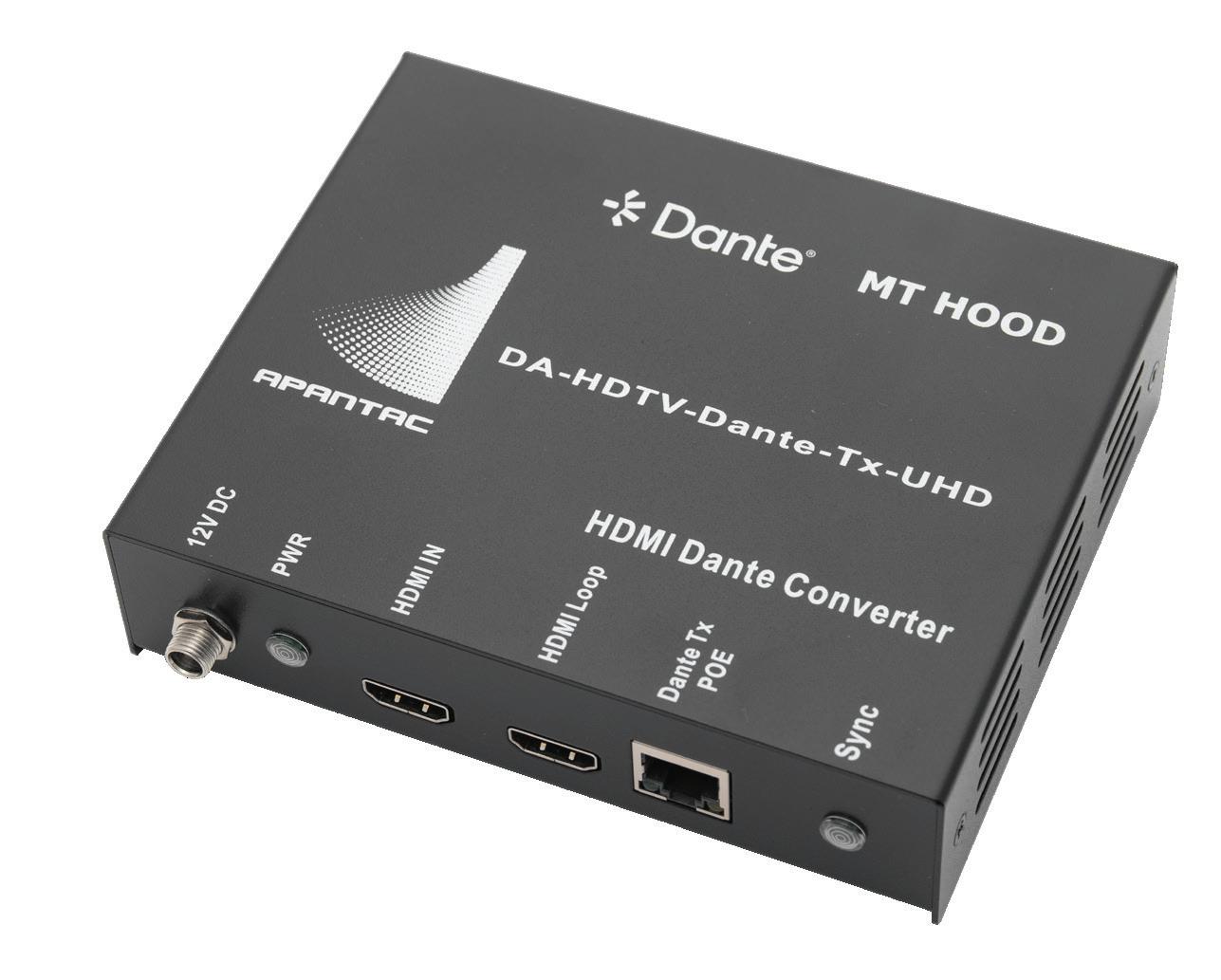
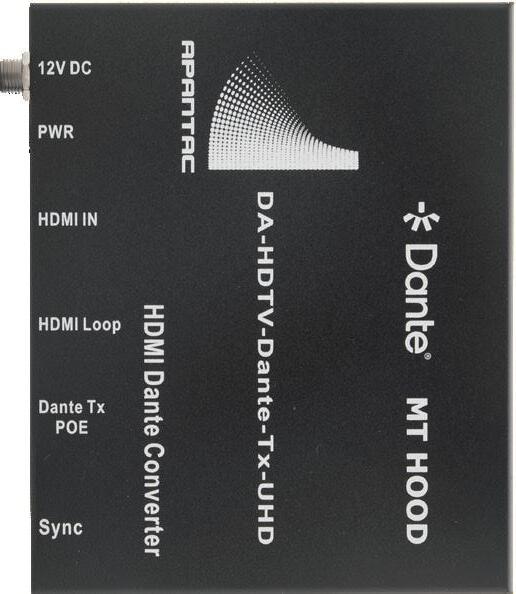
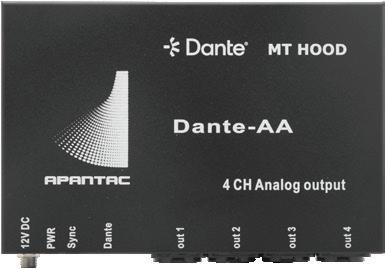
N828 | At the 2025 NAB Show, Telemetrics is showing new software and hardware products that boost operational capabilities across its entire portfolio of robotic camera control systems. These notable advancements feature upgrades to the Telemetrics Wireless

OmniGlide Robotic Roving Platform. Additionally, ultra-wideband sensors have been integrated, allowing the rover, as well as the TG4/5 camera trolley and track systems, to move with greater precision and safety.
New to the Telemetrics product line, TeleTags Wearable Ultra-WideBand Sensors are about the size of a cellphone and can be inconspicuously attached to set pieces and even talent to increase their tracking accuracy, which Telemetrics has been perfecting for the past few years. TeleTags will allow the RCCP-2A control panel to utilize Studio View, a precise 3D real-time visualization of the studio, to show the positions of objects and people in relation to the robotic camera pedestals and track systems in use.
W1417 | In addition to many updates to the LogServer suite, Mediaproxy will introduce Monwall Server, a new product that extends its existing interactive multiviewing applications to provide traditional output streaming. Monwall Server allows for the generation of mosaics and the output of various low-latency formats. In addition to conventional multiviewing applications, this versatile solution offers customers a highly cost-effective approach to software-based multiviewing and hybrid workflows, significantly reducing the need for more cloud instances.
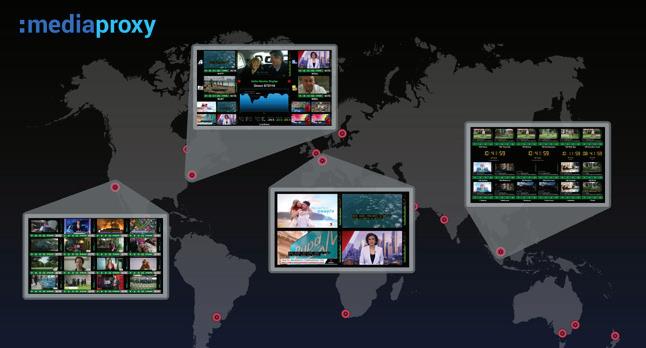
Also at NAB Show, Mediaproxy is launching a new cloud-licensing feature, empowering customers to deploy Mediaproxy systems as needed. This approach enables a pay-per-use model, ideal for customers with nonlinear programming or those looking to temporarily extend their usage for special events such as live sports. This flexibility also ensures that customers have the option to easily scale their operations temporarily up or down as the need for more monitoring points arises.
N506 | Grass Valley is at the 2025 NAB Show with a reimagined booth presence in the North Hall that offers a refreshing new look and layout to fully demonstrate the integrated GVMU ecosystem that covers every stage of the production workflow, from image capture to delivery. From the power of the AMPP platform to the renowned LDX 100 Series camera fleet, production switchers and media infrastructure, Grass Valley will be showcasing the full suite of pioneering tools driving the new media revolution.
Making its debut at NAB Show is the new LDX 180 camera, which features the new Super35 Xenios imager that delivers stunning cinematic depth-of-field, with enhanced definition and vibrancy. Featuring all of the hallmarks of the LDX Series — including Creative Grading, ensuring artistic control across the lineup — the LDX 180 blends cinematic depth with the speed and precision of live production to redefine how stories are told.
W3813 | BitFire is launching BitFire Platform, a fully integrated suite of cloud-production tools and IP transmission technologies designed to streamline workflows for broadcasters and content creators.
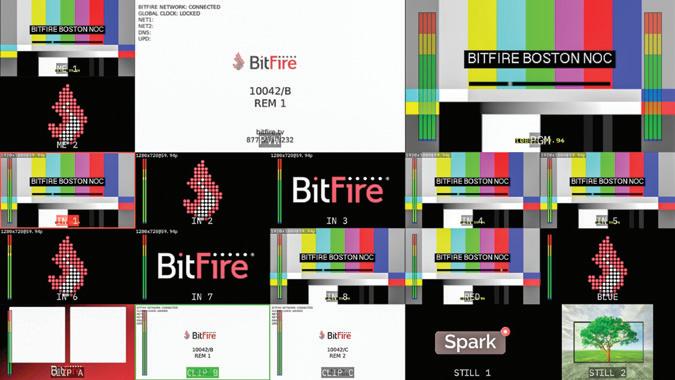
Within the platform, BitFire Spark Production Environments enable users to design, deploy and manage live productions with unprecedented speed and flexibility. From a single interface, production teams can build in switching, audio mixing, replay, intercom, and multiviewing, quickly configuring cloud production tools in an environment tailored to their specific needs.
The BitFire Inferno Command Center gives broadcasters and other content producers all the tools they need to build and manage their cloud-based productions and transmissions.
FireBridge Connect enables secure, browser-based access to the BitFire Platform, making it easy for remote team members to step into the production workflow. Supporting the entire production workflow, BitFire Transport delivers broadcast-quality video and audio over IP with ultralow latency and synchronized multifeed delivery.
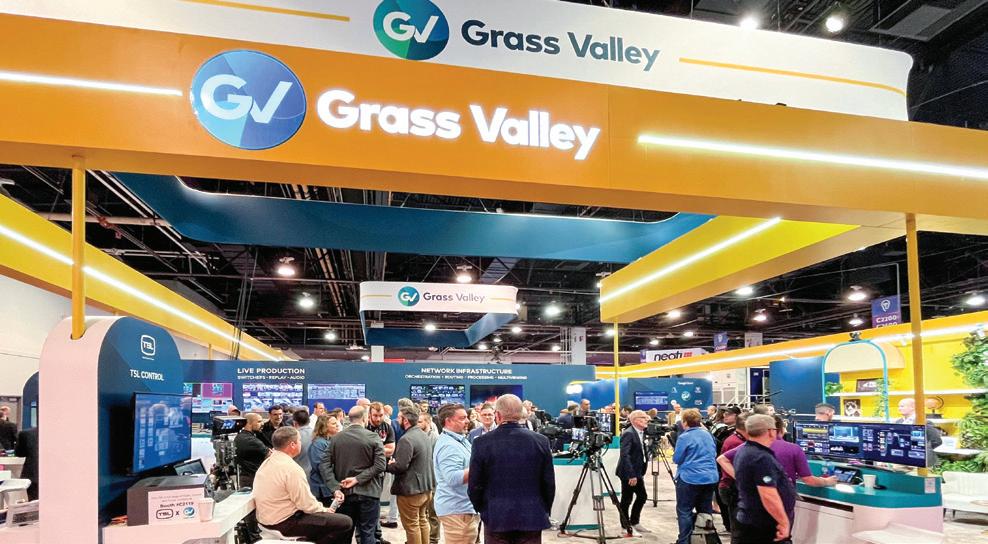
W1743 | ENCO heads into NAB Show with big plans for its enCaption automated captioning and translation solutions, including a live demonstration of its speaker identification and multilingual translation features on the show floor. In its West Hall booth, ENCO will show a powerful new AI-driven voice-fingerprinting system for enCaption that detects and identifies every speaker in real time based on each person’s unique vocal characteristics. It will also support the live stage captioning of panels and lectures for the fourth straight year, with enCaption services active on five stages across two exhibit halls. Plus, ENCO will offer real-time translations to mobile devices via its new enTranslate Mobile platform at the Main Stage. Translations in Spanish, French, Korean, Mandarin and Portuguese will be made available to spectators via posted QR codes at the entrance.
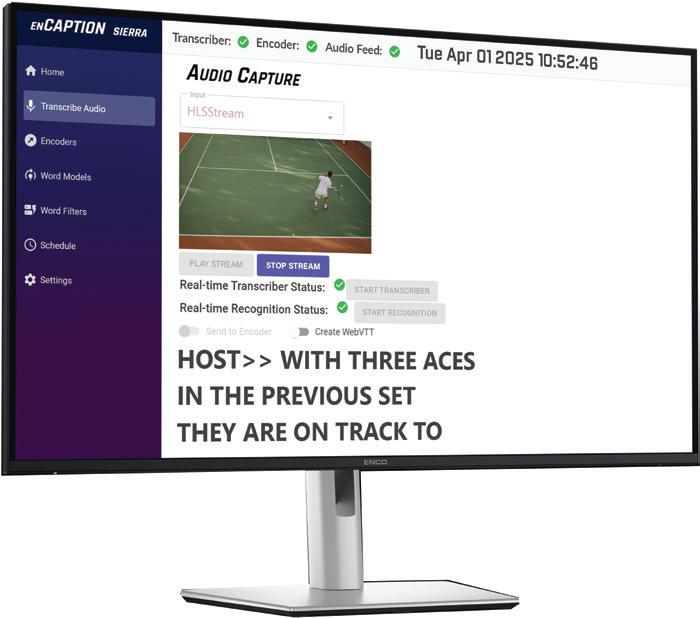



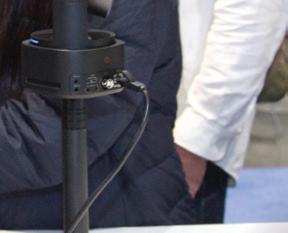
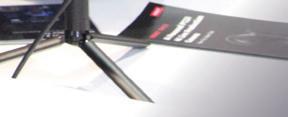

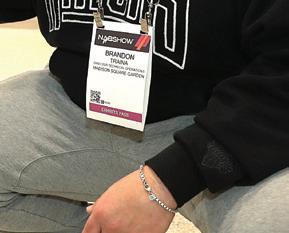


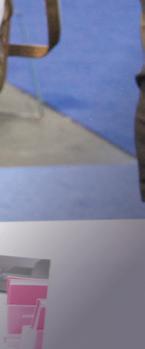

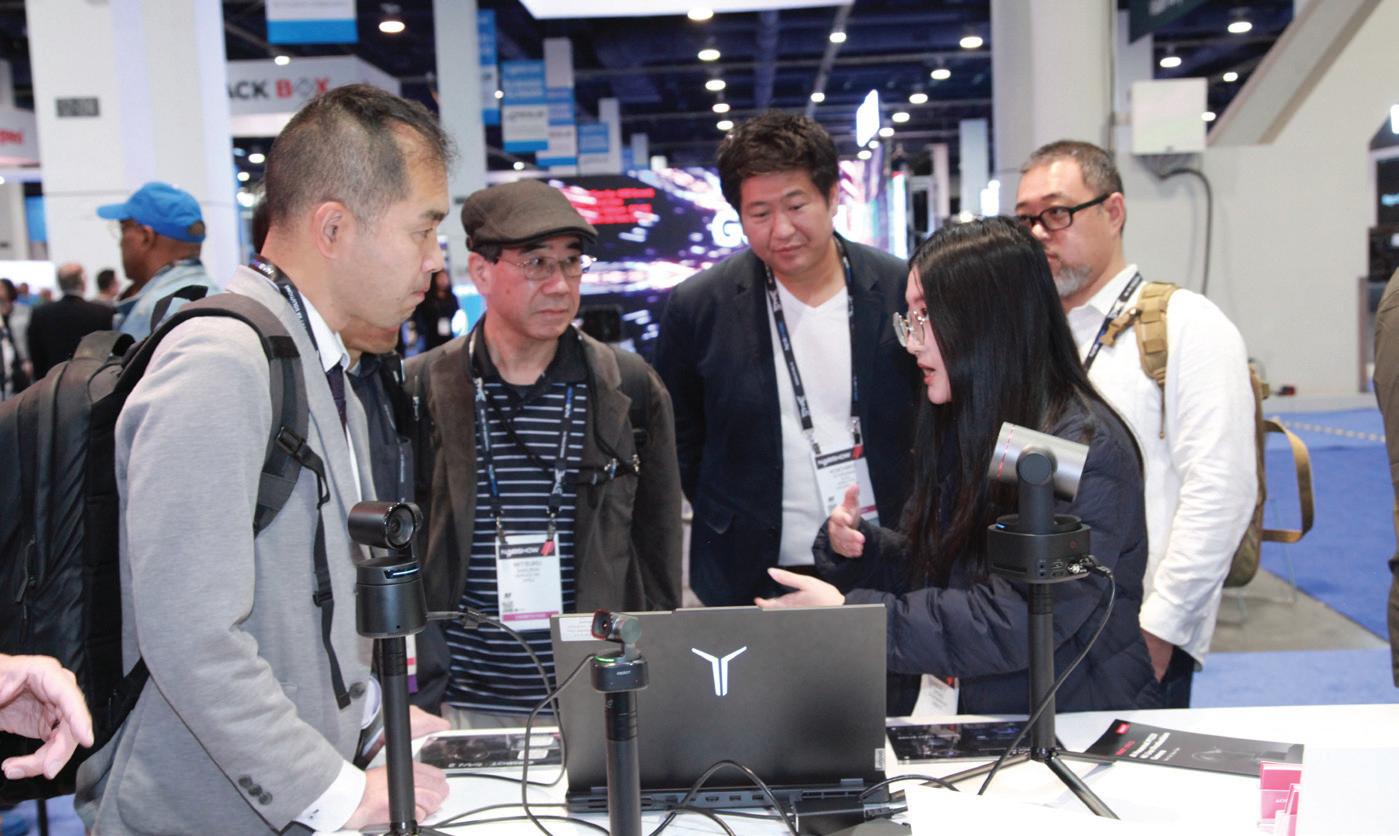
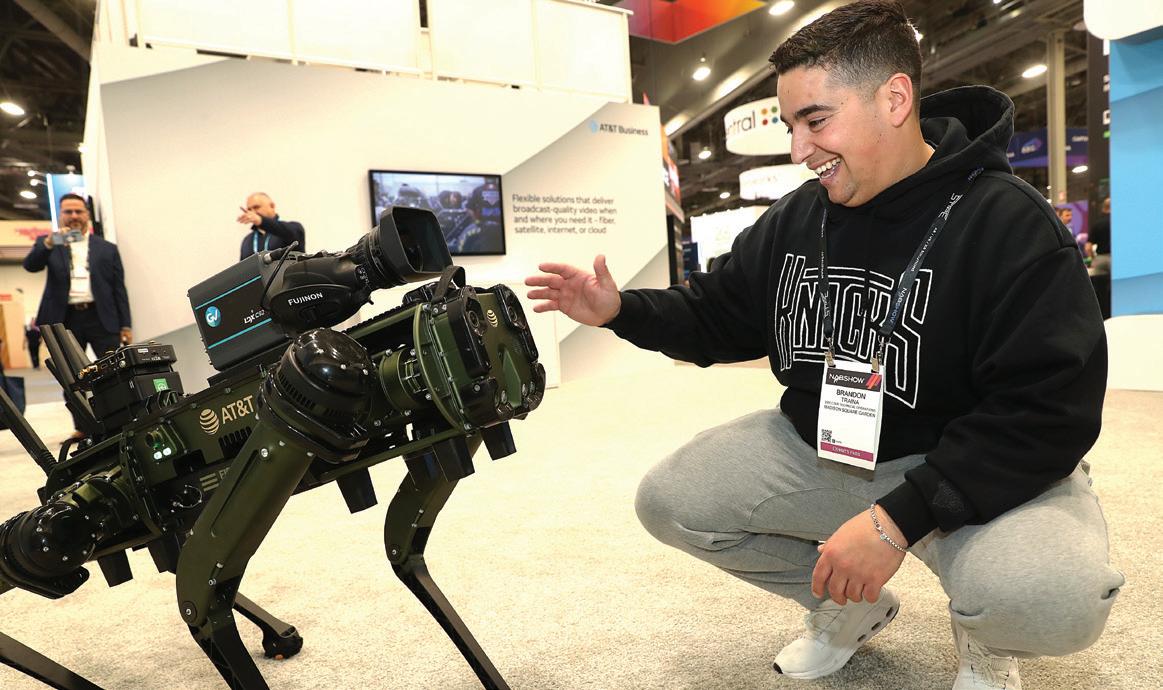




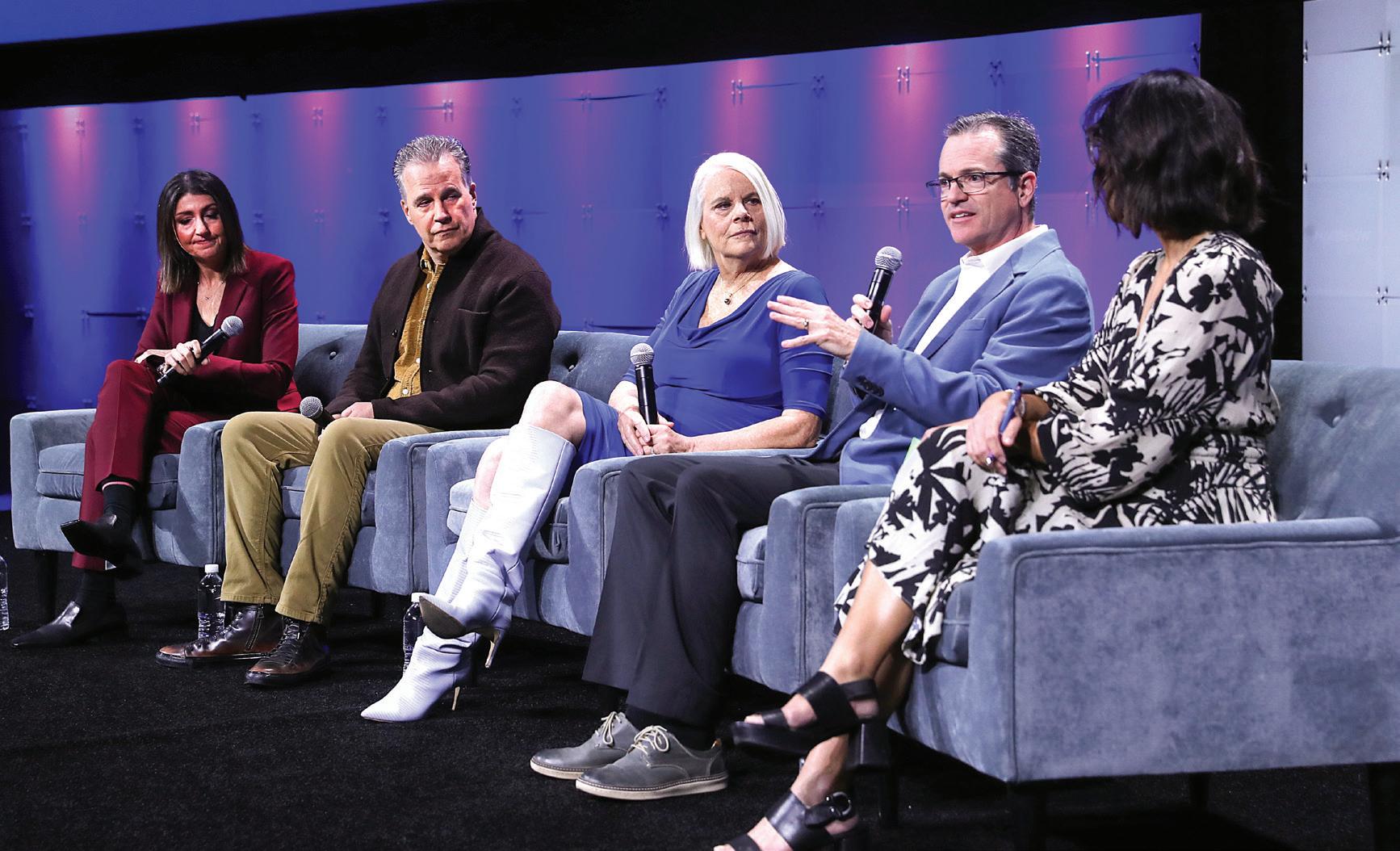
Executives behind CBS’s ‘Fire Country’ say compelling protagonists keep viewers invested
By Alyson Trager SMARTBRIEF
The procedural show on broadcast television isn’t a new concept, but, according to the team at CBS, audiences are craving the long-term investment in characters that a limited series on streaming services can’t compete with. This was the focus of the panel “ ‘Fire Country’ and the Boom of Broadcast Procedurals (Again!)” at NAB Show on Sunday.
Broadcast procedurals like “CSI: Crime Scene Investigation” and “NCIS” have long focused on the satisfying formula of problem, investigation and solution, typically in a 42-minute fashion. But in the age of streaming giants pulling audiences away from linear television, procedural producers, like
“Fire Country” co-creators and executive producers and panelists Joan Rater and Tony Phelan, have found that investing in character development is the best way to keep audiences drawn to shows.
“Everybody can relate to redemption stories and the need for second chances,” said Rater of her show, “Fire Country,” where a convicted felon fights fires to reduce his prison sentence in his small hometown — a notable break from the norm of big-city dramas.
“[The show] is aspirational in terms of family and community and that, I think, has really resonated with people,” Phelan added. Both creators agreed that, now more than ever, writing characters that audiences tune in to see every week, for upwards of 20 episodes a season, is the main focus of
building out these shows.
The actual procedure of the procedural isn’t why audiences resonate with CBS shows. Rather, Bryan Seabury, executive vice president, head of content strategy and drama development at CBS Studios, asks himself if the show is built “to go the distance.”
“Other shows … they’re limited, they’re designed in a different way,” Seabury said. “Here, the questions we ask in a pilot are much more open-ended and hopefully, you’re planting seeds that go for seasons.”
Week after week, audiences can identify with these characters as they invite them into their homes, and in some ways, become part of the family, as Phelan put it. The writers can push the bounds of storytelling
by allowing characters to grow, experience setbacks and change over a more authentic timeline, rather than in eight episodes, according to Rater.
Though differentiating themselves from streaming services, the CBS panelists couldn’t ignore platforms like Netflix, which offer viewers binge-able content at a clip. However, Yelena Chak, executive vice president, scripted development at CBS Entertainment, found that Netflix can be used as a promotional tool.
“The people who found it on Netflix, they watched the first season there, which then drove them to Paramount+ to watch season two, which then in turn drove them back to CBS broadcast network for season three,” Chak said. “So it brought people right back to our ecosystem.”
Seabury also noted that this era of television gives executives the ability to see ratings and viewership not only on premiere night but on delayed viewing, on the network’s streaming platform and then later, on a third-party streaming service like Netflix, which improves overall results.
Case-in-point: In the month that season one of “Fire Country” was released on Netflix, 3 billion minutes of the show were viewed between Netflix and Paramount+.
The long-term strategy doesn’t stop there. In the coming months, the “Fire Country” spinoff “Sheriff Country,” which also focuses on the character development of a small-town sheriff dealing with personal and professional dilemmas, will premiere on CBS. The spinoff will not only serve as a marketing vehicle for the original show by way of crossover episodes, but panelists agreed that this spinoff is a testament to the deep character development of procedurals that keep audiences engaged with whatever universe is being created. l

Grass Valley Executive Chairman
Louis Hernandez Jr. announced the appointment of new CEO Jon Wilson at the company’s Grass Valley Forum event on Saturday, April 5.
Wilson has been with Grass Valley since 2023, serving as president and chief operating officer. As Wilson received the key to the Grass Valley Media Universe from Hernandez, he shared his vision for its future: focusing on the customer experience and creating solutions that span the entirety of the company, from AMPP to hardware.
Ian Fletcher, chief technology officer, and Adam Marshall, chief product officer, announced the launch of several products to help
Wilson achieve his goal of increasing the company’s connective ecosystem of hardware, software and cloud technology.
Grass Valley’s new LDX 180 camera has a 10K imager, offering a cinematic lens with very little noise. In combination with the wireless LDX 110 RF and the roaming freedom of the LDX 135/150 5G, the 100 camera series seamlessly blends together innovative transmission capabilities through the base station to drive down installation efforts and infrastructure costs.
“With the introduction of the 180 … you have the creative freedom with our 100 Series product form to pick and choose the right camera for any shot, any emotion, across the
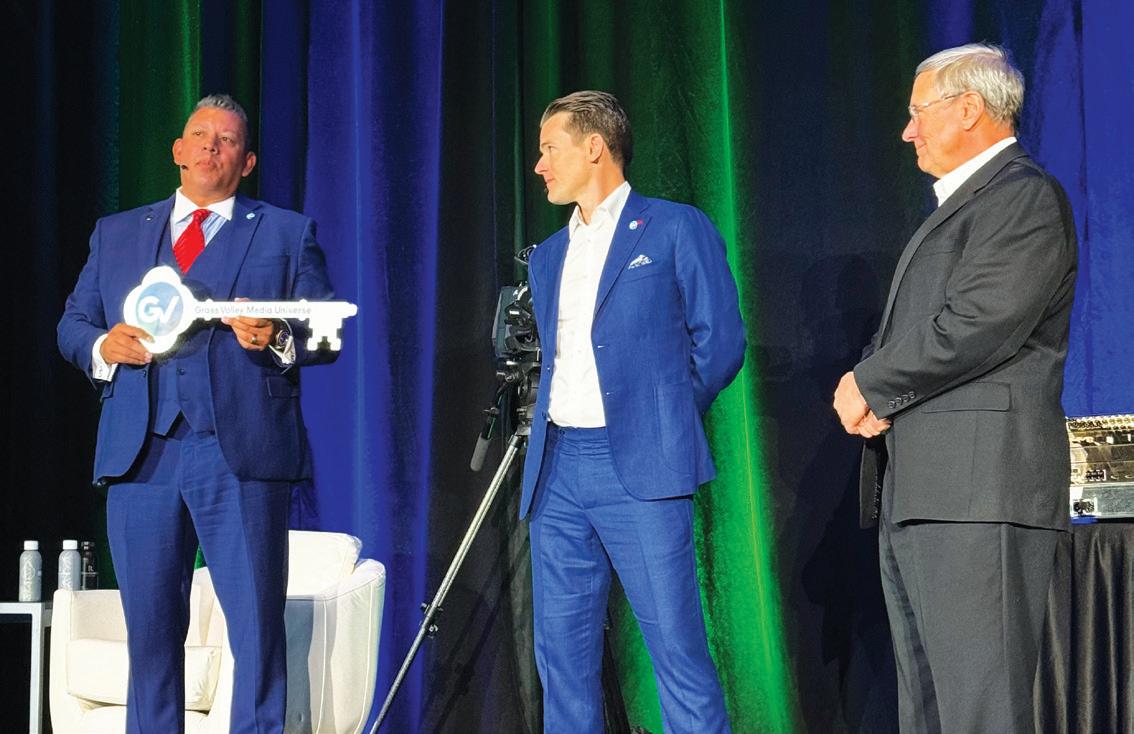
entire portfolio with the same speed and ease,” Marshall said.
Live production was again emphasized with the smallest production switcher available, the new K-Frame VXP, a 5-rack-unit switcher that includes a 48 x 24 native UHD, IP and SDI I/O in a single form factor. In line with Grass Valley’s goal of connectiv-
ity, the VXP uses the same I/O as the rest of the range of switchers, so users can scale up or down based on production needs.
All products will be available for viewing at the Grass Valley booth (N506) throughout NAB Show, according to Marshall and Fletcher. l — Alyson Trager, SmartBrief
FOR-A has introduced its IMPULSE solution, which consolidates functions provided by FOR-A products into one host machine. IMPULSE (Integrated Media Platform with UnLimited StructurE) features signal processing, multiviewer, switching, graphics, audio mixing and a media player as software function nodes.
Operators can connect nodes by using the platform’s graph editor to create production pipelines. Because it’s a software-based solution, it’s easy to reconfigure the pipelines depending on the specific application, FOR-A America President Satoshi Kanemura said.
“Until recently, live production has required purchasing large-scale physical equipment and combining a variety of devices,” Kanemura said. “We are introducing a fully software-based platform that’s easy to change as you like depending on the application.”
There were several issues FOR-A wanted to address immediately, he added: the shortage of technical talent, efficient use of equipment resources and streamlining workflows. The system supports distributed production environments, enabling collaboration across multiple locations and allowing remote control and adjustments from anywhere, Kanemura said.
Kanemura introduced past SMPTE President Robert Seidel, whom he called “Mr. ST 2110.” Seidel said that when SMPTE was just starting to roll out the 2110 family of standards, it was envisioned facilities would be connecting a series of boxes all strung together over an IP network.
“But things have changed a little bit in technology,” Seidel said. “We’ve seen a massive improvement in processing power within GPUs

FOR-A America President Satoshi Kanemura, left, with SMPTE Past President Robert Seidel.
[that] enables a whole new thinking and process that will allow us to process a lot more in a single box. Why not move all of these other functionalities into the box?”
FOR-A said the IMPULSE platform can be deployed seamlessly on-premises, in data centers or within public cloud environments. For cloud deployments planned for future delivery, IMPULSE will allow users to scale instance sizes on demand. l
— Mark Hallinger, NAB Show Daily

Chief Technology Of�cer Appear
Q. What technology trends will you be following most closely at NAB Show this year?
A: I will be following the evolution of the reality of compute-native software tools for live production. This is a critical area for industry. The engagement of the industry in creating an open and interoperable ecosystem for compute-native live production software tools is a current passion of mine. I am also very interested in where the industry is heading in terms of ideal architectures for remote/distributed production and hybrid hosting. And of course, looking at the AI tools that will provide a real and tangible benefit to live production workflows.
Q. Appear is a longtime exhibitor at NAB Show. What brings the company back to this event each year?
A: NAB is an invaluable way for us to connect with so many in the industry — customers, potential customers and peers! Having an event of sufficient critical mass to pull everyone together is such an important part of the life of our industry — and NAB really achieves that.
10-11:30 a.m.
Join NAB President and
CEO Curtis LeGeyt as he welcomes attendees and sets the stage for an exciting show experience.
Then, don’t miss an exclusive fireside chat with Stephen A. Smith — star of ESPN’s “First
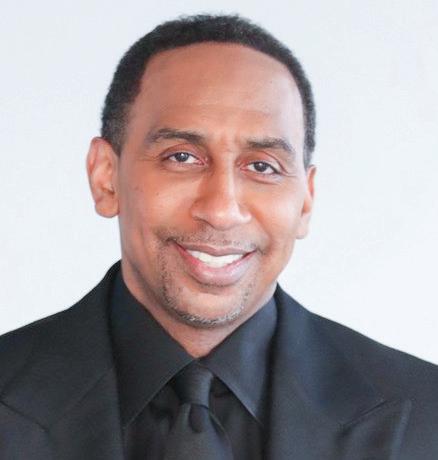
Take,” host of “The Stephen A. Smith Show” and New York Times bestselling author of “Straight Shooter.” Smith will share his unfiltered insights into the evolving media landscape, the future of sports entertainment and his rise to becoming one of television’s most influential voices.
Mike McVay, president of McVay Media Consulting and a 40-year programming veteran with extensive experience in content creation, talent coaching and media strategy, will interview Smith.
Also at the NAB Show Welcome, syndicated radio personality
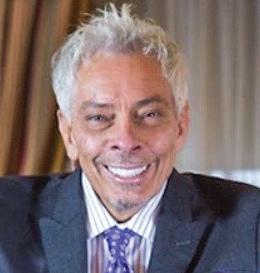
Delilah will receive the fourth annual Insight Award from the Library of American Broadcasting Foundation. Delilah’s Premiere Networks-syndicated radio show is listened to by some 8 million listeners a week on 160 stations nationwide. Known as “radio’s Oprah,” Delilah creates a sense
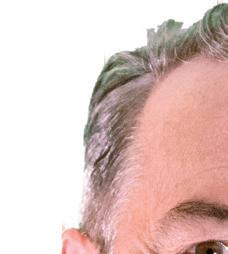

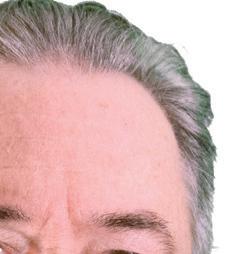

of comfort and companionship for listeners, sharing inspiring stories, song dedications and heartfelt advice.
The Insight Award recognizes an individual or organization for an outstanding artistic or journalsociety.

Past recipients have included actor, director, and educator LeVar Burton as well as CBS News series “60 Minutes” and award-winning producer and journalist Soledad O’Brien. ●


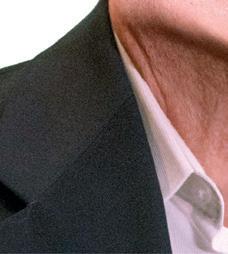






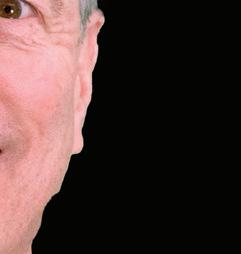










Conversational AI is advancing beyond basic chatbots into intelligent agents that understand context, personalize interactions, and autonomously engage viewers in real time. This evolution will transform TV content and advertising into dynamic connection points for highly engaged audiences and consumers. As scripted, unscripted, and live TV become catalysts for one-on-one conversations, the engagement value of television will grow exponentially— creating deeper, more interactive, and personalized viewer experiences.”


GERARD KUNKEL | FOUNDER AND MANAGING PARTNER,



When it comes to broadcasting HDR video, one format delivered an incredible experience at the biggest sports event of the year.
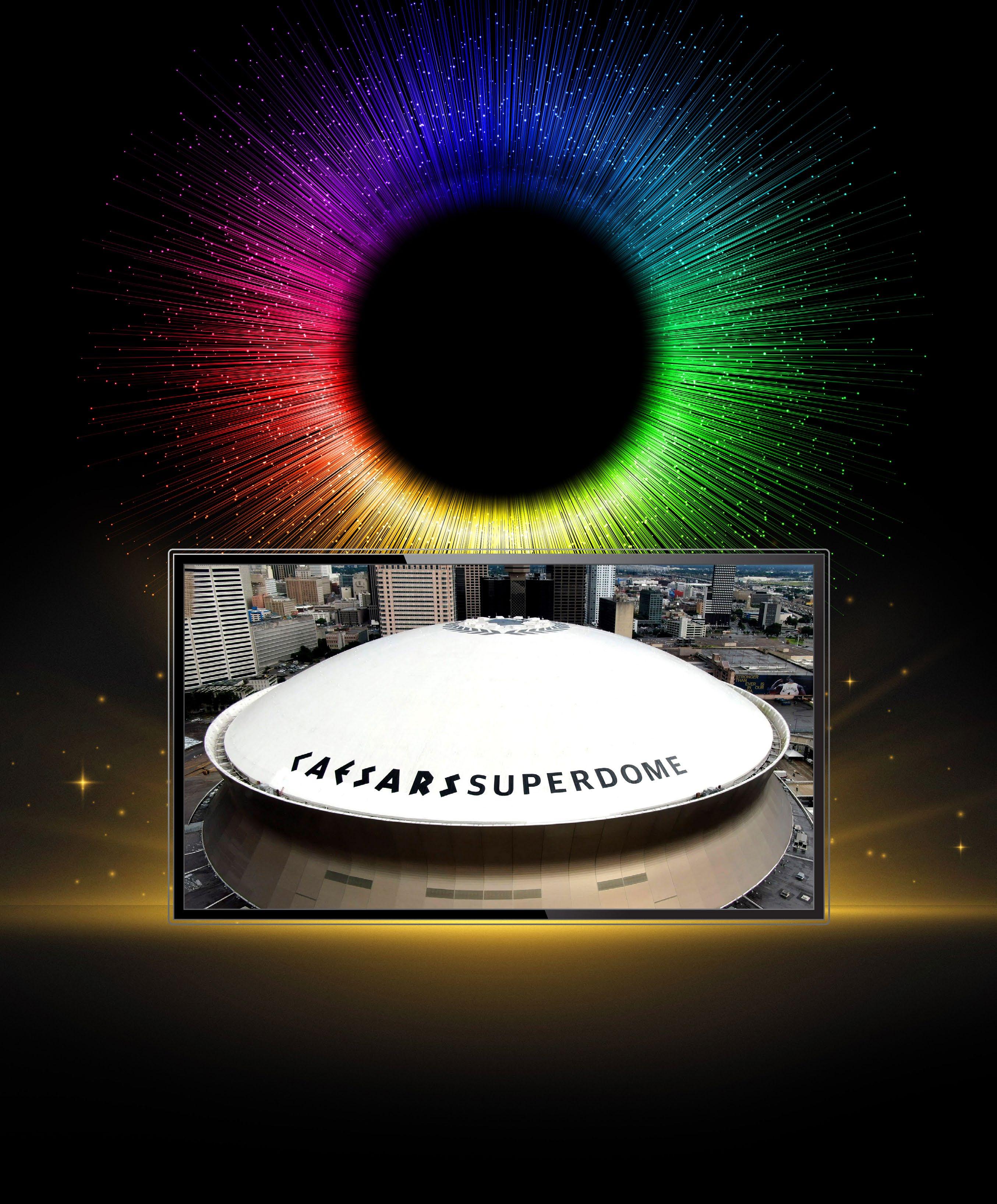

Gray Media has already launched NextGen TV service in a number of markets. And many of these stations use HDR10+ to upconvert their programming, for an outstanding entertainment experience.
Additionally many of Gray’s FOX affiliates, including their flagship station WVUE-TV in New Orleans, recently broadcasted the Big Game in HDR10+, to the delight of video enthusiasts everywhere.
To experience HDR10+, visit booth W3056 at the NAB Show. Or to receive our whitepaper, go to hdr10plus.org
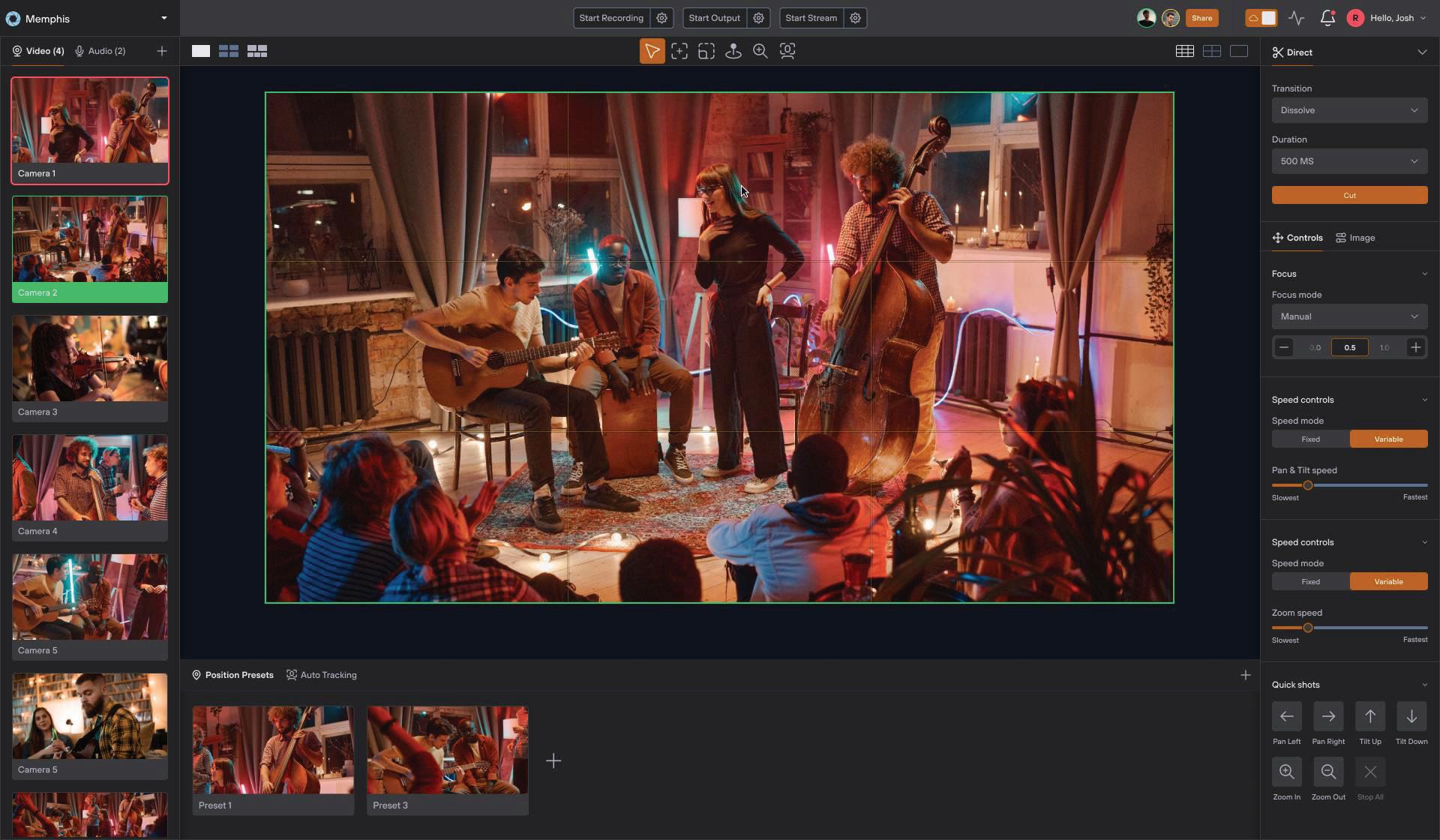
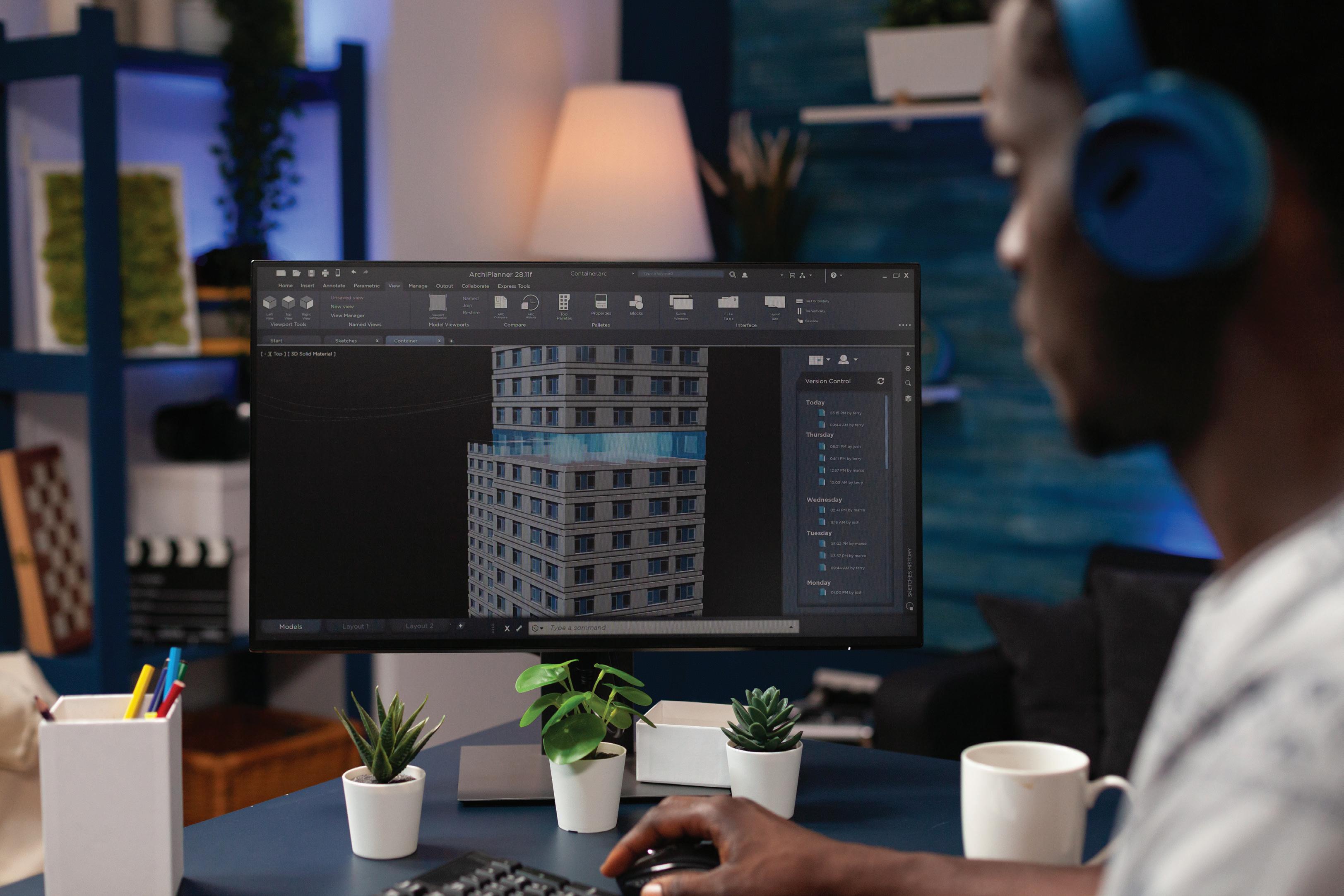




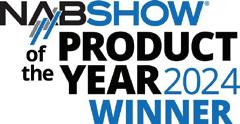
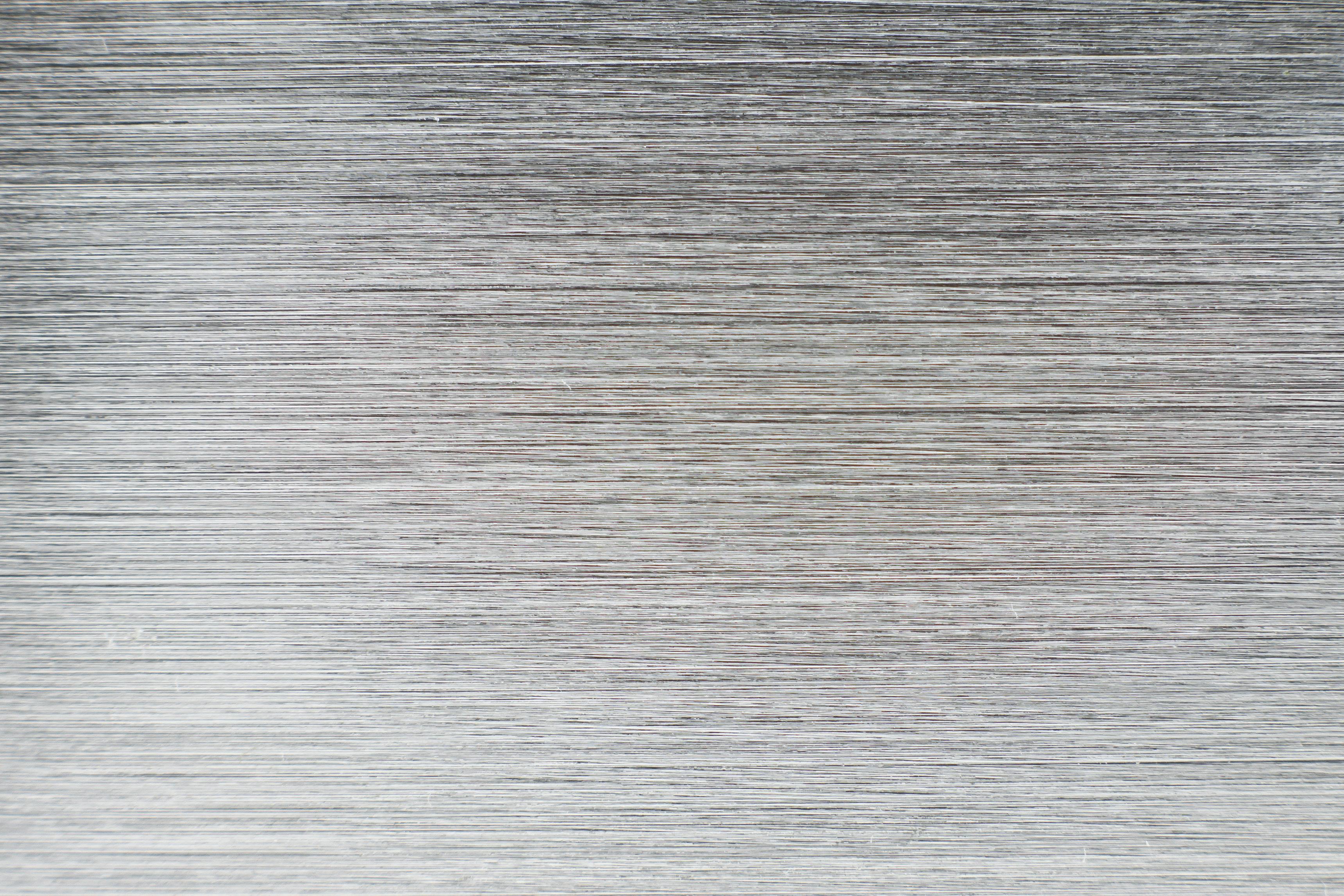
(Sessions listed are complete as of press time and subject to change. Open to all badge holders.)
10-10:30 a.m.
GEARING UP
❱ SL9823 Creator Lab Theater A
Discover the essential tools and technology every creator needs to produce outstanding content. From versatile hardware to powerful software, this session explores the gear transforming content creation. Learn how to elevate production quality, streamline workflows, and engage your audience with practical insights for all experience levels.
Speakers: Juliana Broste, Travel Video Journalist, TravelingJules Productions; Jefferson Graham, Host/Producer, Photowalks; Ryan Grams, CEO, Studio Upgrade
Moderator: Luria Petrucci, Owner, Live Streaming Pros
10-10:45 a.m.
FIRESIDE CHAT — INDUSTRY LEADERS TALK TECHNOLOGY, CREATIVITY AND FUTURE OF FILMMAKING
❱ SL9823 Creator Lab Theater B
The rapid introduction of new technologies and movie-making tools allows experienced and emerging filmmakers to tell innovative stories in amazing and unexpected ways. Join an award-winning motion picture producer and a leading industry technologist as they discuss the relationship between creativity and technology and what it means for the future of filmmaking.
• How might cutting-edge tools like AI, advanced capture and display technologies change how stories are told, and how can we prepare for these changes?
• What can be done to keep humans at the center of creative authorship?
• As the industry evolves and integrates these technologies into mainstream production workflows, how can we preserve the films we’re
making now to have maximum flexibility to address future formats and technologies?
Learn how the Academy of Motion Picture Arts & Sciences is nurturing and supporting these transformative efforts for the betterment of the industry.
Speakers: Annie Chang, Science & Technology Council Chair, Academy of Motion Picture Arts & Sciences, Janet Yang, Producer/President, Academy of Motion Picture Arts & Sciences
10:40-11:10 a.m.
8K TECHNOLOGY AND ITS EMERGING ROLE IN THE CREATIVE PROCESS
❱ SL9823 Creator Lab Theater A
Learn from leading Hollywood experts about the latest developments in 8K scanning and mastering and its growing impact on motion picture restoration and archiving.
Speakers: Brad Collar, Senior Vice President, Global Archives & Preservation Services, Warner Bros.

Discovery; Greg Ciaccio, VP Original Content Post & Image Capture, IMAX Moderator: Juan Reyes, Executive Director, 8K Association
11-11:30 a.m.
DEMOCRATIZING VIRTUAL PRODUCTION
❱ Creator Lab Theater B
Virtual production has long been associated with high-budget Hollywood blockbusters and major broadcast studios. However, recent technological advancements are helping democratize this field, making it accessible to a wider range of creators, from small studios and independent filmmakers to educational institutions and corporate content creators. Brainstorm, a leading innovator in real-time 3D graphics and virtual production, is at the forefront of this movement with its cutting-edge solutions, such as InfinitySet Lite and Edison, which reduce the cost and complexity of virtual production. This session will detail the benefits of this approach and the possibilities that brings to any kind of content creator that wants to take advantage of virtual production.
Speaker: Miguel Churruca, Marketing and Communications Director, Brainstorm
11:45 a.m.-12:30 p.m.
ARE YOU SMARTER THAN A DEEPSEEK?
❱ SL9823 Creator Lab Theater B
(Open to all badge holders)
Join us for “Are You Smarter Than A DeepSeek?,” an interactive panel where AI experts face off against the advanced AI model, DeepSeek, on pressing AI-in-media topics covering ethical dilemmas, technological innovations and more. After each round, the audience votes to determine whether human insight or artificial intelligence prevails.
Questions include:
• AI in Newsrooms: Can AIgenerated content maintain journalistic integrity, or does it risk perpetuating bias and misinformation?
• Deepfakes Dilemma: With the rise of AI-generated deepfakes, how can media outlets safeguard authenticity and trustworthiness?
• Creative Collaborations: Is AI a tool for enhancing human creativity in media production, or could it eventually replace human creators?
• Ethical Algorithms: How can AI systems be designed to respect privacy and avoid reinforcing societal biases in media applications?
• AI and Audience Engagement: In what ways can AI personalize media content without crossing the line into manipulation?
This event offers a unique blend of enlightenment and entertainment, showcasing the dynamic interplay between human expertise and AI capabilities.
Speakers: Pinar Seyhan Demirdag, co-Founder/CEO, Cuebric, Irad Eyal, Founder/CEO, Quickture, Xavier Kochhar, CEO, XKE, Mohamed Moawad, Managing Editor, Al Jazeera Channel
Moderator: Matt Hanna, Chief Strategy Officer, Quickture
1:30-2 p.m.
HOW THE HELL DID THEY DO THAT? NEW ROCKSTARS TELL ALL
❱ SL9823 Creator Lab Theater A How do you keep on time and budget while creating sizzling content that serves millions of viewers? New Rockstars let us in on their production secrets as well as their strategy for providing unique insights into the super-brands we love.
2:30-3 p.m.
ASK ME ANYTHING: YOUTUBE ALGORITHM 2025
❱ SL9823 Creator Lab Theater C
YouTube’s creator liason and editor, Rene Ritchie, knows more about building success on YouTube than just about anyone else. In this session, he’ll share the deep secrets of success for 2025, including why the algorithm doesn’t hate you, how AI is changing discovery and recommendations, the key numbers and KPIs to really focus on, the unique characteristics of Shorts, YouTube on the big screen and much more! Bring your questions for this interactive AMA session!
2:45-3:30 p.m.
ASK ME ANYTHING: NAVIGATING MUSIC RIGHTS AND LICENSING FOR FILM & TV
❱ SL9823 Creator Lab Theater B Dive into the world where music meets storytelling with a panel of
industry experts who will unpack the intricacies of music licensing for film and television. Whether it’s securing the perfect track to enhance the tension in a “Stranger Things” finale or crafting the next iconic theme like “Succession,” the right music can transform a production. In today’s streaming-dominated landscape, where content is king, the demand for music is higher than ever — and so is the need for accurate music reporting to ensure compliance and fair payment for creators. Designed for filmmakers, studios and production companies, this session explores cutting-edge tools, evolving rights challenges and the critical role of music reporting in keeping the music and broadcast worlds in harmony.
Speakers: David Flanzer, Senior Counsel, Music Business & Legal Affairs, NBCUniversal; Cathy Merenda, Senior Vice President Visual & Media Rights, Sony Music Publishing;
Mark Vermaat, VP, Business Strategy & Partnerships, Orfium, Justine von Winterfeldt; Emmy-winning music supervisor/Head of Music Supervision, Format Entertainment
Moderator: Douglas Montgomery , CEO/Founder, Global Connects Media
3:30-4 p.m.
AI AS YOUR CREATIVE PARTNER
❱ SL9823 Creator Lab Theater A Explore how AI tools are transforming content creation, from automating tasks to enhancing storytelling. Learn strategies to streamline workflows, boost creativity and stay competitive in a rapidly evolving industry.
Speakers: Logan Lawler, Dell Pro Max AI, Dell Technologies, Gabe Michael, VP, Executive Producer AI, Edelman, Todd Todd Terrazas, CEO, FBRC.ai
Moderator: Renee Teeley , Chief Creator Officer, UP, the Scroll Happy app



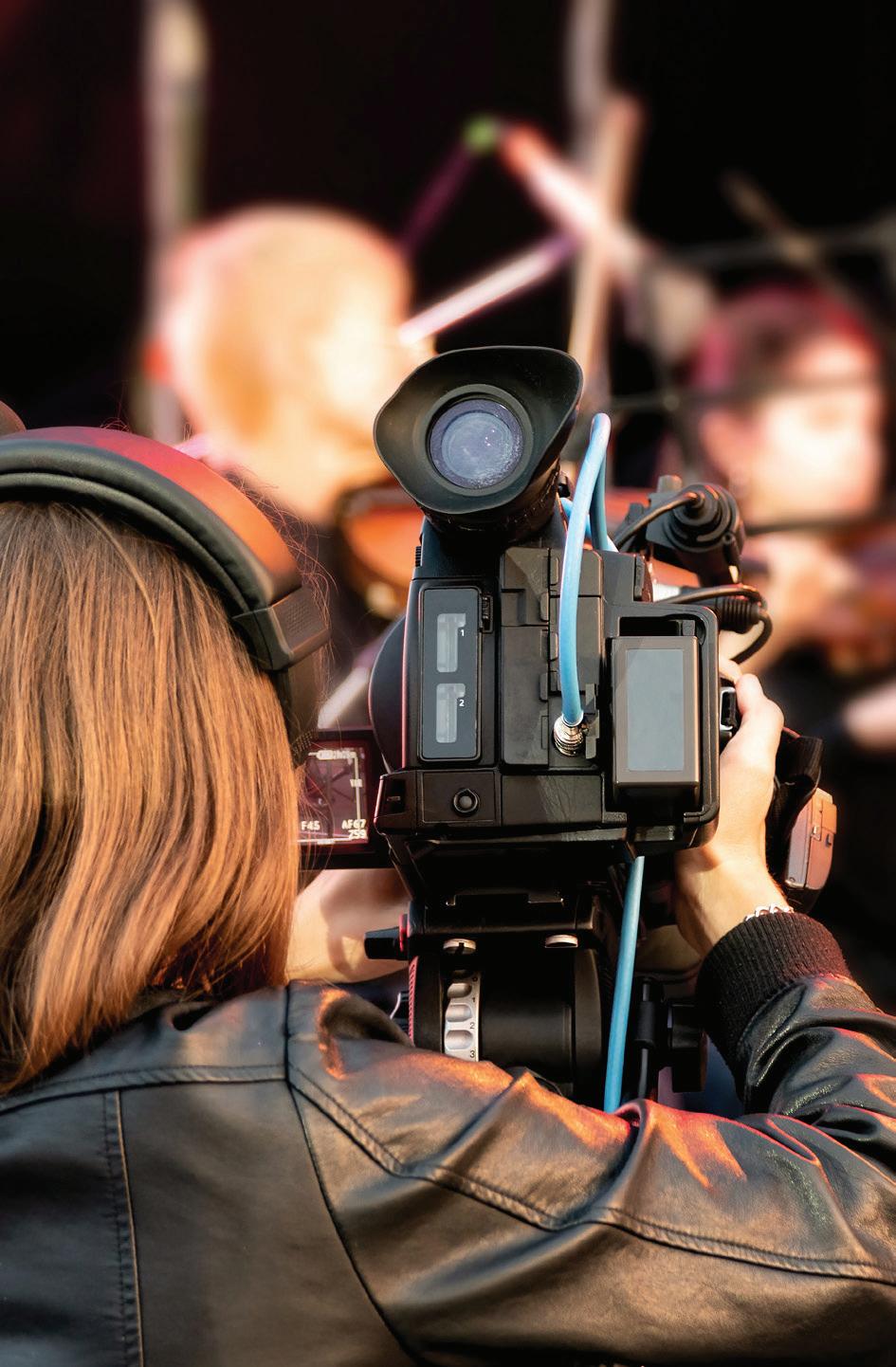
(Schedule listings are as of press time and subject to change)
10:30-11:15 a.m.
GAME-CHANGING VENUES
❱ W1768 Theater 1
As the sports industry advances, so do its venues, transforming into dynamic spaces that go beyond the game. Learn about cutting-edge technology and how it is reshaping stadiums and arenas to offer fans more engaging, immersive, and personalized experiences. Discover how top venues are evolving to meet the demands of the modern fan.
Speakers: Nicolás Ávila, Chief Technology Officer U.S., Globant; Devin Poolman, Chief Product & Technology Officer, Cosm
Moderator: Gregg Katano, Founder & CEO, Cosmos Collab
11:15-11:45 a.m.
SPORTS SUMMIT CASE STUDY
❱ W1768 Theater 1
2-2:30 p.m.
UNPLUGGING SPORTS: THE PRIVATE WIRELESS REVOLUTION
❱ W1768 Theater 1
As in any revolution, there are a few key thought leaders who are silently laying the groundwork for change. Join this Sports Summit session for a discussion on how Fox Sports and Verizon are unleashing the power of wireless connectivity in live sports production. New camera angles and positions, low latency connectivity, direct to air shots, driving changes in REMI, fan engagement, analytics, and what’s next with the accelerated adoption of AI and other emerging technologies.
Speakers: Michael Davies, Executive Vice President, Technical and Field
Operations, Fox Sports; Timothy Stevens, Global Leader, Strategic Innovation, Media & Entertainment, Verizon Business Group
2:45-3:30 p.m.
WHERE’S THE MONEY? NAVIGATING THE NEW MEDIA ECONOMY
❱ W1768 Theater 1
As traditional revenue models are disrupted, the media and entertainment industry is embracing new pathways to profitability. This panel will explore how OTT bundling, ad-supported FAST models, strategic partnerships and premium content aggregation address audience fragmentation and deliver an all-in-one entertainment experience.
In this panel, we’ll tackle the big question: Where’s the money in the media today — and tomorrow? How can companies, creators, and innovators adapt to seize the opportunities in this dynamic and challenging environment?
This panel will explore the future of revenue generation in media and entertainment, including:
• The rise of ad-supported models and their impact on content monetization.
• Emerging markets and untapped global revenue opportunities.
• How changing viewer expectations are redefining success for streaming platforms.
• Content creators and distributors collaborating to combat fragmentation in the streaming landscape.
Speakers: Andrea Downing, President, Distribution, PBS; Shuchi Mathur, Customer Experience & GTM Leader, Co-Founder & CEO, Gamepie. net (stealth mode); Idunn Sofie Riise, Co-Founder and Managing Director, Zille Media; Soumya Sriraman, Digital Commerce Executive/Adviser/Board Director
Moderator: Yulia Lukyanova, Marketing Manager, V-Nova

DISCOVER WHAT’S NEXT FOR YOUR INDUSTRY WITH SMARTBRIEF.
Every day you’ll receive:
• Reliable insights from the industry’s leading resources.
• Newsle er designed for a two minute read.
• Simplified way to keep track of key industry trends.













































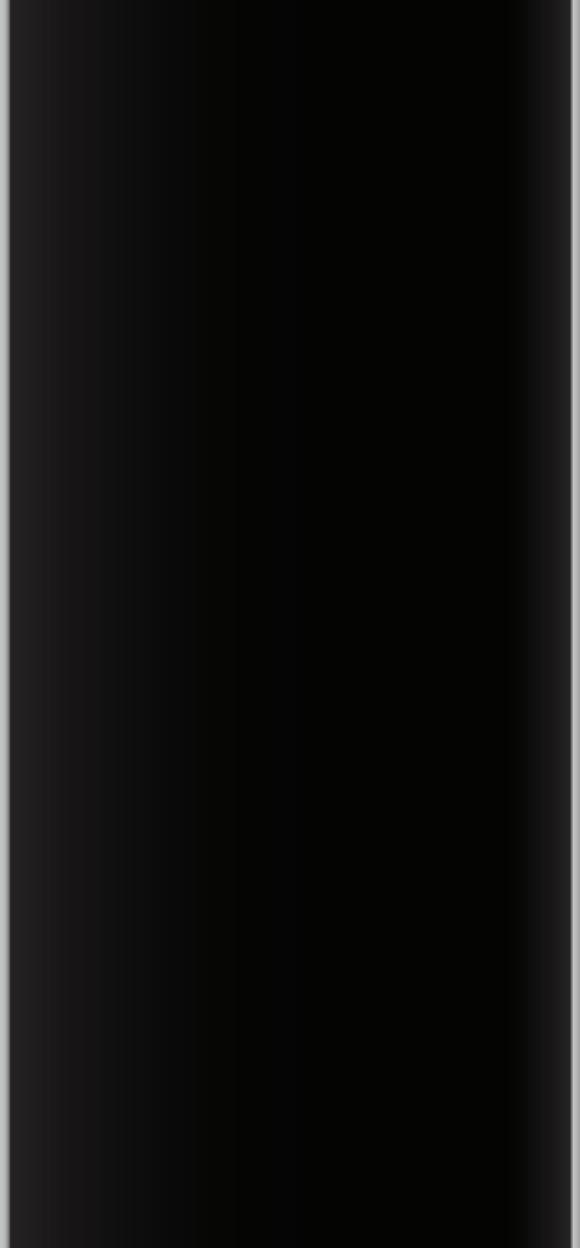





































































































































































































































































(Schedule listings are at press time and subject to change.)
11:45 a.m.-12:30 p.m.
SMPTE PRESENTS: FILMMAKERS
CONSIDER THE IMPORTANCE OF COLOR MANAGEMENT AND ACES
❱ W2631 Theater 2
Color management is essential in modern filmmaking and content creation, ensuring consistency and accuracy across different cameras, displays and distribution platforms. The Academy Color Encoding System (ACES) has become the industry opensource standard, providing a universal color pipeline that maintains the integrity of creative intent from capture to final delivery. Join us for a lively panel conversation as distinguished filmmakers discuss their recent use of ACES in varied productions around the globe. You’ll learn about how and why they used ACES and there will be an important announcement about the latest release of ACES during the session.
Speakers: Alastor Pan Arnold, Senior Colorist, Fotokem; Jeff Budsberg, Visual Effects Supervisor, Dreamworks; Francesco D’Ascenzo, Senior Colorist, Bull Milan
Moderator: Carolyn Giardina, Senior Entertainment Technology and Crafts Editor, Variety
2-2:30 p.m.
SECURING THE FUTURE: LEGAL STRATEGIES TO PROTECT, PATENT AND PROFIT FROM INNOVATION
❱ W2631 Theater 2
Intellectual property is a powerful hedge for the future — especially in fastevolving fields like AI. While the future is uncertain, one thing is clear: Without a well thought out strategy to protect your IP, you’ll have no seat at the table of tomorrow and your business risks being
left behind. This session will explore the importance of building a proactive IP strategy, with a focus on patent prosecution and enforcement, backed by decades of experience. This session will discuss how patents, trademarks and copyrights provide valuable protection for AI-driven assets, enabling you to secure your innovations today for tomorrow’s competitive landscape. Key topics include navigating the patent process, building and securing your own IP portfolio and avoiding infringement on others’ assets. Additionally, this session will cover enforcement strategies for defending your rights in a rapidly changing market, ensuring that you’re equipped to manage risks and capitalize on your IP assets. With practical insights and actionable steps, this session will help you take control of your IP to secure long-term success and futureproof your AI innovations.
Speakers: Kevin Mierzwa, Principal, Harness IP; Doug Robinson, Principal, Harness IP; John White, Special Counsel, Harness IP
2:45-3:30 p.m.
SMPTE PRESENTS: AI AS ALLY — ENHANCING HUMAN CREATIVITY IN MEDIA PRODUCTION ❱ W2631 Theater 2
This forward-looking session demystifies the relationship between artificial intelligence and media production, addressing common concerns while highlighting the collaborative potential of these emerging technologies. Industry experts will examine how AI tools are augmenting creative workflows across preproduction, production and distribution — providing practical examples of how these technologies serve as extensions of human creativity rather than replacements. Attendees will gain insights into responsible AI integration strategies, ethical
considerations, and the evolving partnership between human ingenuity and computational assistance. Join us for a balanced, optimistic exploration of how media professionals can harness AI capabilities to expand creative possibilities while maintaining the human touch that drives compelling storytelling.
Speakers: Andy Beach, Media & AI Strategist, Alchemy Creations; Doug Daulton, Independent Producer, Evergreen Media
3:45-4:15 p.m.
BREAKTHROUGH AI VOICE IN MEDIA WITH ELEVEN LABS
❱ W2631 Theater 2
The media landscape is evolving rapidly, and AI voice technology is becoming a powerful tool for studios, broadcasters and creators. In this session, ElevenLabs will showcase how AI-powered voice solutions are reshaping storytelling, localization and content accessibility. Learn how AI-generated voices can accelerate production timelines, reduce costs and maintain high-quality performances — all while working with established creative processes. Through realworld examples and industry use cases, this session will explore how major studios and content creators are leveraging ElevenLabs to scale global distribution, create multilingual content and push the boundaries of audio innovation. Whether you’re a producer, editor or creative leader, this session will provide actionable insights into how AI voice can fit seamlessly into your workflows. Don’t miss this opportunity to stay ahead of the curve and harness the power of AI in media.
Speakers: Ben Budde, VP of Revenue, ElevenLabs, Emilie Drishinski, Head of Media & Entertainment, ElevenLabs
4:30-5 p.m.
FORTIFYING MEDIA: CYBERSECURITY STRATEGIES FOR A THREAT-FILLED FUTURE
❱ W2631 Theater 2
Evolving cyber-threats are putting media organizations under growing pressure to prioritize cybersecurity in every technology initiative. Join this panel of cybersecurity experts as they explore the critical need for a “secureby-design” approach, the importance of third-party risk management to ensure security across an increasingly complicated technology ecosystem and how risk-monitoring solutions can pull double duty in combating misinformation.
Speakers: Yong-Gon (YG) Chon, Managing Partner, GroCyber; Mat Newfield, Chief Commercial Officer, Diversified; Unmesh Suryawanshi, Technology Lead for Enterprise Streaming & Security, Visa
5-6 p.m.
WOMEN IN STREAMING MEDIA NETWORKING EVVENT
❱ W2631 Theater 2
Come join this reception for an hour of networking and empowerment! This event is all about celebrating and connecting with the amazing women in the streaming media industry.
Whether you’re a seasoned pro or just starting out, this is the perfect opportunity to meet like-minded individuals, share experiences and build valuable connections. Don’t miss out on this fantastic chance to support and uplift each other in the world of streaming media!
Speaker: Alicia Pritchett, President and Founder, Women in Streaming Media
(Schedule is as of press time and subject to change.)
10-10:20 a.m.
IPMX NAB SHOW 2025 UPDATE
❱ W2831 Theater 3
As the AV industry continues its shift to IP-based systems, the Internet Protocol Media Experience (IPMX) has emerged as a leading open framework for AV-over-IP interoperability. This session will explore the growing market demand for IPMX and why the industry is rallying around a standardized, open approach. This session will focus on three key asset classes undergoing this transformation: live media and production equipment, Pro AV signal routing systems and media on PC/IT platforms. The goal is to clarify why IPMX is being pulled by market demand rather than pushed by technology providers. In addition, this session will provide a high-level overview of the IPMX ecosystem, including the status of IPMX-ready equipment, trademark usage and initial training efforts for 2025. This update will outline the progress made by AIMS, VSF and AMWA in defining profiles, labelling requirements and trademark guidelines. This session will set the stage for a deeper exploration of IPMX’s technology and roadmap, focusing on the business case for adopting an open standard. Attendees will leave with a clear understanding of the market’s role in
driving IPMX forward and what to expect in the near future.
Speakers: Sam Recine, AIMS, Chairman of Pro AV WG, Matrox Video
10:30-10:50 a.m.
IPMX DEEP DIVE
❱ W2831 Theater 3
This presentation will discuss the technical details behind the hot new AV over IP system called the Internet Protocol Media Experience (IPMX). The core of the presentation will review the genesis of the IPMX specification and a “plain English” description of the benefits it brings, including things like display synchronization and security. This session will also discuss the benefits of open standards and look at the technologies behind IPMX. Finally, it will review how the NMOS control system maps to IPMX devices to provide the same plug-and-play control as is provided in ST 2110, but with some significant ease-of-use extensions such as EDID management.
Speaker: Jed Deame, CEO, Nextera Video
11-11:20 a.m.
IPMX ROADMAP
❱ W2831 Theater 3
In this session, you’ll receive an early look at the official IPMX roadmap as AIMS prepares for its formal launch
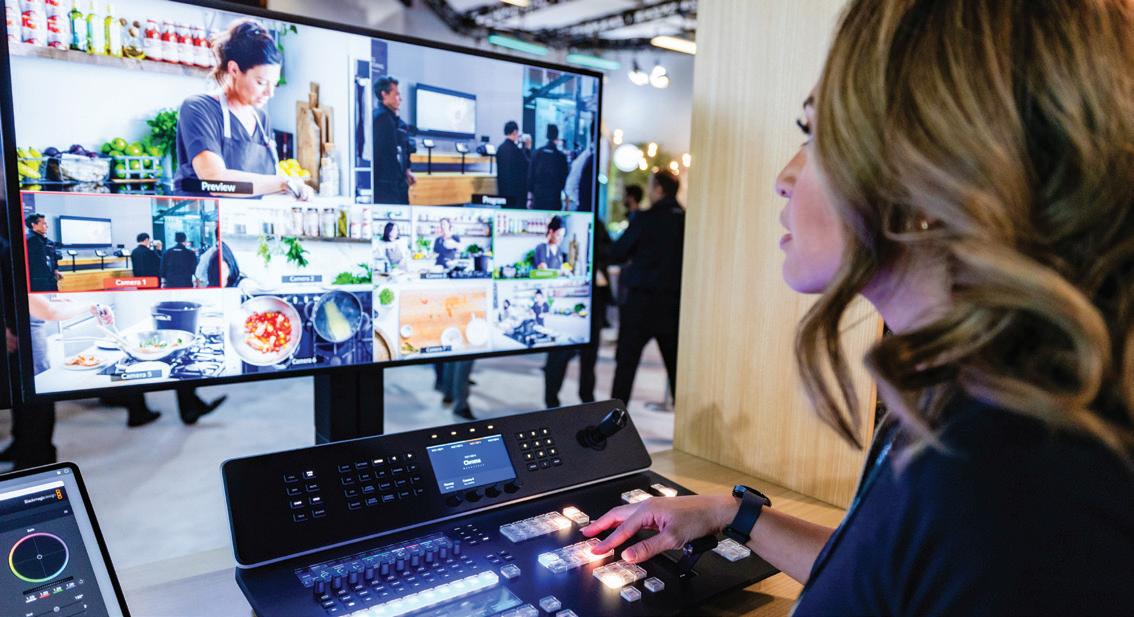
in late 2025. It will clearly outline the baseline requirements, including supported video and audio profiles, codec capabilities, security features, and interoperability criteria. Attendees will leave this session with a clear understanding of upcoming milestones, how IPMX interoperability will be validated, and how manufacturers, integrators and end users can confidently leverage IPMX to build flexible, scalable AV-over-IP solutions.
Speaker: Andrew Starks, AIMSMarketing WG Chairman, Macnica
11:30-11:50 a.m.
AES67, ST 2110 AND IPMX — DIFFERENCE, COMMONALITIES AND INTEROPERABILITY
❱ W2831 Theater 3
Originally, the definition of IPMX started from the proven grounds of AES67 and SMPTE ST 2110. While AES67 and ST 2110 were built around the interoperability requirements of the broadcast realm, it became immediately apparent that for application to the world of ProAV enhanced functionality would be required, while certain requirements indispensable to the broadcast world would be too complex or rigid — namely the very strict timing and synchronization requirements only made possible by the use of PTP. During development of the IPMX specifications within the VSF group, it became clear certain constraints and enhancements had to be made with respect to AES67 and ST 2110 to enable wider adoption in the Pro AV domain. During this session, Andreas Hildebrand will discuss how the addditional constraints and enhancements of the IPMX specifications affect interoperability with AES67 and ST 2110 audio devices and how they can be used in IPMX environments.
Speakers: Andreas Hildebrand, AoIP Technolgy Evangelist, Lawo
Noon-12:20 p.m.
CONTENT PROVENANCE AND AUTHENTICITY IN THE CONTEXT OF COMPLEX DIGITAL SIGNAL PROCESSING
❱ W2831 Theater 3
The expression “a photo cannot lie” could not be more debunked. A steady erosion of the barriers to producing fake but plausible visual media has occurred since the first development of photography at the end of the 19th century. The power and capability of tools and techniques available to bad actors have rapidly accelerated in recent decades and continue to do so at an increasing pace. Hence the need for robust mechanisms to ensure content provenance and authenticity have never been greater. The media industry was arguably caught on the back foot, lacking widely accredited mechanisms seeing near-universal deployment across the entire production chain. Initiatives such as the Coalition for Content Provenance and Authenticity (C2PA) are making headway in addressing this problem. While some content manipulation is entirely unavoidable for numerous technical and aesthetic reasons, this presentation explores how can we might best accommodate these necessary, and sometimes complex, modifications.
Speaker: James Shepherd, CTO, InSync Technology Ltd.
2-2:20 p.m.
RETHINKING ASSET VALUE: DRIVING THE FUTURE OF ROI WITH DIGITAL BACKLOT
❱ W2831 Theater 3
In today’s fast-paced media landscape, maximizing the value of every asset is key to driving ROI. The Digital Backlot is transforming production workflows with a strategic, interconnected approach to asset management. Join Censhare to discover how advanced asset tagging,
VFX le handling and decomposition techniques streamline production, reducing redundancy and cutting asset creation costs by 60%. Learn how the Digital Backlot supports 3D asset formats like GLTF, OBJ and FBX, while complex relationship mapping ensures seamless tracking and repurposing of scenes, props and CGI elements. More than just a tool, it’s a gamechanging strategy for unlocking creative IP, fostering global collaboration and accelerating production timelines. Don’t miss this opportunity to rethink how you manage and maximize your assets!
Speakers: Chris Leaman, VP Profesional Services, Censhare, Josh Van Dyk, VP of Sales, Censhare
2:30-2:50 p.m.
UNLOCKING CONTENT
MAGIC: HOW AI TRANSFORMS CONTENT CREATION
❱ W2831 Theater 3
From ideation and script re nement
to storyboarding and pre-production planning, AI is streamlining work ows and enhancing creative potential. AIdriven voice solutions and localization technologies are making content more adaptive, breaking language barriers and enabling global audience engagement with high-quality, culturally nuanced experiences.
This session will highlight how studios and creators leverage AI-powered voice technology to ef ciently scale content creation while maintaining artistic integrity. Speakers will share their rsthand experiences and real case study examples on how AI and Deepdub’s technology and products are helping Paramount expand its global reach.
Speakers: Ariel Baril, VP, Technology, SEMEA, Paramount; Sagi Reuven, Chief Revenue Of cer, Deepdub
3-3:20 p.m.
CAPTIONHUB LIVE — REAL-TIME CAPTIONS & EMBEDDABLE WIDGETS IN 138 LANGUAGES
❱ W2831 Theater 3
Adopted by the world’s largest brands within months of its launch, CaptionHub Live uses AI and patentpending technology to caption, translate and publish captions directly into video players without the need for packaging into the transport stream. The result? Perfectly synchronised, high-accuracy captions supporting 55 source languages and simultaneous translation into 138 languages. Featuring: customizable terminology; scrollable, searchable transcripts; live production features; and compatibility with industry players and streaming protocols. Join this session for a live demo.
Speaker: Tom Bridges, CEO & Founder, CaptionHub
3:30-3:50 FROM ANALYTICS TO INTELLIGENCE: UNLOCKING ENGAGEMENT & GROWTH IN VIDEO PLATFORMS
❱ W2831 Theater 3
Understanding why users engage and how to sustain that engagement is the key to success in video platforms. This session explores how digital experience intelligence transforms scattered analytics into actionable intelligence by mapping the entire user journey from acquisition and onboarding to engagement, retention and churn prediction. Discover how AIpowered analytics unlock deep insights into content consumption, navigation behavior and engagement patterns. Learn how to measure key behavioral signals, such as session intent, playtime momentum, content af nity and user friction points, to optimize content recommendations, enhance UI/ UX and drive loyalty.
Speaker: Bruno Giner, VP Sales, DXI, NPAW









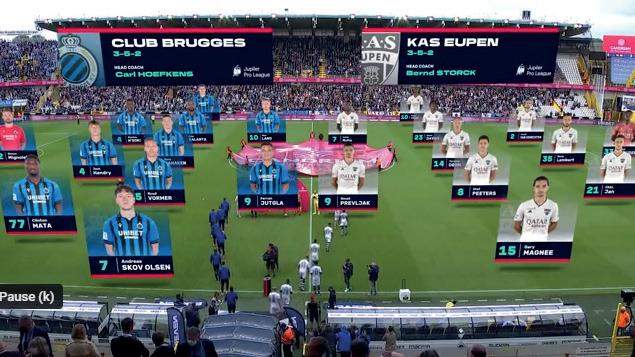
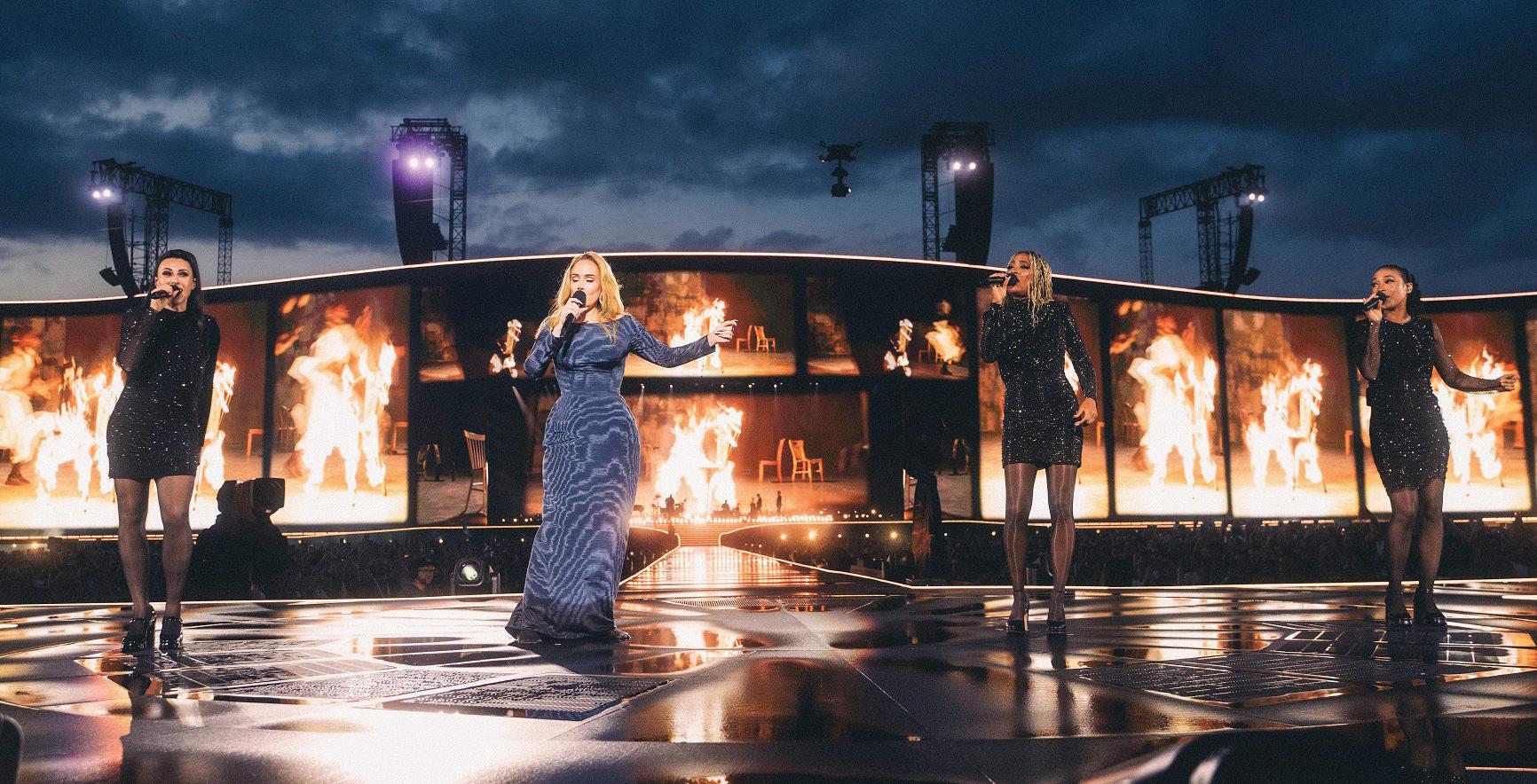
Adele’s most recent tour stop in Munich, Germany, made use of ROE Visual’s 6,000-nit brightness LED panels.
Increasingly complex productions require adaptable, customizable technologies
By Michael Grotticelli NAB SHOW DAILY
With the implementation of new technologies like high-resolution 4K and 8K displays, multichannel sound and stunning graphics, all supported by artificial intelligence, remote production and processing (cloud) in one way or another, today’s live event productions are bigger, more complex and more creative than ever.
Whether it’s the staging of music concerts or corporate gatherings, e-sports events and lots more, today’s live events are leveraging a wider range and an ever-increasing amount of AV
technology to get the best results.
Producers are looking for technology that can adapt to event workflows, not the other way around. No two events are alike, so it’s best to invest in flexible technology that’s compatible with other products, customizable on-site and able to handle large amounts of visual data while minimizing delay before being displayed on screen.
To meet these needs, NAB Show exhibitor Christie has developed the Spyder-S Series, a multiscreen windowing and image processing
technology. A modular, nodebased technology that supports HD, 4K and 8K resolutions at ultra-low latency, it can handle a virtually unlimited number of pixels, and inputs and outputs, depending on how the nodes are configured.
“We saw a need in the industry for a range of products that can solve key pain points, including 12-bit 4:4:4 RGB, low latency and uncompressed signal streaming,” said Victor Vettorello, senior applications specialist, Broadcast and Professional Video, at Christie.
The Christie Mastering Gateway offers a suite of connectivity tools for distributing uncompressed HD,
1
Increasingly complicated live events — including concerts, sporting events, corporate gatherings and more — are leveraging more AV technology.
2 As no two live events are alike, it’s best to invest in flexible tech.
3
Live event producers are leveraging AI to make their workflows more efficient.
4
Hybrid experiences, blending in-person and remote participation, are becoming more and more popular.
4K and 8K video, audio and metadata over IP networks, all with zero frames of latency. It’s built for live events, postproduction and VFX workflows.
audience reactions in real time and adjust the production accordingly, making the process more efficient and engaging.”
At NAB, Clear-Com is showing its FreeSpeak Icon belt pack, designed for technical teams in live performance, corporate AV, sports and houses of worship. The belt pack operates on the 1.9 GHz (DECT) frequency and features nine configurable buttons, four individual channel volume controls and Bluetooth 5.3 connectivity.
The configurable buttons include eight dedicated channel buttons and a reply key, offering functionality similar to a traditional intercom panel. Users can adjust four
shift toward hybrid experiences — a seamless blend of in-person and remote participation,” said Matt Morgan, regional sales manager of corporate solutions at Ross Video.
“Today, it’s common for an event to feature presenters on stage while bringing in live video feeds from speakers across the globe.”
At NAB Show, Ross is spotlighting its Ultrix Acuity production switcher that integrates routing, multiviewers and signal processing into a single platform; updates to its XPression 3D Motion Graphics platform; Ross Production Cloud; and new features for its spidercam aerial camera, delivering cinematic-style results for live entertainment events.

dedicated channel volume controls along with a main volume control. Bluetooth 5.3 compatibility allows seamless connection with modern wireless headsets and earbuds.
The FreeSpeak Icon belt pack integrates with existing Clear-Com systems and supports Dante and MADI, expanding connectivity options for professional productions.
Combining traditional Control Room technology with software-based LED display control has empowered production teams with greater creative flexibility and scalability.
Ross Video’s Unified Venue Control Solution provides control of live productions while helping create an immersive experience for fans. This control layer sits on top of its hardware products and lets a single operator anywhere in the world trigger stadium screens and lighting to fireworks and fountains miles away.
“Live events have undergone a massive transformation in recent years, and we’re seeing a clear
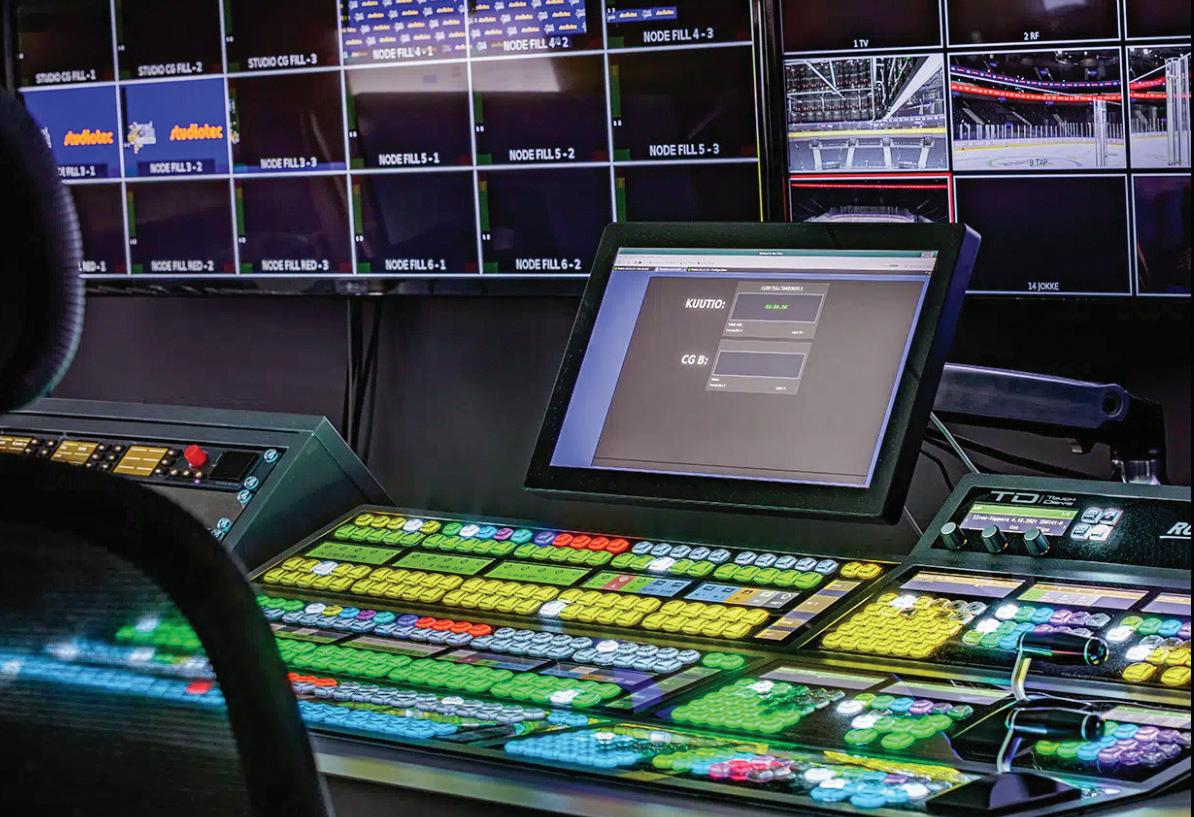
ics’ Imaging Products & Solutions – Americas, said that distributed, IP and cloud-based live production workflows are gaining traction and changing how live productions are managed on site.
Ross will also exhibit AI-driven camera automation to support intelligent tracking and framing for AR/VR solutions and “smart” switchers with AI-enhanced automation, including Carbonite Ultra and Graphite, to streamline live event switching.
Deon LeCointe, director of networked solutions at Sony Electron-
“Distributed production workflows give you the ability to produce content from anywhere,” he said. “IP is driving that trend, along with cloud production, which is starting to pick up steam as well. More productions are experimenting with deploying hardware — like switchers, replay or graphics — in virtualized environments.”
Customers are looking for greater flexibility with their live production tools spanning multiple parts of their workflow, he added. Sony offers a solution in all of its live production categories, whether it’s physical infrastructure like a production switcher, or virtualized software
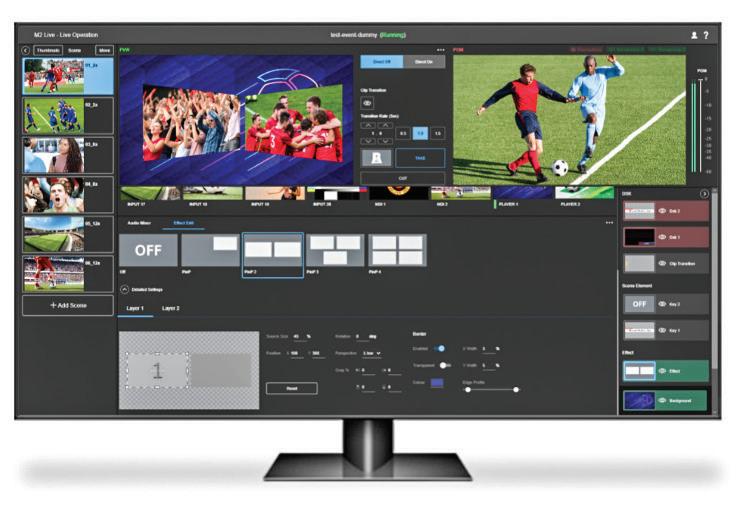
solutions like Sony’s new M2L-X production switcher, which can run on-prem or in the cloud.
At NAB Show, Sony features updates to several key Networked Live products, highlighted by the M2L-X. It is also showing updates to the Nevion Virtuoso platform, including support for HEVC and SRT, and Nevion VideoIPath, leveraging 5G and true cloud orchestration of services that run in the cloud — in addition to contribution to and from the cloud.
“We call it ‘ground to cloud, cloud to ground’ or GCCG,” LeCointe said.
At this year’s NAB Sony is showing AI and automation technologies for streamlining live production workflows, particularly for smaller-scale or lower-budget events. Its message is that AI applications help streamline video capture, content management and workflow management.
What’s clear is that live events production has undergone a massive transformation in recent years, and we’re seeing a clear shift toward hybrid experiences. Today, it’s common for an event to feature presenters on stage while bringing in live video feeds from speakers across the globe.
“One application is generative AI,” LeCointe said. “Customers are looking at AI to generate background content that can be fed into a virtual production screen to create virtual set pieces. Then they can simulate a live presenter being on-site somewhere while they’re sitting in their studio at headquarters.” l
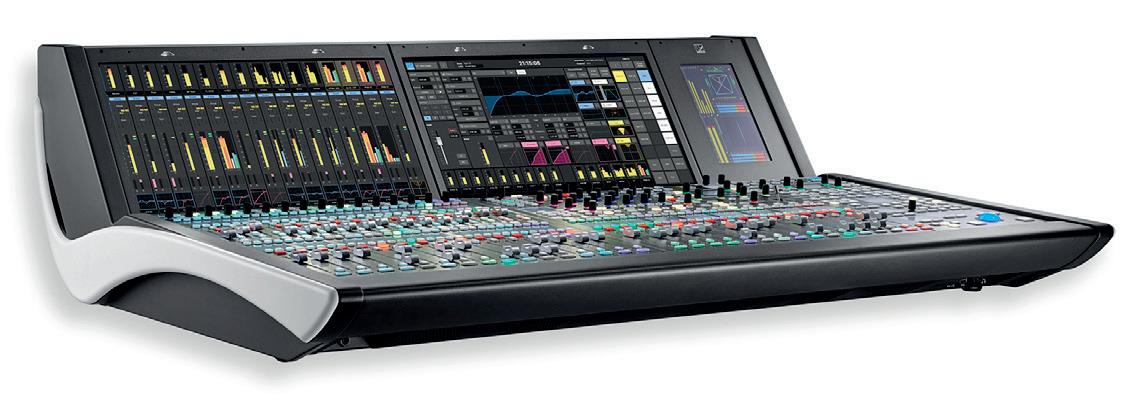
N623 | Lawo is featuring its mc256 audio production console, engineered to meet the diverse demands of modern audio production environments from broadcast studios to live performance venues. This console offers a balance of advanced functionality and user-friendly design, making it a preferred choice for professionals worldwide.
The mc256 is optimized for IP production environments, providing native support for SMPTE 2110, AES67/RAVENNA, DANTE and MADI audio streams. This ensures seamless integration into complex IP-based production infrastructures, facilitating efficient and flexible workflows. Reflecting the growing demand for immersive audio experiences, the mc256 is equipped with comprehensive tools for surround sound mixing, including a dedicated elevation controller for 3D audio productions. This feature set enables sound engineers to create rich, multidimensional audio landscapes that enhance the listener’s experience.
The console’s intuitive user interface is complemented by customizable user panels, allowing operators to tailor the control surface to their specific workflow requirements.
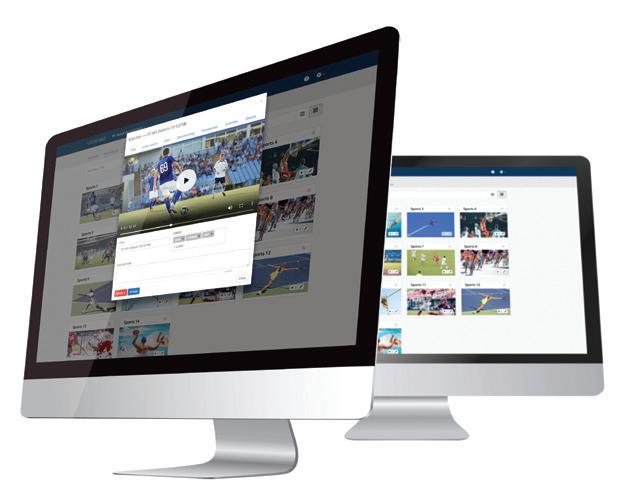
W2821 | Harmonic is highlighting a range of hybrid cloud and on-premises solutions and AI-powered innovations for broadcasters and service providers with applications in production and playout; broadcast and distribution; live, linear and VOD streaming; and content monetization that maximize revenue, enhance viewer engagement and drive down video infrastructure costs.
Leveraging AI, Harmonic’s VOS360 Ad SaaS automatically inserts SCTE-35 markers into live content, including sports, empowering service providers to better monetize high- and low-action moments with automated in-stream advertising. VOS360 Ad SaaS is integrated with MediaMelon and FanServ, offering new monetization opportunities.
Enhancements to VOS360 Media SaaS include JPEG XS support for live ingest and lower encoding latency of UHD and HD content while maintaining pristine video quality. VOS360 Media Saas supports GPU-based compute nodes in cloud regions, allowing for live video transcoding at substantially lower costs.
N315 | Bridge Technologies is spotlighting its innovative QTT Application. This technology assigns autonomous software workers that emulate end-user playback of protected content, continuously authenticating against video platforms and receiving authorization from DRM systems to retrieve live services from CDNs for playback on a robust mesh of high-density video players.

Through this process, Bridge’s QTT application can continuously check for authentication issues, as well as provide operational metrics such as player alarms, time to playing, interval to first picture and incorrect profile selection. Such alarms and metrics indicate video platform and CDN health and performance, while picture analysis presentation and alarming enable correct programming and advertisement insertion verification.
The technology is vital for next-generation OTT deployments in which ingest, processing and distribution architectures are dispersed, and where administration of the service is not necessarily linked to a single economic entity.
N1006 | Neutrik Americas is introducing the NE8MXR-B-TOP etherCON cable connector carrier with a retractable shell. Designed to with stand the most demanding outdoor conditions, this connector combines durability with versatility, making it an ideal choice for connecting a variety of electronic equipment such as audio stage boxes and mixers, LED tiles, lighting fix tures, and both ruggedized and standard network switches.
The Neutrik NE8MXR-B-TOP etherCON cable connector carrier adds a new, patented retracting shell feature to the rugged design, IP65 weather resistance, UV light resistance, and corrosion resistance characteristics of the industry-standard etherCON TOP series. Fully compatible with etherCON CAT-5 and CAT-6A receptacles, the NE8MXR-B-TOP can also be mated to standard, non-rugged RJ45 receptacles.
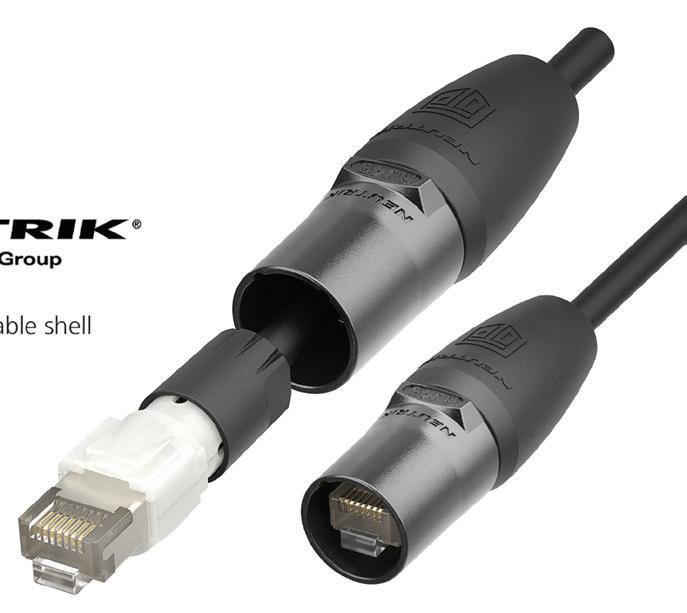
As with other etherCON TOP cable connector carriers, NE8MXR-B-TOP does not include an RJ45 connector. Cable assemblers must provide one separately. Furthermore, NE8MXR-B-TOP must be assembled to the cable at the same time as the RJ45 connector.
W1566 | For 25 years, farmerswife production scheduling software has been the trusted partner for media and entertainment professionals looking to stay organized, manage resources efficiently and keep their projects on track. Managing complex workflows shouldn’t be a constant struggle. With farmerswife production scheduling software, teams gain greater flexibility, efficiency and control over every aspect of their projects, ensuring deadlines are met, budgets stay on track and resources are optimized. Meanwhile, Cirkus project-management software continues to transform collaboration, providing a seamless space where teams can assign tasks, manage approvals, and stay connected — whether they’re in the office or working remotely. These tools aren’t just about managing projects; they’re about giving teams the freedom to focus on creativity, innovation and the bigger picture. Farmerswife and Cirkus can help users stay organized, work smarter and focus on what really matters.
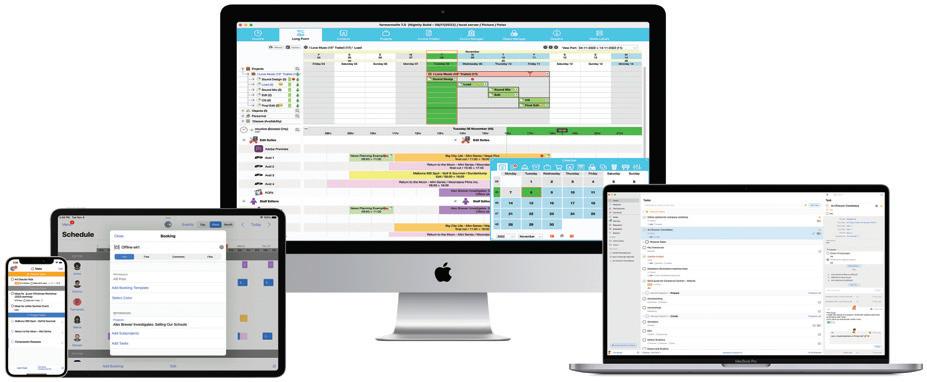
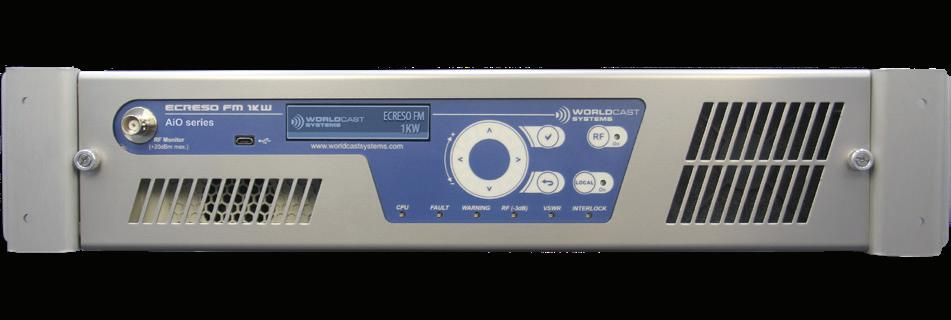












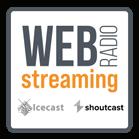




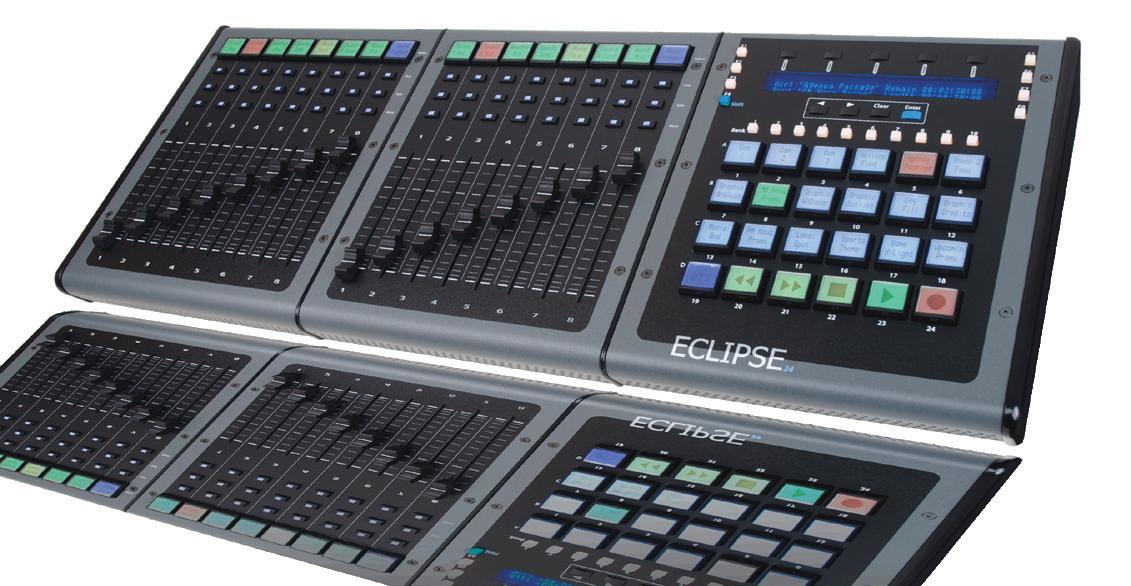




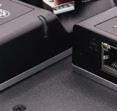
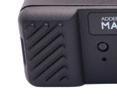
ADDERView Matrix® is the perfect solution for any organization looking for a simple and powerful IP KVM matrix. Typically used in an unmanaged con guration without a KVM management switch, these systems are designed for quick installation, reliable operation and managed with minimal technical knowledge required.







Delivering pixel-perfect, coloraccurate video without artifacts using spatially lossless 1:1 pixel encoding, ADDERView Matrix is ideal for organizations where ease of use and low maintenance are paramount.
https://www.adder.com/en/kvm-solutions/adderview-
New innovations from exhibitors on the show floor ADVERTISEMENTS


Planar DirectLight Slim Series Introduces New Display Form Factor and Performance Enhancements

Featuring an ultra-thin, narrow width form factor, Planar® DirectLight® Slim Series accommodates curved and space-constrained applications. Models feature MicroLED technology and are available in pixel pitches ranging from 0.9 to 1.8 millimeters with a maximum brightness of 1,600 nits and 4:9 aspect ratio to support deployment versatility and vibrant visualization.
www.planar.com/dls
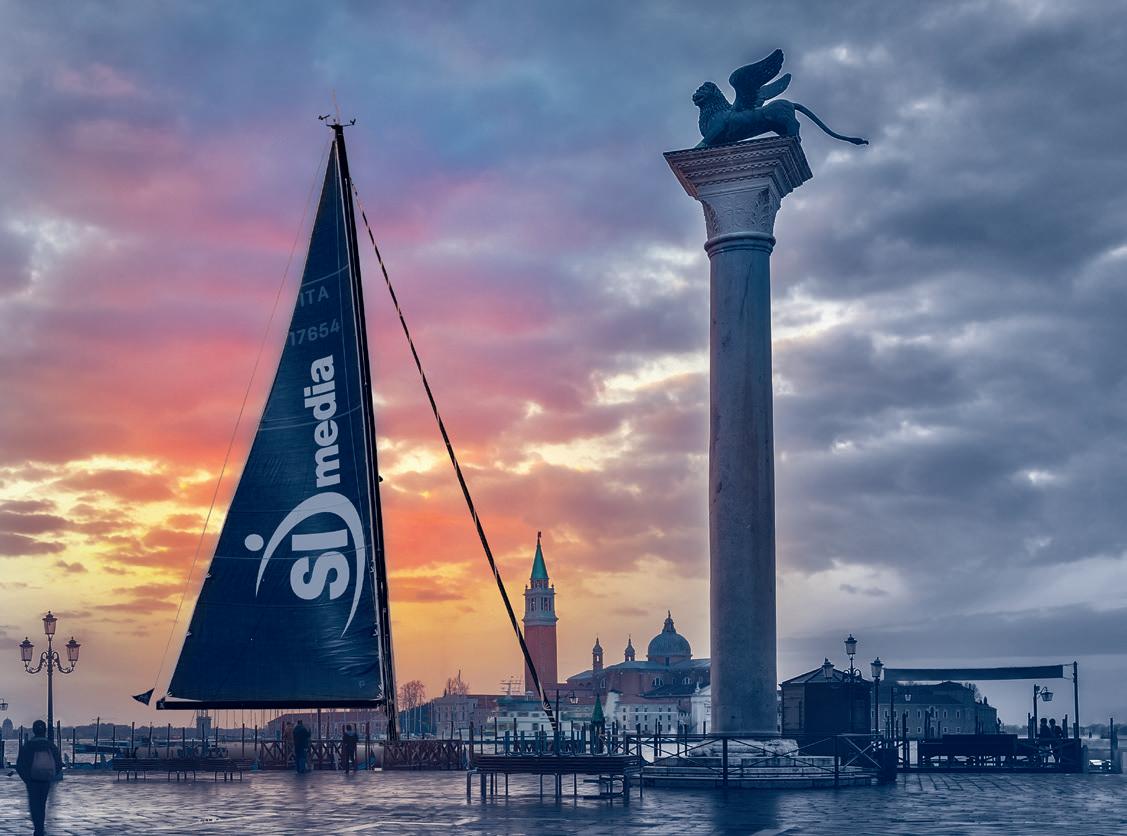

Canon unveiled a new optical unit at NAB 2025, enhancing UHD-DIGISUPER 122 field box lens. It enables a shallow depth of field with easier focusing, ideal for fast-paced broadcasts. Also available for UHD DIGISUPER
111, users can seamlessly switch between standard broadcast and enhanced, shallow depth of field image styles, all while maintaining color consistency. Frequently demonstrated at major sporting events and concerts, the optical unit has helped capture unforgettable moments.

www.usa.canon.com
championed its summarization capabilities.
“If there’s a transcript available, almost any off-the-shelf AI can take several paragraphs and turn it into bullet points within seconds,” he said.
Take the use case of a medium-sized radio cluster promoting a county fair among its four FM outlets. Instead of needing write copy for four different stations, Brunt explained that AI can be used to craft liners specific to each of their formats.
The practice has been employed in sales.
“It used to be that you’d have
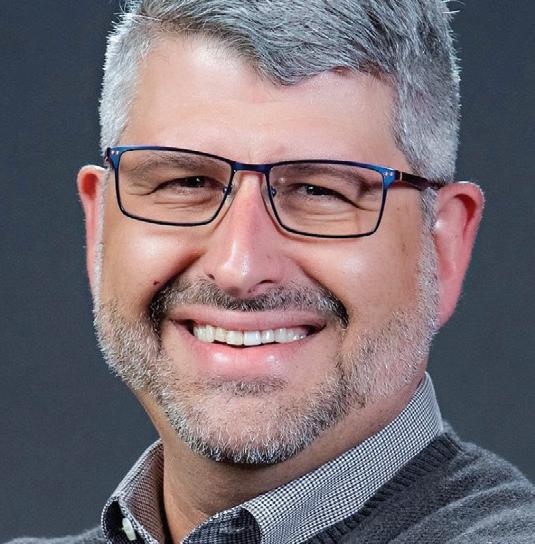
to search across 10 different websites to find prospects, but now AI tools can do it in a single query,” Brunt said.
ENCO’s SPECai allows sales teams to create “spec spots” while sitting with clients, using generative AI. Beasley Media is one of its clients.
AI is also being used to create scripts for on-air hosts, reducing the need for show prep. Parikhal said that has led to a mixed bag of results that sometimes lack imagination.
But as AI evolves, so will the outcomes.
“I see that changing within the next six months as broadcasters get better at writing prompts for their AI to do what they want,” Parikhal said.
Super Hi-Fi has been finding plenty of ways to put AI to use in radio, including with its Audacy and Beasley clients. Its Program Director operating system has AI-powered features such as music scheduling.

Zalon says the company’s VoiceIQ postproduction technology can polish a voice track even if it was recorded on a USB microphone.
Super Hi-Fi also has developed its edition of the AI-powered Orban Optimod 5950 audio processor. It is billed as an all-in-one appliance that can handle playout,

processing, PPM encoding and metadata in a single rack space.
AI had already showed up in transmitter deployments.
Manufacturer WorldCast says its SmartFM technology, deployed with clients in Germany and Morocco, dynamically adjusts RF output power based on broadcast content. Energy consumption can be reduced by up to 40% as a result.
The saying goes, “garbage in, garbage out.”
Zalon sees this with audio processing, for example. He worked with stations interested in the Optimod 5950 to ensure they start with a music library of CDquality audio. “We’ve learned that so many stations are using subpar catalogs,” he said.
AI’s large language models, meanwhile, are only as good as the data they ingest.
“Remember that AI is prone to hallucinations,” Parikhal said.
“Check the copy it writes.” Brunt agreed. “In this era of misinformation, human fact-checkers are essential,” he said.
There’s also the matter of acceptable use.
“Right now, the biggest issue is that many companies don’t even know who is using AI and how they’re using it within their organi-

zations,” Parikhal said.
Brunt implored broadcasters to institute some sort of policy — if nothing else, to establish a clear line of communication.
“Your company may be against AI use but there’s nothing stopping your part-time weekend talent,” Brunt said.
Parikhal said companies need to gather employees to examine exactly how they’re using AI. “That will encourage brainstorming and feedback.”
As much as the voice revolution might have been exaggerated, AI technology itself isn’t going anywhere.
“The underlying story of AI is real and it’s going to massively upend traditional methods across countless industries,” Zalon said.
Trying to follow developments in the news cycle can be dizzying.
“Every week, something new comes out either from existing AI players or from left field, like DeepSeek,” Parikhal said.
At his NAB Show session, Parikhal plans to start a dialogue where attendees can provide testimonials as to how their stations are using AI. “I bet we can get 1,000 ideas if we simply ask,” he said.
The consensus: If used ethically and responsibly, AI can benefit radio.
“Don’t let the negatives stop you,” Brunt said. “You may hesitate but your competition isn’t.” l
Highly regarded in the radio industry for its annual analysis, Jacobs Media’s TechSurvey last year found 75% of radio listeners were against using cloned voices to take the place of on-air talent. Broadcasters should tread with care when using AI’s voice functionalities but explore all of its aspects to automate and optimize familiar routines.
“Operating a radio station shouldn’t be about pushing buttons or turning knobs anymore,” Zack Zalon of Super Hi-Fi said. “That used to work but can you look at today’s operating margins and then try to argue that it still does?”
Chris Brunt of Jacobs Media said the opportunities for efficiency with AI tools are evolving quickly. “The free versions of tools out there are better than the premium versions that were available six months ago, that’s how fast they are moving,” Brunt said.

New York City is the media, advertising, fashion and financial capital of the world. NAB Show New York is the only east coast event where brands, broadcasters, sports teams and financial giants connect to master the tools, trends and strategies shaping the industry.
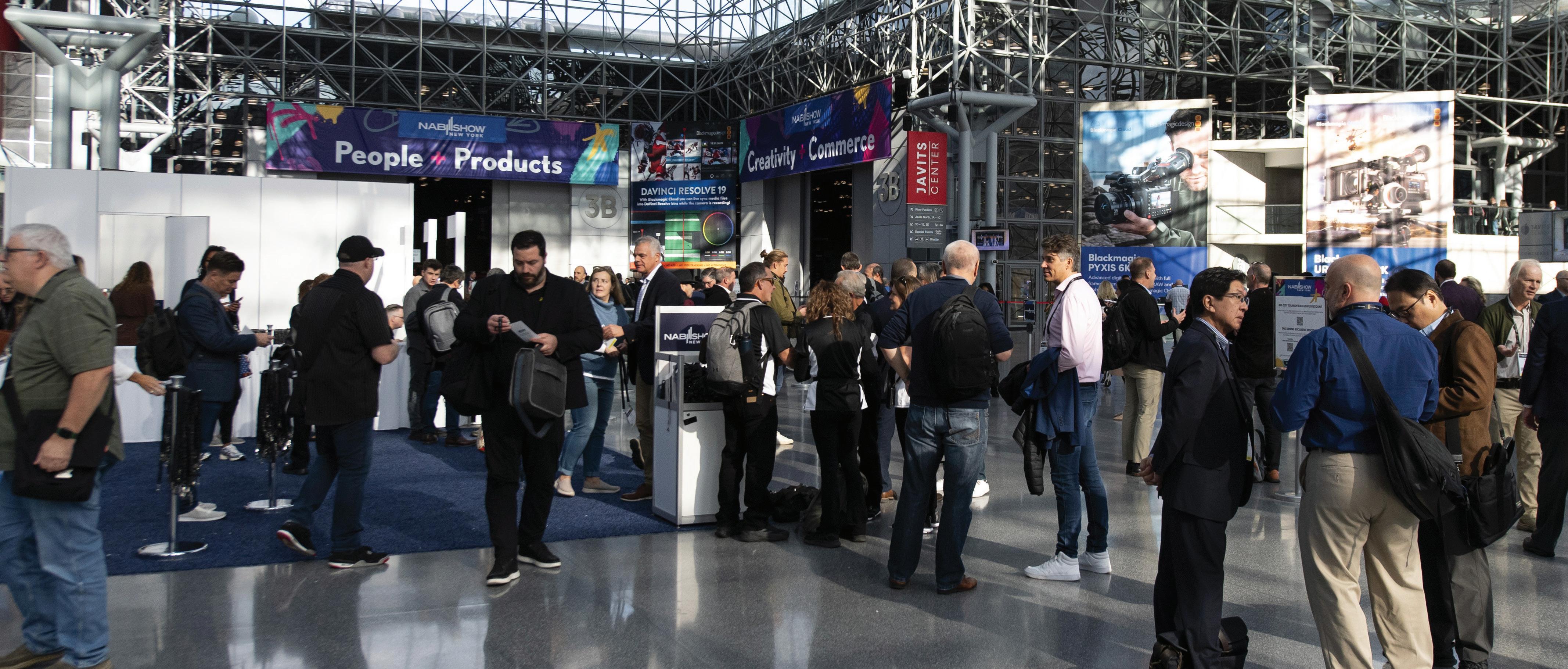
cloud-native solution provider.
“It is also important to focus on education and training to help operational teams understand the efficiencies and capabilities of cloud workflows, to ensure they are on board with the digital transformation right from the start.”
But, as much as there are challenges to overcome in the move to the cloud, there are many benefits once there, including new opportunities to unify and rationalize workflows leading to greater transparency and efficiency.
“With careful planning and the right tools, cloud workflows can help broadcasters and media companies work more efficiently and increase productivity,” d’Autremont said.
“A major benefit is the

traditional silos of the broadcast industry.
“The cloud removes these barriers and allows teams to work together more efficiently, regardless of location,” Gailis added. “By providing a shared, centralized environment where broadcasters and streamers can
Cloud-based work�ows help reduce the heavy lifting of racking, stacking, powering and cooling on-premises hardware.”
THOMAS EDWARDS, AMAZON WEB SERVICES
reduction of redundant systems and workflows, leading to more streamlined operations. Additionally, cloud-based workflows offer flexibility and agility — assets can be accessed remotely, and cloud resources can be scaled up and down as needed.”
There’s also a case to be made that moving to the cloud removes the
access, edit and distribute content, the cloud fosters closer collaboration between teams and partners and even across different networks for more agile content creation and distribution.”
Another area where broadcasters and streamers can find a use for the cloud is the adoption of artificial intelligence — particularly generative AI. It can help enhance the productivity of
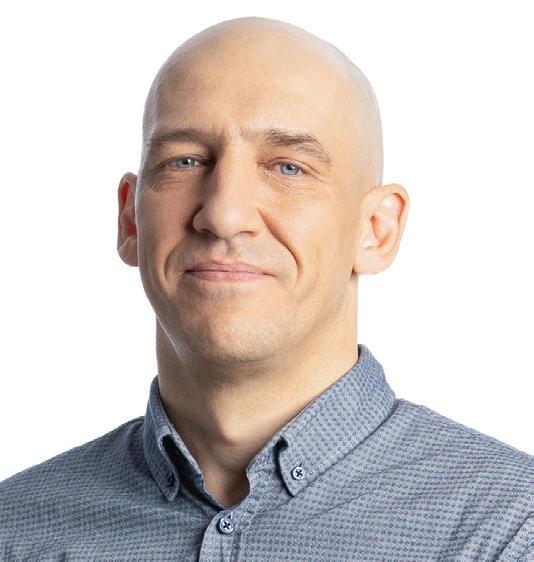
creatives, enabling them to generate enhanced metadata, as well as with transcription, translation, person identification and content summarization.
“All of these make it easier and faster to search through content archives and help to reduce more laborious, time-intensive tasks,” Edwards said.
There’s even the possibility that moving to the cloud can help the viewing experience. One benefit is that the cloud makes it easier to test additional functionality for workloads which can then be added to a broadcaster’s or streamer’s content offering.
“For example, you might add real-time transcription and translation of live video to reach more global users,” Edwards said. “You could also personalize content for viewers or even segment your audience and better target ads for enhanced monetization.”
The cloud can also ensure smoother, real-time streaming with less lag and better video quality across devices. It can also allow
for more personalized content through targeted ads, making viewing more engaging. Cloudbased QC processes can also be used, enabling teams to address problems quickly and make real-time adjustments.
Moving to the cloud will likely mean a change in codec from the traditional MPEG or HEVC to newer kids on the block such as AV1 or JPEG XS. But choosing the right codec includes several different factors, such as compression quality, latency, distribution cost and device support.
“It’s important for video service providers to start by carefully evaluating the codec, ABR ladder and quality settings of their encoding system with their content to ensure they achieve the results they want,” Edwards said.
“Every codec is a trade-off between quality, file size and processing requirements,” d’Autremont agreed. “For example, AVC/H.264 provides excellent video quality while maintaining a smaller file size, making it widely used for streaming.”
For Gailis, the choice is clear: JPEG XS. “It delivers high-quality, low-latency video while significantly reducing bandwidth costs,” he said. “For video-on-demand and distribution, AV1 is another strong candidate due to its superior compression efficiency, reducing streaming costs while maintaining high video quality.” ●



The future of �lmmaking lies in the seamless fusion of physical and digital worlds. With real-time 3D scene reconstruction and Gaussian Splatting, �lmmakers can capture reality with unprecedented detail, transforming virtual production, previsualization, and VFX work�ows. As technology advances, 3D scanning is no longer just a tool—it’s becoming the foundation for immersive storytelling, unlocking new creative possibilities while reducing production costs and time.”
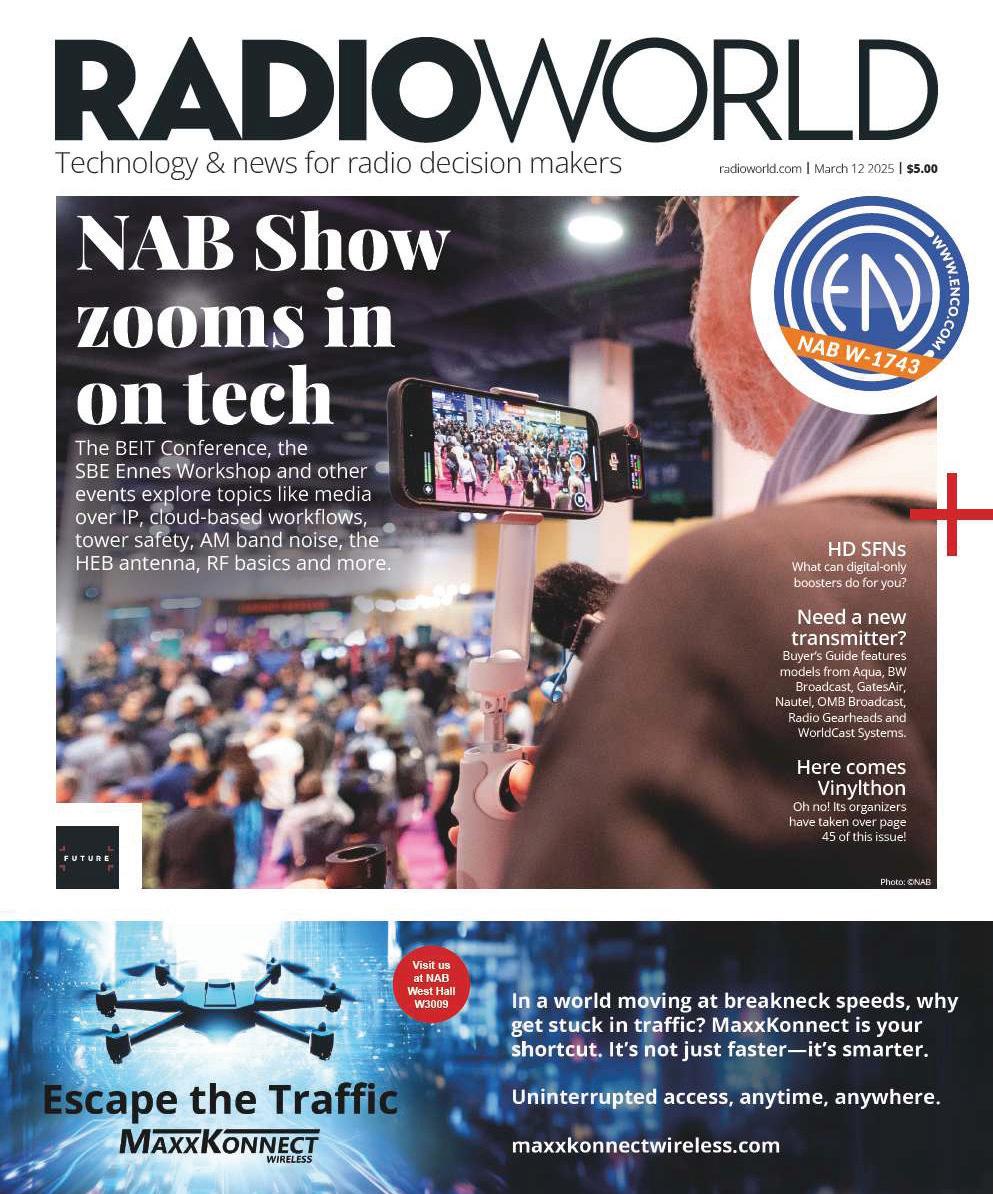

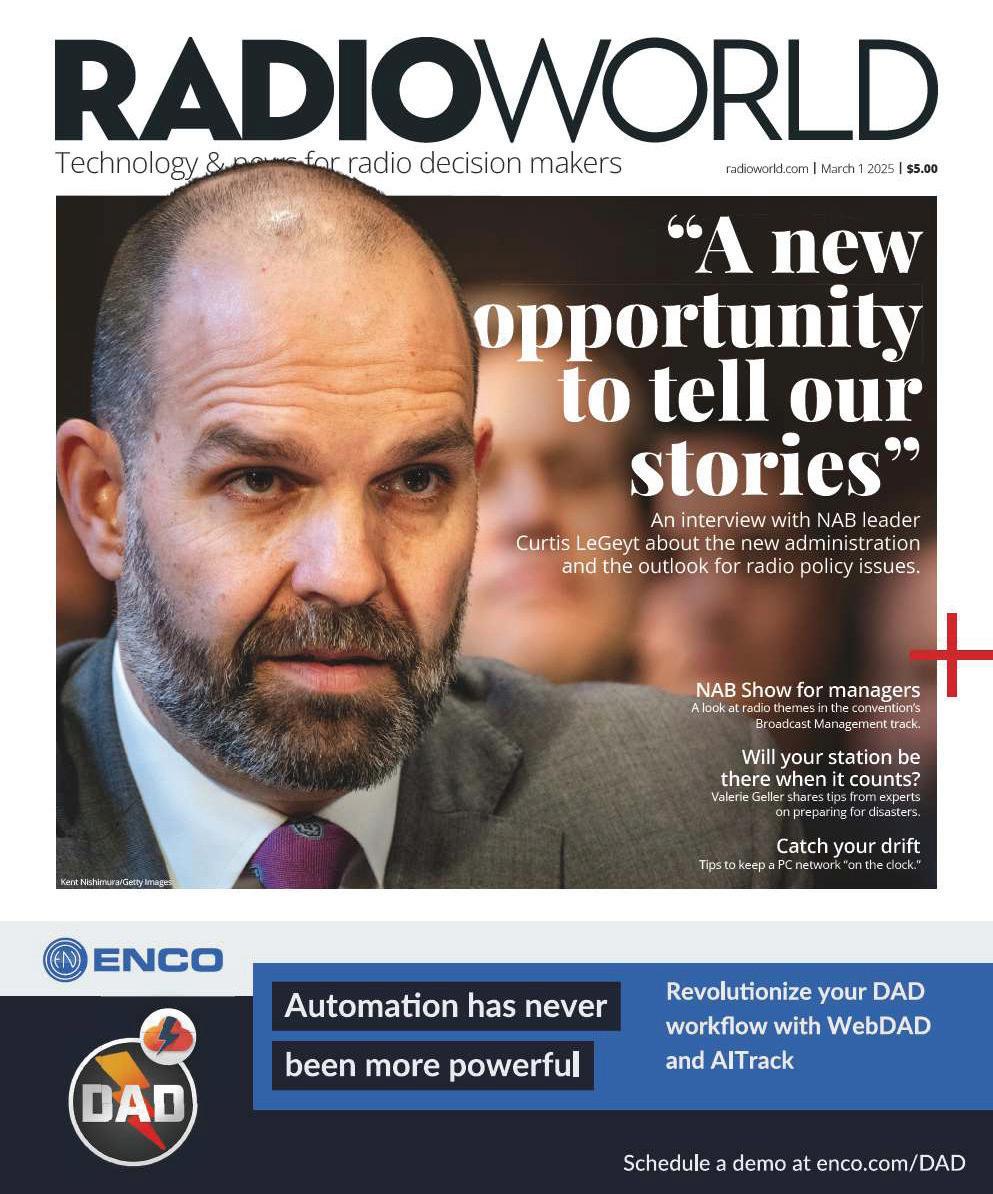

Connectivity and IP infrastructure are revolutionizing remote broadcast and production
By Paul McLane RADIO WORLD
The use of remote workflows in radio has been expanding since the onset of voice tracking, but the industry’s response to COVID-19 accelerated it significantly.
No longer is it just an occasional co-host who has a small studio setup at home. Radio may soon get to the point where the word “remote” loses its meaning entirely, because technology will allow all facets of its workflow to be done from anywhere.
“No doubt, broadcasting
has left the building,” said Dee McVicker, marketing director for Wheatstone, an NAB Show exhibitor.
“I was at an equestrian park recently when I struck up a conversation with a woman who was traveling for the winter with her two dogs and two horses, broadcasting her radio show from her living-quarters horse trailer. Radio has become just as mobilized as everything else.”
Not just individual shows but entire radio workflows can now be built on the premise of “remote” operation.
“While many radio people do-
ing live shows have returned to the studio, some have not,” said Marty Sacks, vice president of sales, marketing and strategy at show exhibitor Telos Alliance.
“Connectivity and IP-based infrastructure are the foundations of remote radio production. Without the ability to access and control gear located in the main studio, it would be pretty hard to implement remote workflows.”
That includes not only physical equipment but mixing software running in various computing environments, as well as codecs and phone controllers.
“We, and many of our clients, still love hardware,” Sacks said, “but workflows vary greatly, and we believe that our clients should also have choices that include software-based broadcast solutions that can live in server rooms or on cloud platforms and be accessed remotely any time, from anywhere.”
This is true not only for air talent, but for everyone involved in creating the product.
Today a radio production person based in one market can also be the primary support for others, said Jeff McGinley, vice president of engineering for broadcast group SummitMedia.
“Software like VCreative that displays all of that day’s work that needs to be done allows the team to work together as if they are all located in one building,” he said.
“Many of our production and programming people also have recording setups at home, allowing them the flexibility to continue working when other aspects of life happen and they aren’t able to make it into the station — a sick child or car trouble, for example,” McGinley said. “An internet connection with a VPN gives them the ability to control the automation system or access anything else that resides on the servers located at the station.”
The capabilities provided by high-speed connectivity, AoIP technology and cloud-based platforms are causing broadcast companies to rethink their overall approaches to building infrastructure.
Greg Davis, broadcast systems specialist for Cumulus Media, said: “Of course, cost savings is top of mind for everyone these days. As trends change in the industry, sometimes we must do more with less.
“Larger studios in the most prestigious part of town might not be needed anymore. Smaller, more adaptable consoles and audio equipment make it easier for equipment to be installed in a smaller area, or even portable in some situations. Real estate needs are not what they used to be. Studio are moving away from expensive high-profile areas.
“Technology can allow us to relocate these studios with lower costs and quicker and easier installation,” Davis said.
How far will this trend take us?
Marty Sacks said radio will see continued adoption of remote production over time, in terms of both the amount of content generated and the ease of remote production through continued development of the tech.
“Consider producing a talk show where both host and producer are fully remote. Talent can be located practically anywhere,” he said.
“Forward-looking broadcasters are doing this today, and at Telos we believe that with our continuous commitment to improving the tools and technology that enable it, the number of broadcasters adopting remote production models will increase.”
Dee McVicker expects remote production will become much more seamlessly integrated into the studio.
She noted that Wheatstone now offers fixed consoles that are navigated like an iPhone, as well as software for the laptop that look like a physical mixing console.
“We’ll adapt inside the studio and outside the studio, all of which is built on IP audio.”
The future, said Greg Davis, will include AI-powered audio processing, cloud audio production and improvements in cloud-based playout systems to allow remote control of station operations.
“Automation does not have to be cloud-based either. Advancement in reverse proxy, secure tunnels and encryption can enable software to control the studio from anywhere securely.”
As studios become smaller, they will also be more portable, Davis said. “Progress in browser engines and web services makes remote audio easier to accomplish.”
Jeff McGinley expects that all aspects of radio broadcasting will accelerate to working remotely in the next few years.
“With cloud-based automation and webRTC taking off, all aspects of programming, production and on-air could be done at home and sent to a hosted service to play out directly to the transmitter site,” he said. “A number of companies are already working towards the end goal of having no physical studio location whatsoever.” ●




“Over the past months, we have seen radio play a vital role in serving communities during emergencies. When disaster strikes, remote work�ows provide great �exibility in covering these traumatic events.”

JEFF MCGINLEY SUMMITMEDIA
“The majority of broadcasters are doing everything they can to demise space in their studio facilities. We’ll start seeing companies really shed square footage as more and more aspects of this business are done remotely.”

“Changes in audio technology can help broadcasters reduce costs while creating content easier and from di�erent resources than ever before. Also, technology is not always for the super technical sta�. A laptop with the right software can handle more situations than ever before.”

“High-speed connectivity puts you anywhere on the map. And touchscreens and software make all those tools of the trade — mixing, routing, dynamics, etc. — so much more accessible from a laptop or phone.”
Color can be measured via the camera’s electronic signal and if it can be measured it can be calibrated to be accurate on camera. That is the technique I have used for decades to get color accuracy on camera.”
BRAD DICKSON | RETIRED LIGHTING DIRECTOR/TECHNICAL CONSULTANT





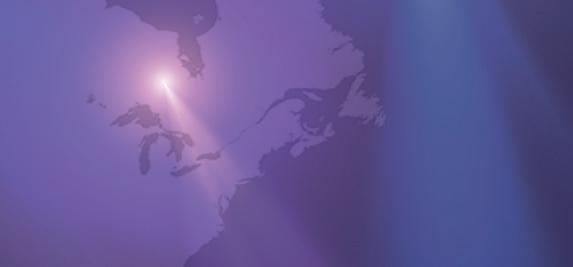











Exhibitors in the Wallonia Export & Agency Pavilion share what they want attendees to know about them when visiting the pavilion in North Hall. Visit the agency in booth N2349.
N2347
Crewbooking creates useful interactions among professionals worldwide in the audiovisual, film and event industries. Our user-friendly platform and app will help you to find qualified people and resources anywhere at any moment.

N2352
Cyanview offers a universal control system for cameras based on an RCP and small hardware modules. Our system addresses three elements through the use of a mixture of camera types: connection, control and image quality. It manages a wide range of cameras, from ENG camcorders to minicameras for capturing special shots and D-Cinema cameras used during live events. Being IP-based, the Cyanview system is ideal for any kind of production, even for remote production.



N2446
DreamWall is a specialist in broadcast production using virtual technologies, including virtual sets and augmented reality. Our workflow includes every virtual skill such as virtual set design, unreal integration, technical setup, support, training
and studio facilities. Our creative and tech teams work together to make projects run more smoothly.
N2452
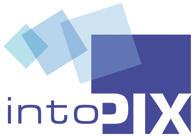
IntoPIX is a key partner in replacing uncompressed video and simplifying connectivity. The company provides powerful encoders and decoders, including TicoXS, TicoXS FIP (JPEG XS), TicoRAW sensor compression and JPEG 2000, with additional key assets such as encryption, video-over-IP software and reference designs (for LAN, WAN, cloud and wireless) with scalability to support resolutions from HD up to 4K and 8K with lossless quality and zero latency. Our software and hardware technologies bring competitive advantages for manufacturers, system integrators, content creators and broadcasters:
• in cameras (Studio cameras, Sportcam, HighSpeed, 360 camera);
• in live production, media or studio infrastructures (SMPTE 2022, SMPTE 2110, IPMX);
• and in hiqh quality low latency contribution, RAW storage, efficient editing, archiving and playback.
N2348
NeuroMedia Software helps ad-
vertisers navigate the complexities of today’s fragmented audiovisual landscape. Our advanced audience measurement and comprehensive monitoring solutions for media, competition and advertising provide clients with crucial insights, driving effective competitive strategies and growth. NeuroMedia Software delivers exceptional performance with an unbeatable cost-benefit ratio. Our digital-first approach seamlessly integrates data across all media channels — from traditional TV and terrestrial radio to the latest digital platforms — offering a unified, 360-degree view of the media landscape within a single, powerful platform.

N2361
We are On-Hertz, pioneers in audio-first production software. Our solutions empower you to deliver outstanding live broadcasting anytime, anywhere, at any size. Leading broadcasters trust our software to innovate their workflows, reduce complexity, and increase efficiency. With OnHertz, future-proof and amplify your broadcast production to meet both creative and economic demands.
N2450
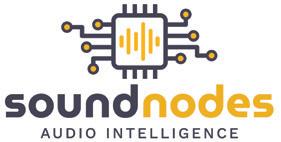
SoundNodes continuously invests in developing next-generation media and broadcast solutions. We empower established companies
through our software and hardware technologies. Our in-house development of code and hardware designs ensures complete product lifecycle control and precise alignment with our customers’ needs. Our Artificial Intelligence-powered algorithm outperforms other audio content recognition (ACR) systems, delivering superior results even in noisy environments and background detection. For hardware, we offer specialized audio capture devices that collect sound for analysis across diverse locations — clubs, bars, festivals, and shops — with models tailored to each situation. Our latest embedded tuners power RadioSpy and support all signal bands (FM, AM, DAB+, HD Radio, including LW and SW).
WNM provides AV facilities to major broadcasters and industries worldwide. We also offer technical assistance and consultancy services to large event organizers, including HBS, UEFA and FIFA. In addition, WNM specializes in studio engineering services and training for radio, TV and production houses. Our expertise extends to tailor-made AI solutions designed to meet your specific needs. For instance, WNM offers real-time “off the grid” automatic transcription (speech-to-text), ensuring complete privacy (fully GDPR-compliant) while eliminating the need for wide area network bandwidth. ●

Women’s Tennis Association
CEO Portia Archer has long been a primetime player in the sports world. She joined the top women’s tennis tour last August after a run as chief operating officer of the NBA G League, a developmental league for top NBA prospects. In collaboration with Executive Chair Steve Simon and WTA Ventures CEO Marina Storti, she’s responsible for advancing the Hologic WTA Tour’s business strategy and operations, with a focus on breaking new barriers for the sport and elevating the tour’s global platform.
We have seen our TV and streaming audience grow from 316 million in 2014 to over 1 billion in 2024, a growth trajectory we hope to continue in years to come.”
PORTIA ARCHER, WTA
The NAB Show Daily caught up with Archer via email ahead of her NAB Show fireside chat Monday afternoon, part of the Sports Summit. She’ll be interviewed by Tennis Channel analyst CoCo Vandeweghe at 2:45 p.m. in West Hall (W224-225).
NAB Show Daily: The WTA has been instrumental in expanding the reach of women’s tennis. What are some of the biggest opportunities and challenges in growing the sport globally?
Portia Archer: Tennis is a hugely popular sport with 51 events across six continents and a global audience over 1 billion, which exceeds the reach of the next five largest women’s sports leagues combined. At the same time, we operate in a competitive marketplace, so we need to stand out to retain our position.
We launched our new brand identity in February with clear ambitions to strengthen our global identity as the leader in women’s sports, showcase our outstanding product, attract new partners, new markets and capture the imagination of new fans and media.
NAB Show Daily: How is the WTA using technology to enhance engagement and bring women’s tennis to a wider audience?
PA: Fans of women’s sports are younger on average than fans of male sports: 73% are 18-44 vs. 62% for men’s sports, according to Wasserman. Fans are also superengaged — women’s sports’ popularity grew by 35% in North America alone, more in other regions.
We’ve invested heavily in building our digital platforms, with a focus on growing social media engagement and more player-driven content. As a result, followers to the WTA’s official channels rose 25% to 6.4 million over 2024.
In parallel, we are engaging with fans via different media, including fantasy games and live streams via the free WTA Unlocked service. As a result, we have seen our TV and streaming audience grow from 316 million in 2014 to over 1 billion in 2024,

a growth trajectory we hope to continue in years to come.
NAB Show Daily: With the rise of streaming and direct-to-consumer platforms, how is the WTA adapting its media rights strategy?
PA: Created in March of 2023, WTA Ventures is the commercial arm of the WTA, driving the commercial growth and media rights strategy of the business. We have delivered significant growth, including a 24% increase in revenue in the first full year of WTA Ventures. This increase is driven by the launch of a new strategy and a series of deals with media partners and sponsors, plus the success of the first edition of the WTA Finals in Riyadh, Saudi Arabia.
NAB Show Daily: How is the WTA continuing to push for
equal prize money and more high-profile broadcast opportunities for its athletes?
PA: The 2024 prize pot was $212 million, a record amount for the WTA and a growth of 15% from 2023. Last year, prize money for the WTA Finals Riyadh presented by PIF was a record $15.25 million, with singles champion Coco Gauff taking home $4.8 million, the largest purse in the history of women’s professional tennis and in women’s sport overall.
We still have some distance to travel to achieve equal pay across the board; however, we have committed to a $400 million increase in player compensation and set out a pathway to pay equality at our major WTA events by 2027. This includes a calendar to provide greater stability and visibility to the tour. l
Q. What can you tell us about your company and the products and services it is showcasing
Craig Frankenstein, Director, Digital Media and Broadcast Practice









SL10107 | AVI Systems is the leading AV/UC, digital media and broadcast solutions systems integrator in the United States. Visit the AVI Systems booth at NAB and talk with our experts about your digital media and broadcast needs. AVI designs, installs and supports fully integrated digital media and broadcast solutions for organizations in entertainment, restaurants, corporate environments, manufacturing, healthcare systems and many other entities! Learn more at avisystems.com.
Antony Falco, VP Marketing
Sony is using NAB Show as a launchpad for a variety of products across several different production sectors, most prominently live production solutions, news and production workflows, imaging solutions and virtual production.

Kicking off the show with a packed press event Sunday morning, the company highlighted a variety of offerings, including its new HDC-F5500V Super 35mm 4K CMOS system camera for live production; the VENICE Extension System Mini, allowing a VENICE 2 sensor to be extended from the camera body via a cable; and the OCELLUS camera tracking system, a marker-free tracking system for virtual production.
Brand new at the show, the HDC-F5500V is a Super 35-mm 4K global shutter CMOS system camera for live production featuring a global shutter imager, PL lens mount, viewfinder slide mechanism and common colorimetry with 2/3-inch 5500 and 3500 cameras. Additionally, an optional software license adds virtual iris capabilities for brightness control and VND capabilities for increased depth of field control.

W4000 | The Hydrolix streaming data lake powers the industry’s fastest-growing observability and security products, transforming the economics of managing high cardinality, high dimensionality log data. Choose ready-made solutions for Akamai Connected Cloud and AWS or use the Hydrolix streaming data lake to build your own observability platform.
Causing a big stir at the press event was a small unit — the VENICE Extension System Mini, expected to be available this summer. Roughly 70% smaller than the previous extension system, the Mini allows a VENICE 2’s sensor to be separated and extended from the camera body via a detachable cable. Further, stereoscopic clips can be captured for Spatial Content Creation and VFX background capture by using two Minis side-by-side.
Virtual production pros involved in spatial content creation will want to learn more about the OCELLUS camera tracking system. Expected to ship in the fall, the marker-free solution, designed for both indoor and outdoor use, is intended for broadcast and cinema applications, and uses four sensors on a sensor unit to track feature points on video signals.
Of course, there’s plenty more to see at the Sony booth, including the new HDC-P50A compact and lightweight POV box camera; new 16.5-inch BVMHX1710 and BVM-HX1710N 4K professional monitors; HawkREPLAY, an instant replay broadcast solution for on-premise, hybrid and remote production workflows; software updates from Nevion; and lots more. ●
—
Clive Young, Mix


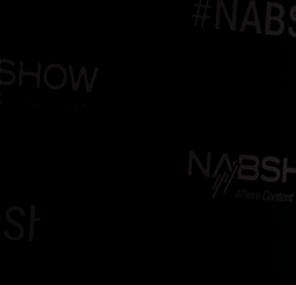
NAB Show’s BEIT Conference got off to quite a start on Saturday morning, with an opening panel where Astronaut Tracy Dyson conversed live with colleagues aboard the International Space Station via Johnson Space Center’s new live Ultra HD switching and routing capability.
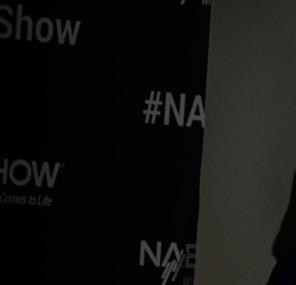
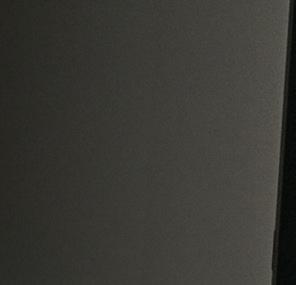
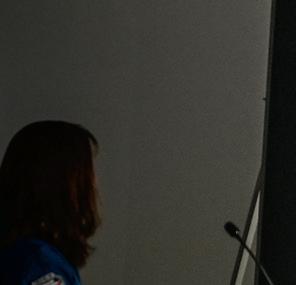

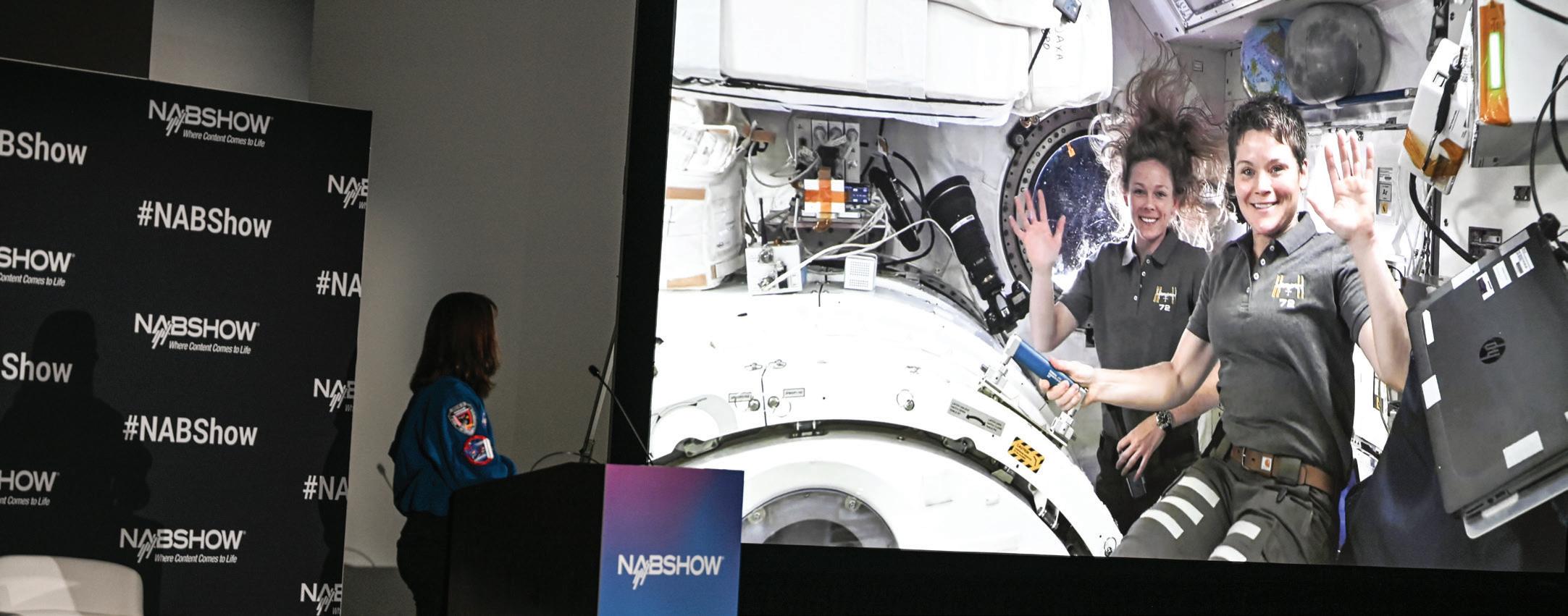

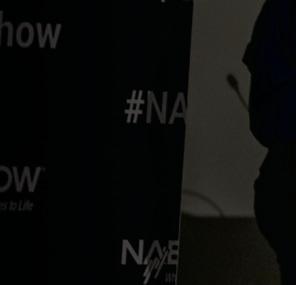
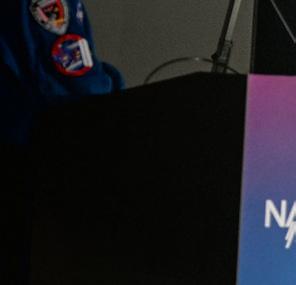
In its opening keynote on Saturday, Ross Video unveiled a host of new solutions and improvements to its offerings, highlighted many successful deployments, celebrated 33 straight years of growth and entertained the audience with some fun spoofs on Area 51 and Ross Socks, which are now in their ninth iteration.
Evertz is emphasizing how its technology can help media companies create, deliver and capitalize on their content at the 2025 NAB Show.


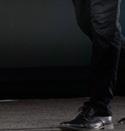


“It’s about enhancing elements that help [broadcasters] not only create the stories, but move the stories around the facility, help them finalize that story and then deliver that story to the end users,”


In what has become a tradition, Ross’s chairman and CEO, David Ross, began by discussing company results for the last year, reporting: “I’m proud to share that 2024 was our best year ever. Thanks to team Ross, we achieved 33 consecutive years of orders growth and yet again, we’re twice as big as we were just five years ago [in 2019].”
Ross also highlighted the company’s environmental progress.
“Last year, we set a goal of having a carbon-neutral factory by 2025, and I can confirm that our factory is carbon neutral, not at some date in the future, but right now,” he said. “This might be the first carbon-neutral factory in our industry.”
During the keynote, Ross demoed a number of products, including Carbonite HyperMax, XPression, Ultrix, Media I/O, OverDrive and RPM openGear UI and the work of its Rocket Surgery design operation, which is celebrating its 10th anniversary this year. Solutions relating to cloudbased production, graphics, motion graphics, weather, robotics, switchers, newsrooms, augmented/virtual reality and other products were also demoed and used in the lavish keynote production.
The company also rolled out the ninth interaction of Ross socks, using its graphics and virtual reality technologies to depict an Area 51-style landing of a UFO. Several executives dressed as “Men in Black” modeled the socks. David Ross declined to say if the new socks are made of extraterrestrial materials. The socks and other Ross solutions are on display at SL206. ●
— George Winslow, TV Tech
Mo Goyal, senior director, international business development, live production, said.
Among the new products on show in Las Vegas is the FRCX-2000:



Real Time Live Frame Rate Conversion, a real-time live frame rate converter, which can move between 50 Hz and 59.94 Hz. “This helps us bridge the gap between North America and Europe and Asia, and be able to move content very quickly and do it in a live form,” Goyal said. “With our FRCX-2000, we can now handle not only SDI but 12G SDI and UHD, as well as doing conversion for IP facilities, both in the uncompressed world of SMPTE ST 2110 as well as the compressed world of HEVC or H.264.”
Goyal also discussed the development of the JPEG XS codec and how it is becoming critical for live sports production.
“We see JPEG XS as a very critical part of remote production, moving signals from point A to point B,” he explained. “There are a number of advantages to taking that approach. JPEG XS is a very versatile codec, meaning that it can be deployed in both a hardware application or hardware solution, as well as software, and we still don’t give up the quality or the latency.” ●
— Jenny Priestley, TVB Europe
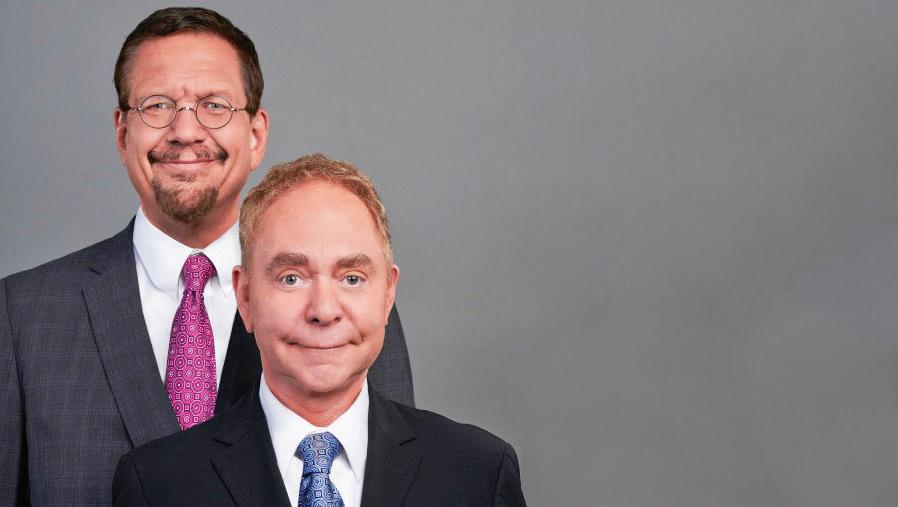

10 a.m.
At the “We are Broadcasters” session on the Main Stage (W4543), NAB will present the Television Chairman’s Award to magicians Penn Jillette and Teller. The duo has more than 50 years in show business ranging from Broadway to network television. For 11 seasons, magicians have attempted to dupe Penn & Teller with their tricks or illusions on the hit CW Network show, “Penn & Teller: Fool Us.” Their previous Showtime series, one of the longest-running on the network, “Penn & Teller: BS!” was nominated for 13 Emmy Awards. The duo has also made multiple cameos on shows like “Friends,” “The Simpsons,” “Modern Family” and “Big Bang Theory.”

Disguise supports you every step of the way. Our experts streamline complex workflows, provide hands-on support, and keep your studio running efficiently. In an industry where margins for error are razor-thin and competition is fierce, we give you the tools to stay ahead.
Contact us at info@disguise.one
N1807 | Dream Chip Technologies, a leader in miniature and point-of-view cameras, is launching its latest innovation, the AtomTwo camera, at the 2025 NAB Show. Building on the success of the widely used AtomOne series, the AtomTwo brings a new level of quality and convenience to the sports and production market.
In a self-contained package just 29 millimeters by 29 mm by 33 mm, the new AtomTwo offers outstanding HDR quality with a huge dynamic range. The integral 4.5-mm lens provides a 90-degree field of view, ideal for body-worn ref cams as well as fixed POV uses. Weighing only 55 grams, including lens and stereo microphone, it is also perfect for mounting on a miniature drone, giving broadcasters viewpoints that have been impossible in the past.
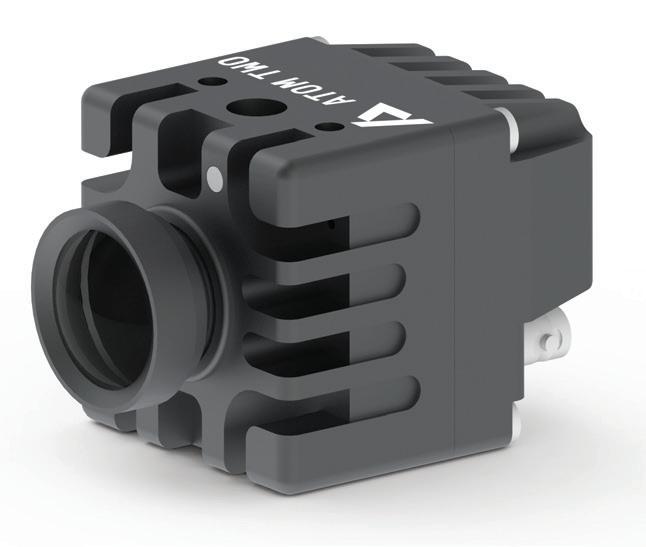
W1921 | At NAB Show 2025, Interra Systems is showcasing its latest BATON solution, BATON 9.2. This new version includes enhanced autoscaling, enhanced video quality checks for 4K files, and new support for video quality, such as blank bars check and CIE color gamut check. It accommodates ITU-R BT.1702 2023 PSE video flash guidelines and contains algorithm improvements in QR code, freeze frames, duplicate frames, media offline, blockiness, defective pixels, video dropout, burnt-in text, shot transition and more.
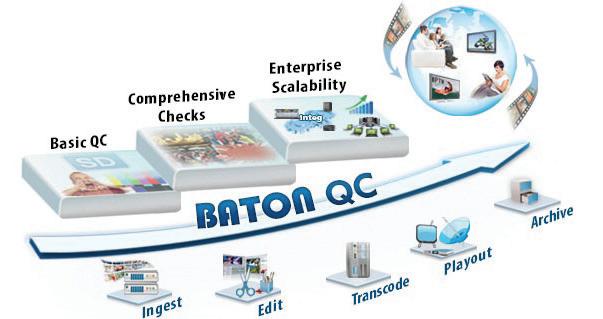
The AtomTwo is the smallest camera with a global shutter available on the market today, according to Dream Chip. This is vital in high-value productions like sports, where a rolling shutter creates very visible distortions and disturbances.
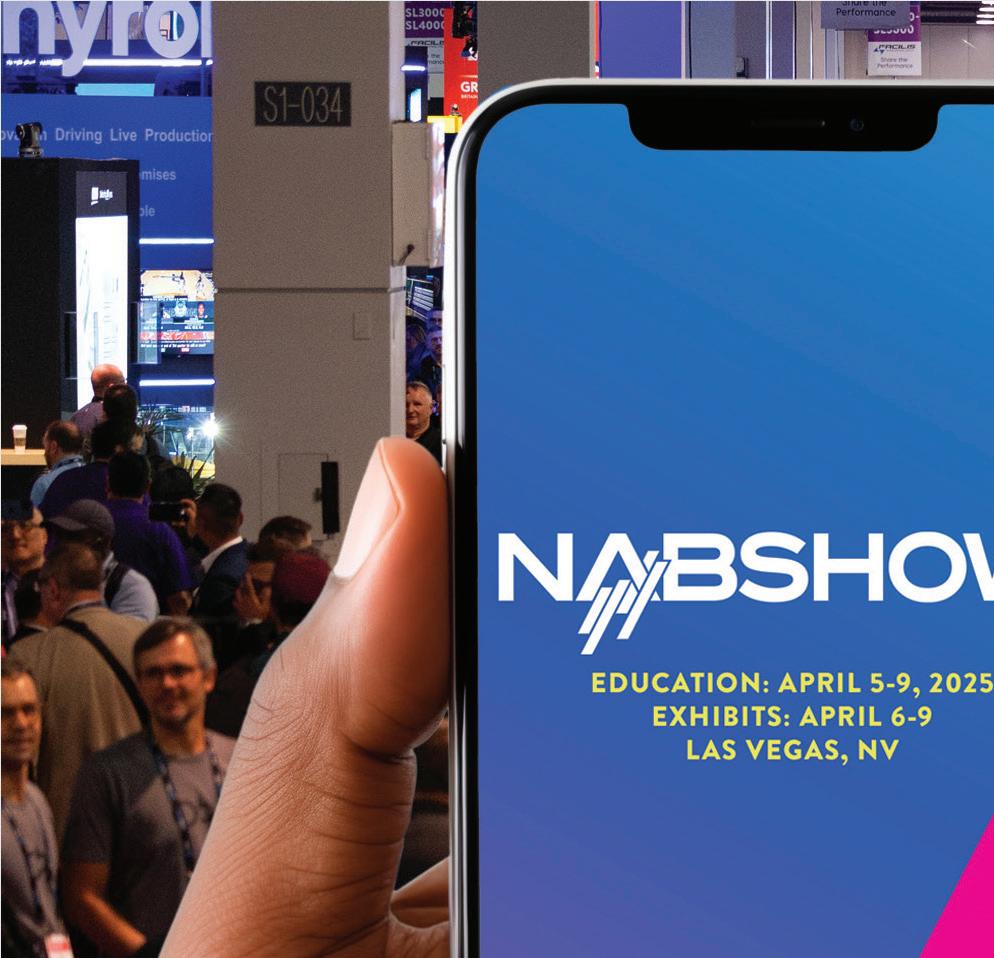

BATON 9.2 also supports Sony 360 Reality Audio, LZW compression in TIFF files, AV1 video format, BW64 audio, 24-bit LPCM audio in an MP4 container, sidecar Dolby Vision metadata files, an integrated Whisper model for audio language identification, and more. The latest BATON release also features significant installation process improvements for enhanced usability and resilience, along with UI support for dark/light themes, a new database manager tool and enhanced diagnostics and alerts.
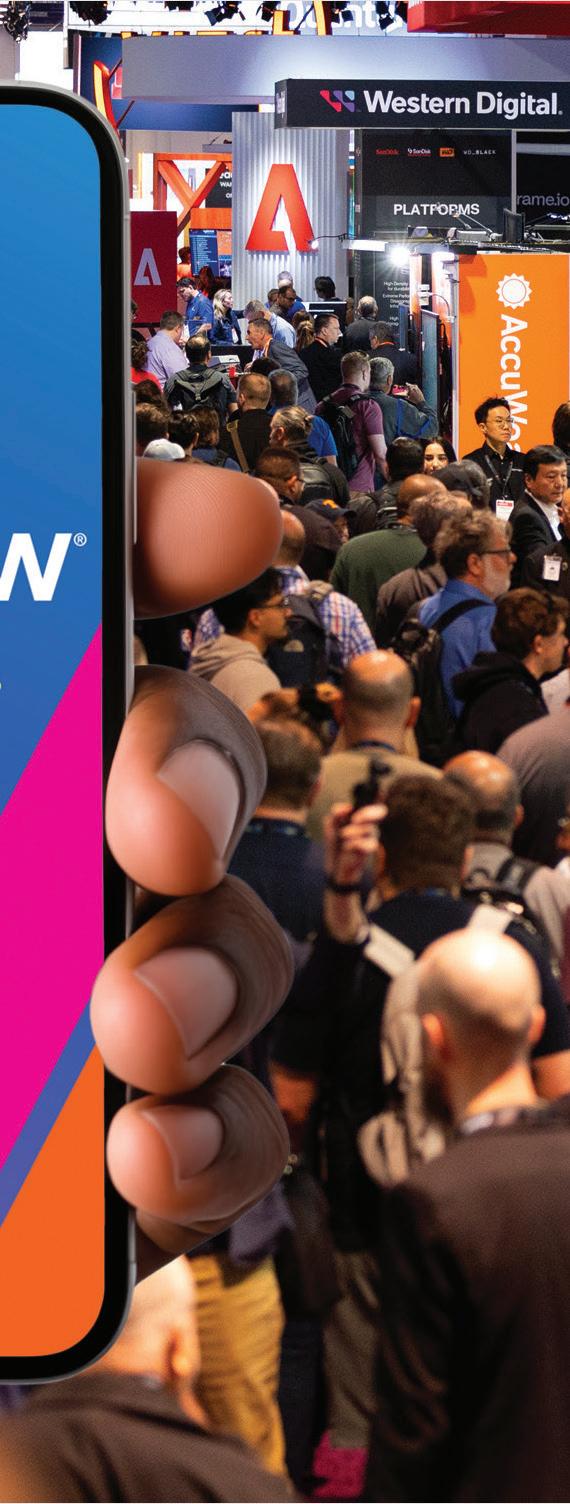
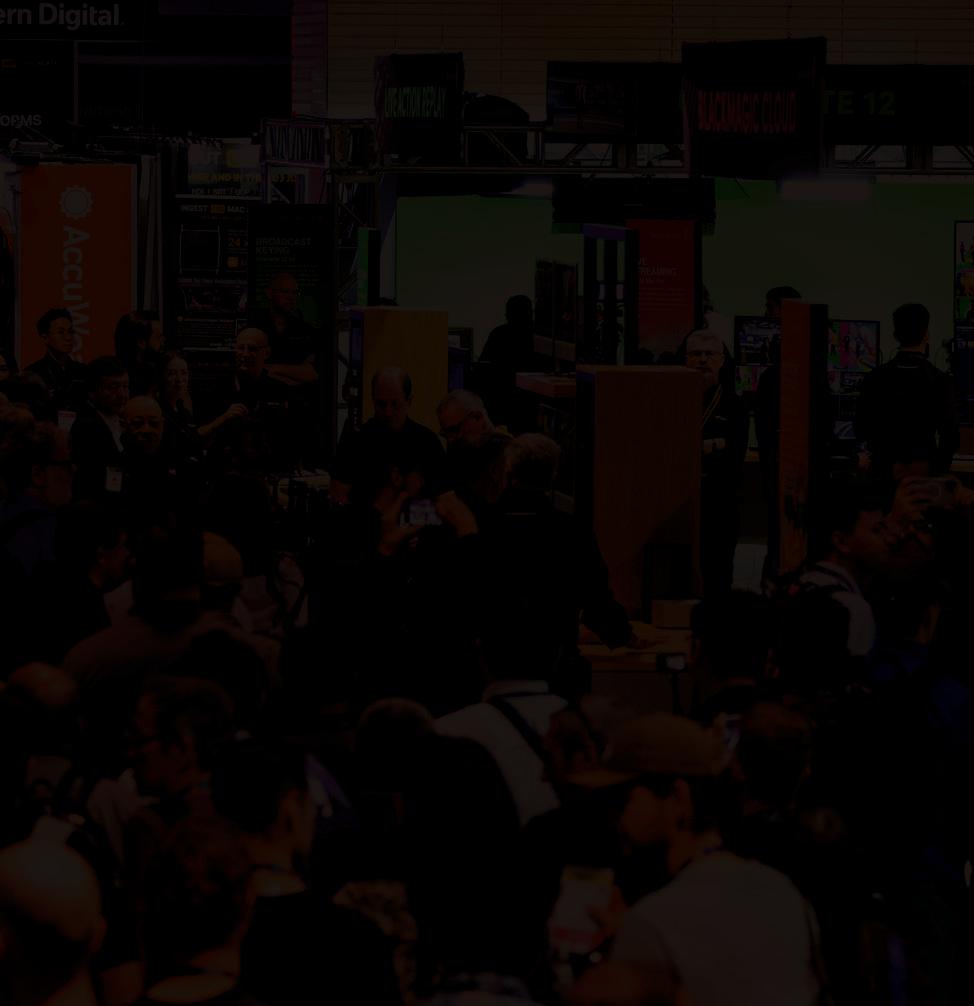

Make the most of your NAB Show experience by downloading the 2025 NAB Show mobile app. The official show app has everything you need to plan for and navigate the show, including:
• View floor plans to easily find exhibitors and conference programming
• Build your personalized agenda
• Add your must-see exhibitors to your favorites list
• Find networking events throughout the show Scan QR Code or



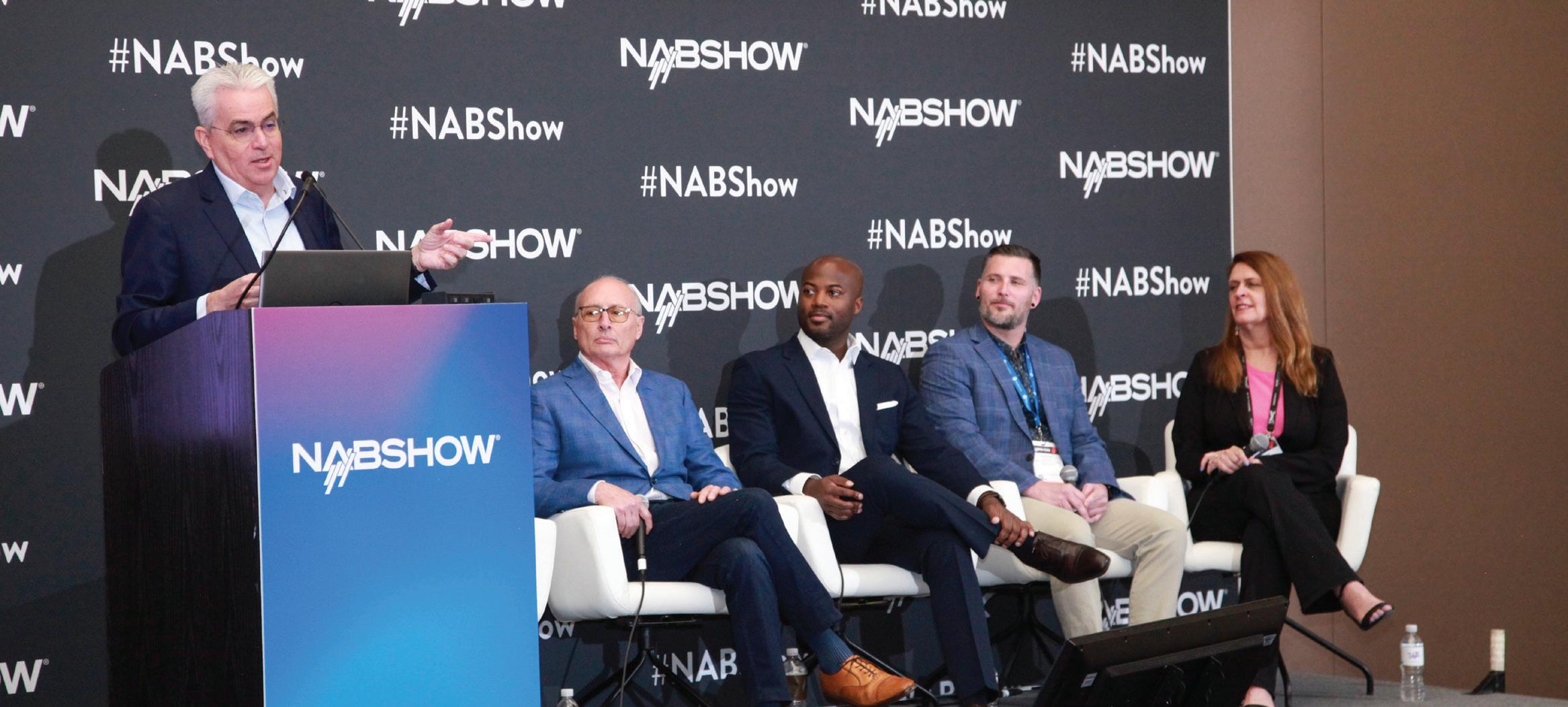
Medium’s digital revenue jumped 10% to reach $2.1 billion in ’24
By Elle Kehres RADIO WORLD
A Sunday session titled “The Local Advertising Buying Landscape” brought a flurry of attendees to West Hall. As part of the Broadcast Management Track, the session dove into the results of Borrell Associates and RAB’s 13th annual digital benchmarking report on radio digital sales.
Released earlier this year, the report analyzed online ad revenue from 3,743 radio stations — also surveying 388 local radio advertisers and 221 radio managers — to reveal that radio’s digital revenue grew 10% to reach $2.1 billion in 2024.
Expanding on those findings, a group of panelists came together to discuss what clients are buying and how radio sellers are suc-
ceeding, or missing out, on that revenue.
To kick off the session, Gordon Borrell, CEO at Borrell Associates, spoke about local business owners’ and advertisers’ digital sales habits. Borrell said radio has a very large stock of advertisers, and, according to the report, these advertisers are six times more likely to buy digital/ streaming video ads than traditional over-the-air.
“That’s a really important finding and a really important key to the transition of radio stations,” he said. “They now are able to compete with their broadcast TV brethren, becoming more video centered and selling digital advertising around it.”
Borrell said 28% of radio advertisers are buying digital and that demand is only growing. He
said stations must embrace digital because advertisers are not buying radio at the clip that they did just five years ago.
One of the standout findings of the Borrell/RAB study is that more than a third of advertisers say radio has the most marketing experience, with radio reps being the most trusted resource in the local market.
Moderating the session was Mike Hulvey, president and CEO of RAB. He shared insights into digital revenue opportunities and what stations need to hone their own sales skills.
Hulvey said the key to a successful advertising campaign is simpler than one might think. When creating a sales strategy for your local clients, ask: “Can it sell a hamburger?”
At the most basic level, Hulvey
said, advertisers are looking to accomplish tangible goals core to their mission — whether that’s selling more hamburgers at their restaurant or buying more trucks for their pest control business.
Greg Davis Jr., vice president and market manager at Davis Broadcasting, echoed Hulvey’s comments, saying most advertisers won’t bother with looking at graphs or examining click-through rates for digital ads.
“If we boil it all down, it’s all about solutions-based selling,” said Davis. “Stop trying to sell tactics. Stop trying to become the expert.”
Other speakers at the session included Dustin Wilson, senior director of digital strategy at Marketron, and Linnae Young, executive vice president of operations and revenue development at Salem Media Group. l
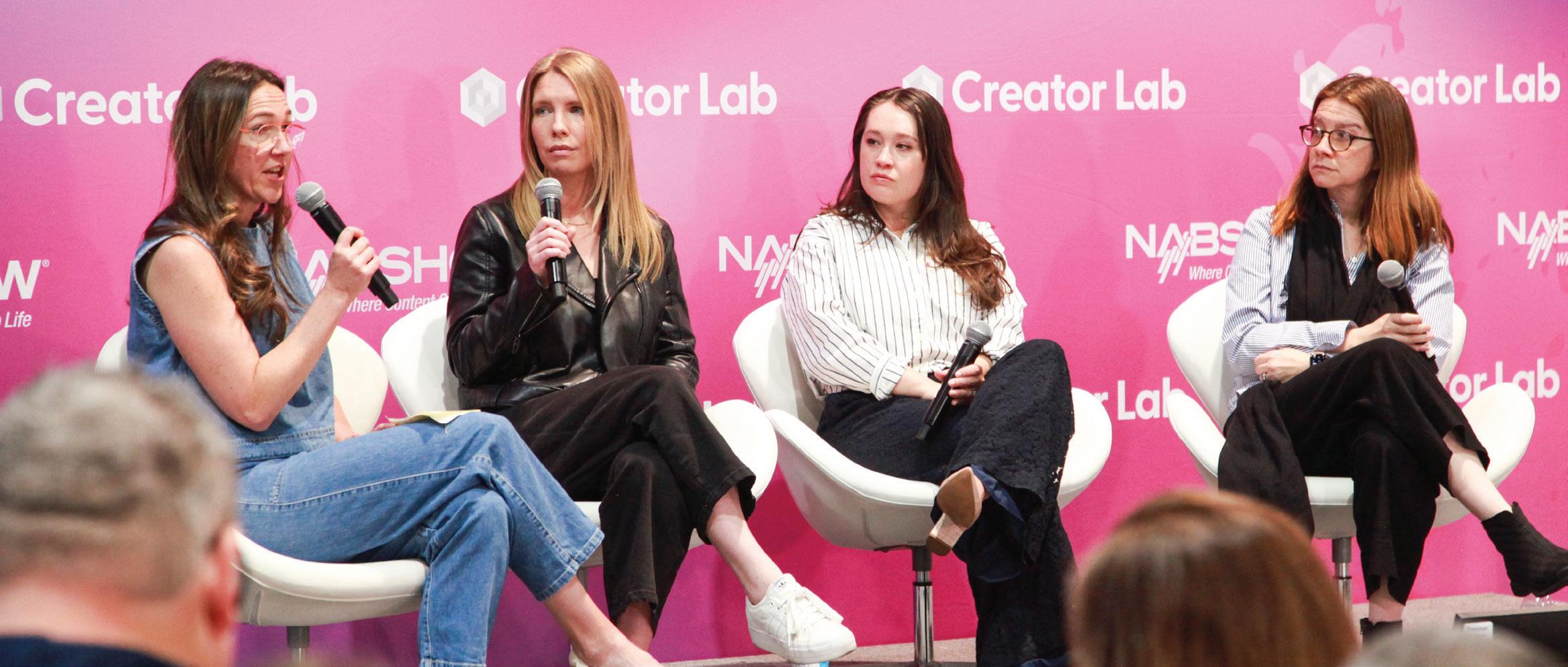
By Phil Kurz TV TECH
The uncertain future of TikTok and its effect on content creators, as well as the need to diversify platforms and types of content, were front and center during the “State of the Creator Economy” session Sunday morning in the Creator Lab in the South Hall.
“Just in the past 72 hours, technically a lot has happened,” Jasmine Enberg, vice president and principal analyst at EMARKETER, said. “We saw [President Donald] Trump sign another executive order extending the deadline for the sale. We also saw ByteDance, which owns TikTok … make a statement for the first time about how they are looking for a solution and are in dis-
cussion with the U.S. government.”
Enberg, who joined Natalie Jarvey, author of the “Like & Subscribe” newsletter from Ankler Media; Leslie Morgan, owner of Every Problem Solved and moderator Brit Starr, chief marketing officer at CreatorIQ, on the panel, noted the “wild card” is approval of any deal from China.
The good news for TikTok creators and advertisers is not much has changed over the past year, with the exception of it going briefly dark in January after the U.S. Supreme Court upheld a law requiring the Chinese-owned platform’s divestiture, Enberg said.
Consumers returned to TikTok quickly and re-engaged, as did advertisers after a brief interruption. Most creators and advertisers
have put contingency plans in place should TikTok go away and are beginning to diversify the platforms they use, she added.
There has been no slowdown in brands activating creators on TikTok over the past few months, and there is no sign of that slowing down, said Jarvey.
“I do think we’ve seen the diversification across comparable content formats. YouTube Shorts, specifically, have been an area that has been increasing [by] triple digits — like 700%-plus year-on-year in terms of the number of campaigns,” she said.
Marketers are less likely to think about TikTok first given the uncertainty over the platform’s fate. They are now requiring creators to be active on other platforms, Enberg said.
Besides YouTube Shorts and Instagram, creators are also going to platforms that give them more control over their content, audiences and monetization, “because many of them were caught by surprise when TikTok turned off … and they realized they were reliant on a platform they really didn’t have any control over,” she said.
Noting that creators are making a lot of money from TikTok, Jarvey said most creators would be alright.
“It’s really about creating longer form content,” said Morgan. “The challenge is the folks who are so hyper-focused on their short-form content. How do you figure out how to do long form?”
The mindset of clients Morgan works with is “a little more challenged” by creating long-form content, she said.
“The rate of churn on short form is so much bigger than what it takes to do long-form content,” said Morgan. “What is the strategy and how are they creating those creative arcs, etc. Because it’s a much different game from them than short form — and beyond compilations.” l
By Tom Butts TVTECH
Avid sports fans know that when it comes to the game, the score is important but sometimes the story behind the game is just as exciting. That was the theme of “Beyond the Game: Original Content Driving Viewership Off the Field of Play,” part of the NAB Show’s Sports Summit on Sunday.
Moderator Hannah Taylor, communications strategist for The Lippin Group, joined Lauren Fisher, vice president, creative director at Religion of Sports; Trevor Gill, vice president, sports development/ executive producer at Vice TV; Sara Rea, head of unscripted at Hello Sunshine; and Whit Jackson, vice president of media and entertainment at Wasabi Technologies to discuss innovative storytelling techniques broadcasters use to up their game.
Panelists discussed what drives fans to want to learn more about their favorite athletes. “The stakes are always there with sports, the highs and the lows are just there, and they’re relatable and aspirational all at the same time,” Rea said. “When they take off the gear, they’re humans, just like everybody else.”
Deciding who to profile can also impact how media companies approach storytelling. “There’s only so many GOATs, like you run out of GOATs kind of quickly,” said Fisher. “We don’t want any of our shows to be a one-and-done thing. What does that mean? It doesn’t mean doing the same show over and over and over again, but building a relationship.”

Gill emphasized the personal approach when profiling star athletes.
“It’s a long-term relationship,” he said. “It’s time and trust — there’s no magic formula, just relationships.”
The best storytellers can also bring attention to endeavors that may not get the kind of attention that’s focused on professional leagues, according to Jackson. “One thing that really appeals to me is some of the undiscovered stuff that you’re exposed to,” he said. “One of my favorite sports-type movies is ‘Free Solo,’ the story of Alex Honnold, the climber, who did the free ascent of El Capitan. It’s an ‘edge of the seat’ kind of adventure with a really interesting human story behind the whole thing.”
Matching the type of content with the right platform is also an important factor when deciding how
to cover sports; both long-form documentaries and TikTok snippets have their value, according to Fisher.
“I think people crave that level of depth; people want to go deeper,” she said. “They are craving authenticity and craving getting closer to the people. You may see them on social to get the highlights, but then that opportunity to be intimately connected with athletes and teams is an insatiable kind of thing.”
Before deciding who and how to cover athletes up close and personal, media producers need to justify their approach, Rea said. “Why does the world need this now?” she asked. “What’s the current relevancy of this story? You have to have great characters, you have to have great access, but you also need to be at a time and place that can resonate with people
and making sure that you lean into the story, to ‘wear it.’”
The rise in women’s professional sports has prompted companies to alter their approach to fit today’s reality. Fisher noted how media coverage has evolved over time.
“The dialogue around women’s sports used to be almost charitable, which was really annoying,” she said, adding that subjects such as equal pay are “super important, but the way we want to approach storytelling is with great stories and great athletes that are doing amazing things and let the rest fall into place.”
The ebb and flow of competition lends itself well to the drama of storytelling, Gill said. “The stakes in sports are just natural for storytelling. Whether it’s four quarters, two halves, a six-month season, you can build a story so naturally through there,” he said. l
SL13413 | Nxtedition is showcasing its unified platform featuring XR studio control and the new advanced AI Agents and AI Commands.
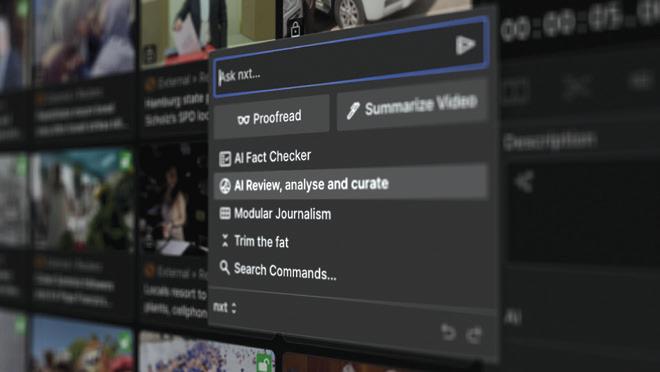
For the first time at NAB Show, visitors to nxtedition’s booth can try an XR headset and take control of its award-winning, fully automated XR mixed-reality studio gallery, showcasing a groundbreaking approach to live production. With nxtedition’s integrated software environment, the operator and studio can be located anywhere, expanding the possibilities of remote production.
By integrating multiple open-source AI models nxtedition has created AI Agents capable of running background tasks. These AI Agents can automatically generate content titles and descriptions for social-media posts derived from news stories or video transcriptions. Editors can use them to suggest new angles on a story based on current scripts, automatically fact check incoming material and even adapt the stories for different audiences. This multi-AI capability runs within the nxtedition software environment.

W4129 | The Aximmetry team is demonstrating the Aximmetry Eye mobile app at NAB Show 2025. Aximmetry Eye for iOS enables users to stream their mobile camera feed directly into Aximmetry, providing position and direction data for talent, objector camera tracking. Moreover, it transforms a mobile phone into a real-time preview monitor for previsualization. By integrating seamlessly with the Aximmetry Virtual Production Platform, this app turns a smartphone into a dynamic content creation hub, eliminating the need for bulky equipment.
Aximmetry is also advancing virtual production through the loud with Aximmetry Gateway, a new application capable of transmitting video, tracking and controller data to and/or receiving video from another computer.
By expanding its ecosystem with MOS integration and tools like Aximmetry Eye and Aximmetry Gateway, the company continues to empower creators and push the boundaries of what’s possible in virtual production at an affordable price point.
W1717 | Dalet solutions — including Dalet Flex, Dalet Pyramid and Dalet AmberFin — are now available in AWS Marketplace, a digital catalog with thousands of software listings from independent software vendors that make it easy to find, test, buy and deploy software that runs on Amazon Web Services (AWS). Dalet solutions transform how media-rich enterprises operate by ensuring efficiency, scalability and collaboration that is faster to deploy, delivering return on investment and immense value in weeks, not years.
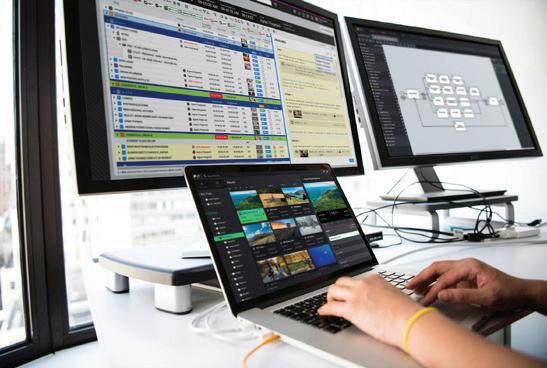
Now, with Dalet Flex, Dalet Pyramid and Dalet AmberFin available on AWS Marketplace, customers can experience these benefits through streamlined access to cutting-edge media workflows with simplified procurement and deployment processes. Leveraging AWS Marketplace, users can enhance operational agility, securely scale their infrastructure and optimize their investment with flexible, subscription-based options. This integration enables organizations to adopt and implement Dalet’s innovative solutions swiftly, driving meaningful impact and faster time-to-value.
N3039 | Mo-Sys Engineering, will be exhibiting at NAB Show, demonstrating its latest innovations for film, broadcast and beyond.
Making its debut this year is the ultra-compact L20 remote head, which delivers quiet operation and speeds of up to 360 degrees. For example, anyone using the L20 for high-speed sports coverage can now achieve ultra-smooth motion without compromising on responsiveness, while productions shooting in sound-critical environments, such as car interiors, can capture dynamic shots without unwanted noise.
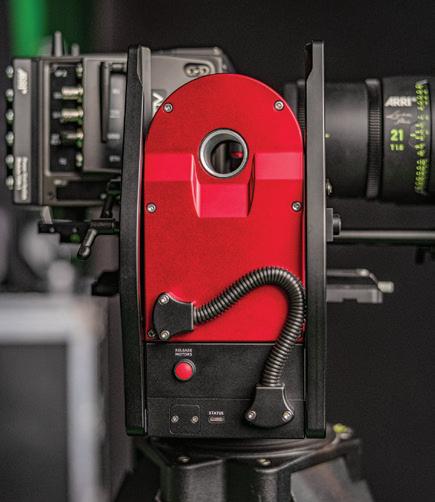
Interactive installations will highlight how Mo-Sys is making real-time AR graphics accessible to content creators, enabling sports and outdoor broadcast productions to integrate high-quality AR elements seamlessly. Mo-Sys Academy will also be featured, offering hands-on training courses in virtual production, designed to help creators master AR workflows and tools. The Academy also provides unique project assistance to support students with their first ventures into broadcast AR.
SL5006 | Global media technology company Backlight is showcasing new advancements in AI-driven automation and media management at the 2025 NAB Show. With Automation Engine soon to be available in Backlight’s Iconik media-management solution, users can build powerful, automated workflows without needing API interaction. It allows content creators to automate tasks such as transcriptions, metadata-driven asset movement, and cold storage management, significantly reducing costs and improving efficiency.
Backlight is introducing Channel Studio, Wildmoka’s new cloud-based solution for 24/7 live channel management. Built entirely for the browser, Channel Studio allows digital teams to create and operate always-on channels without the need for expensive control rooms or hardware.
Backlight is also unveiling a comprehensive suite of AI-driven features for Wildmoka, designed to simplify the production of vertical short-form content. These capabilities include speech-to-text on live ingest, live translation, smart verticalization with automated rezoning and titling and caption animations.

At a Sunday-morning press event, Verizon Business (W2530) announced its Private 5G Network for field production. Designed with AI to help broadcasters manage dozens of camera feeds during a live event, Verizon’s system is built on NVIDIA accelerated computing, including NVIDIA AI Enterprise and NVIDIA Holoscan for Media. Other key partners include FanDuel TV, Haivision and Ericsson.

The new solution addresses key challenges that broadcasters face in the field. It deals with location-based connectivity issues — both rural areas with no coverage and urban areas with internet congestion. Guillaume Polaillon, product line manager for NVIDIA, said the Verizon platform and its AI capabilities will “supercharge production.”
“Live content production and experiential events are evolving rapidly, demanding innovative approaches to content creation, distribution and fan engagement,” said Daniel Lawson, senior vice president, Global Solutions, Verizon Business. “We are demonstrating at NAB 2025 how our Private 5G Network, coupled with Enterprise AI solutions, enables more efficient, cost-effective broadcast workflows.”
According to Lawson, the company is looking at three potential go-tomarket strategies: a rental model, a capex purchase model and a service (opex) model. He said Verizon’s new solution builds on a lot of trends in media and entertainment.
“It’s bringing a number of worlds together, innovating on their own, to revolutionize M&E production,” he said. “It’s the confluence of three technology parts of the broadcast industry, and we’re just scratching the service of potential benefits.” ●
— Mark Pescatore, Systems Contractor News





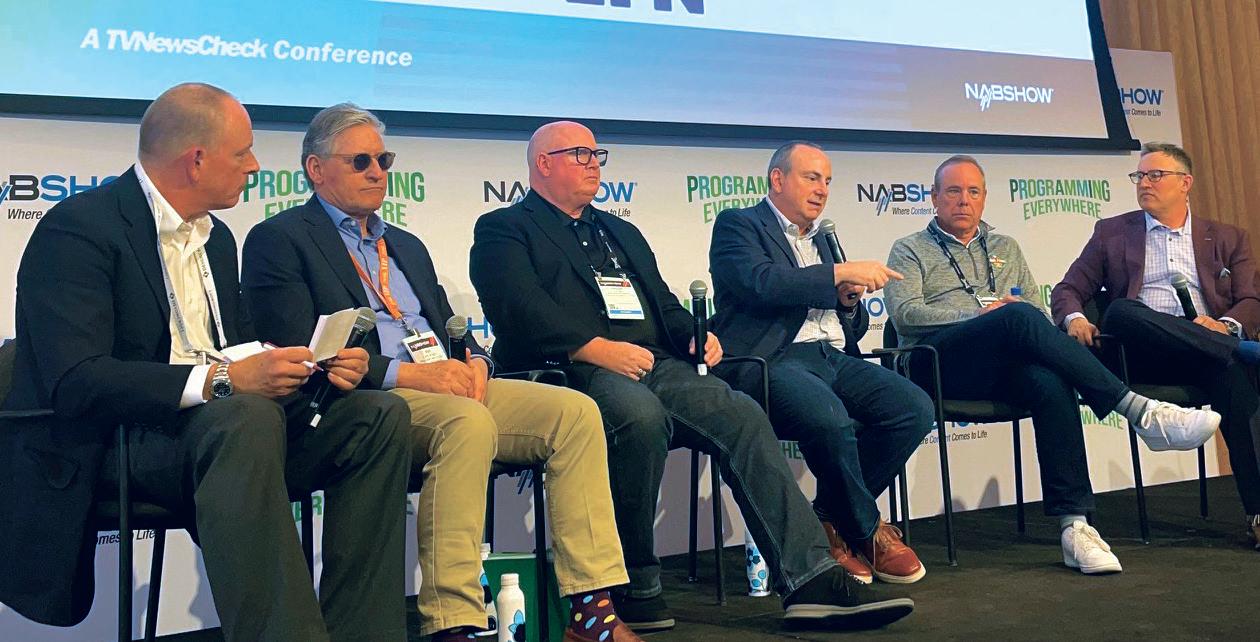
By Mark Hallinger NAB SHOW DAILY
The sports rights landscape has changed enormously in recent years in part due to the events surrounding Diamond Sports Group. A formerly constricted market was set loose, opening sports rights deals to local broadcast, where they generally hadn’t been for ages. For the last few years, a fairly steady parade of deals have been announced between broadcasters and local professional teams, college leagues or even broader professional leagues like the WNBA.
“(Re) Building a Sports Business on Local Broadcast,” part of the Programming Everywhere Conference, provided a status report on the still-developing market, one that is potentially critical
to local broadcast in general.
Glen Dickson, contributing editor of TVNewsCheck and the panel’s moderator, started by asking what stage the brave new world of sports broadcast rights was in.
“It’s the second inning,”
few years old. “It feels like it’s still very early; a lot of the teams that had been with regional sports networks (RSNs) for decades are sort of looking at the landscape, trying to figure out if over-the-air is a good platform for them.”
It feels like it’s still very early; a lot of the teams that had been with regional sports networks (RSNs) for decades are sort of looking at the landscape, trying to figure out if over-theair is a good platform for them.”
BRIAN LAWLOR, SCRIPPS SPORTS
done in the past, by being broadly available in mass media and broadcast. And teams have to adopt again to an ad-based model versus a distribution model.
Scott Shapiro, executive vice president of corporate development at Sinclair, said, “[With] the eyeballs definitely ahead of the monetization, it feels early with lots of opportunity and lots of risk.”
Ratings are generally very good, Lawlor said. “One of the reasons why we got into sports was because it drives some of the largest viewing of any genre. We’ve all seen the numbers from two years ago when 96 of the top 100 shows on TV were live sports. That plays itself out in local sports, too.”
Pat LaPlatney, president and coCEO, Gray Television, concurred, noting an Atlanta Braves game that had 10 times the ratings of the comparable period in the past. “In terms of time period, there is no comparison, the numbers are huge compared to what we had in there.”
Shapiro said he had been generally impressed with the younger skew of broadcast viewers and mentioned cross-promotional tieins with local news. He described the future of streaming as “TBD for now,” though that opinion was not universal. Some of the panelists felt strongly about the complementary nature of streaming and linear.
Frank Cicha, executive vice president, programming, Fox Television Stations, said it was a pleasure to not be competing with teams as with the RSN model. “We say, ‘How do you want your brand?’ We’re letting the teams play a heavy role.”
said Brian Lawlor, president of Scripps Sports, picking up on a baseball metaphor. He said some of the first deals brought back to over-the-air broadcast are only a
The panelists agreed that we’re still in the early innings — bottom of the second, top of the third. They generally agreed that sports need to cultivate new fans as they had
Rick Young, senior vice president, head of global products, LTN, couldn’t say which inning this new world of local sports is in, but he said LTN has been working with many broadcasters since the start of metaphorical spring training. Live MC services can connect a main market with additional markets. “Sports is really valuable and fits customization.” l
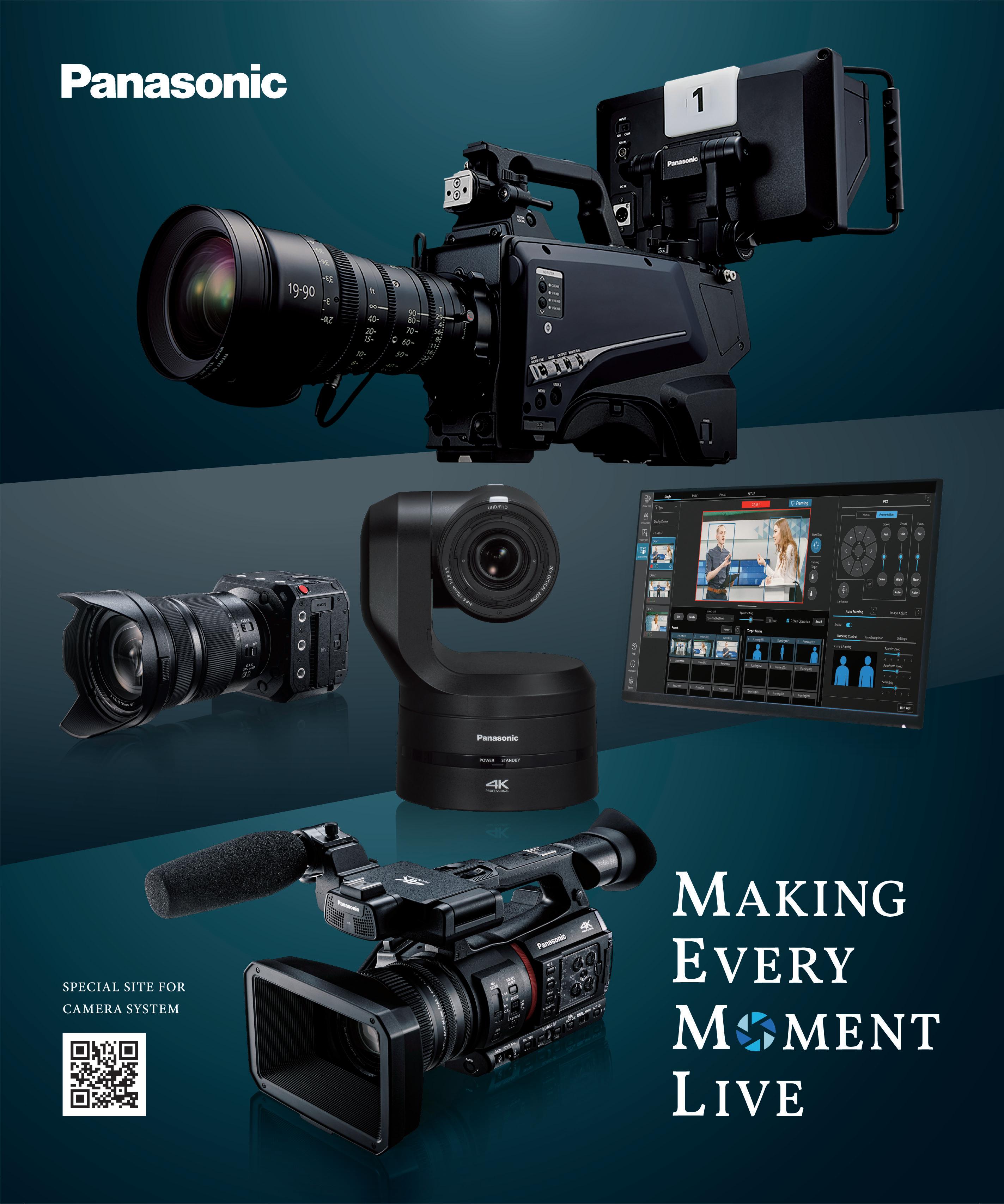


Blackmagic URSA Cine 12K LF
Revolutionary digital film camera with large format RGBW 36x24mm sensor up to 12288 x 8040 resolution, 16 stops dynamic range, network storage with 10G Ethernet, WiFi and Blackmagic Cloud global sync!
From $6,995
Blackmagic URSA Cine 17K 65
Extremely large format digital film camera with 65mm RGBW 51x24mm sensor up to 17520 x 8040 resolution and 16 stops. Shoot 17K for giant IMAX style screens and center crop for cinema and television deliverables.
From $21,995
Blackmagic URSA Cine Immersive
World’s first immersive cinema camera with custom lens system and dual 8K sensors for stereoscopic 3D immersive image capture designed specifically to capture Apple Immersive Video for Apple Vision Pro.
$29,995